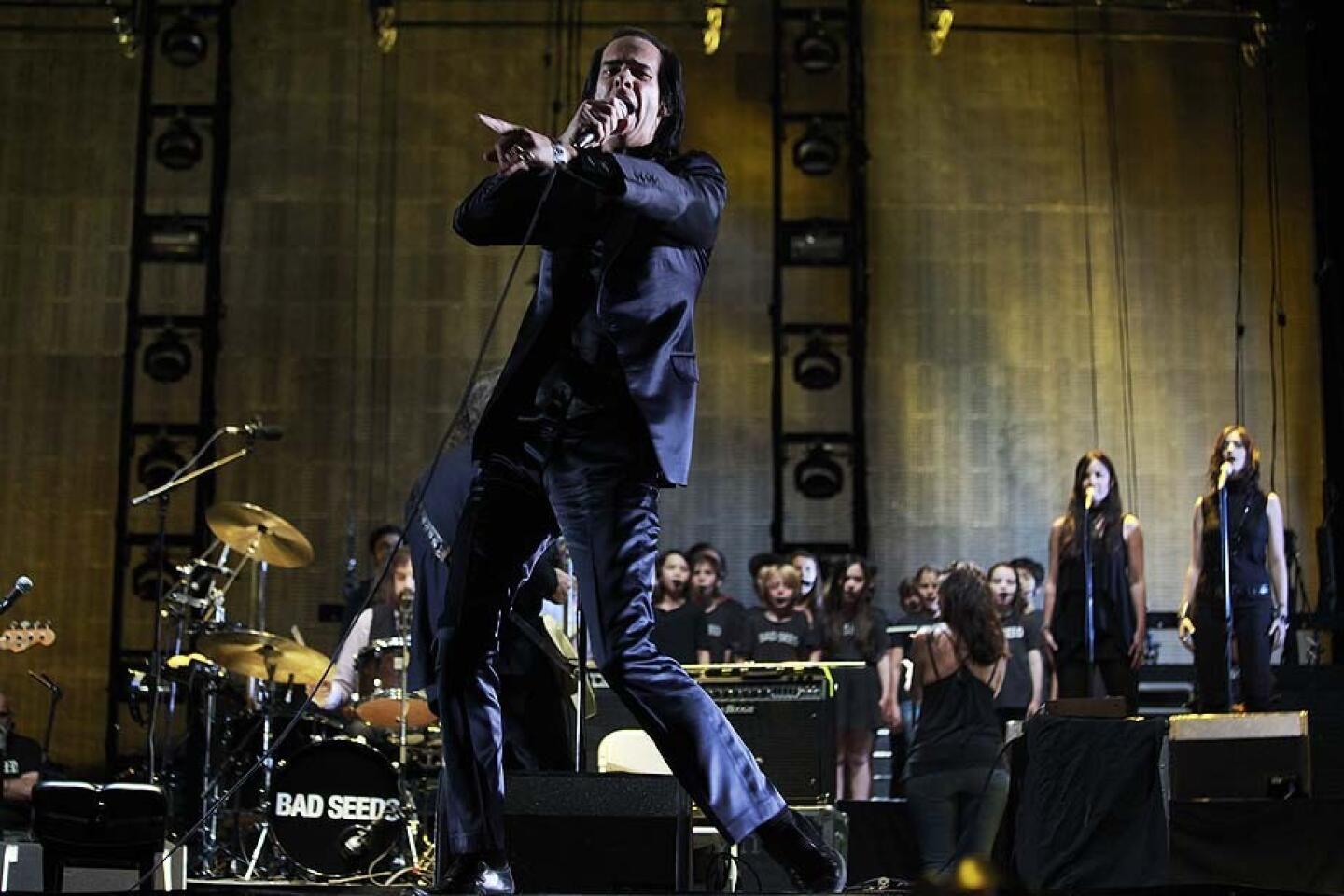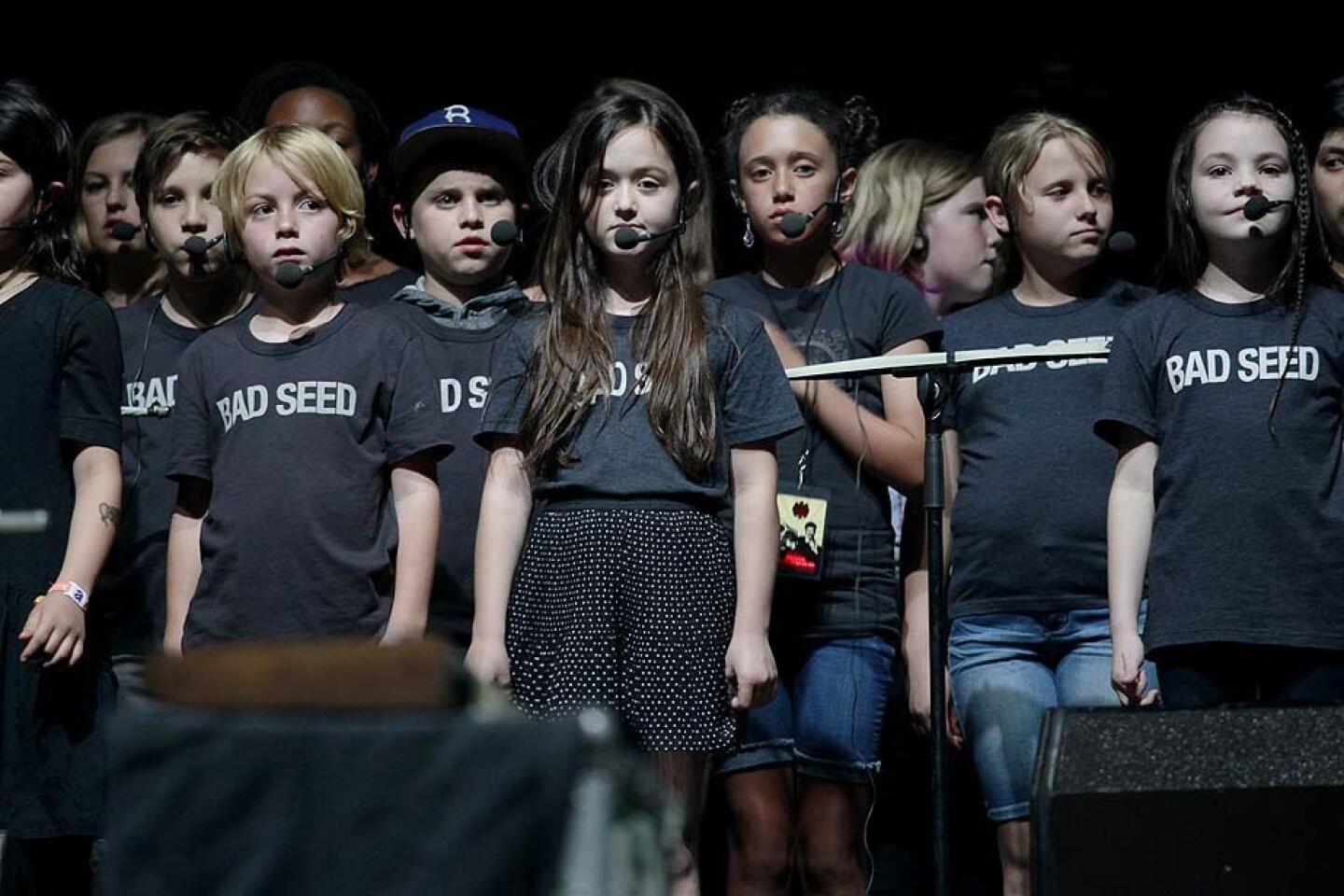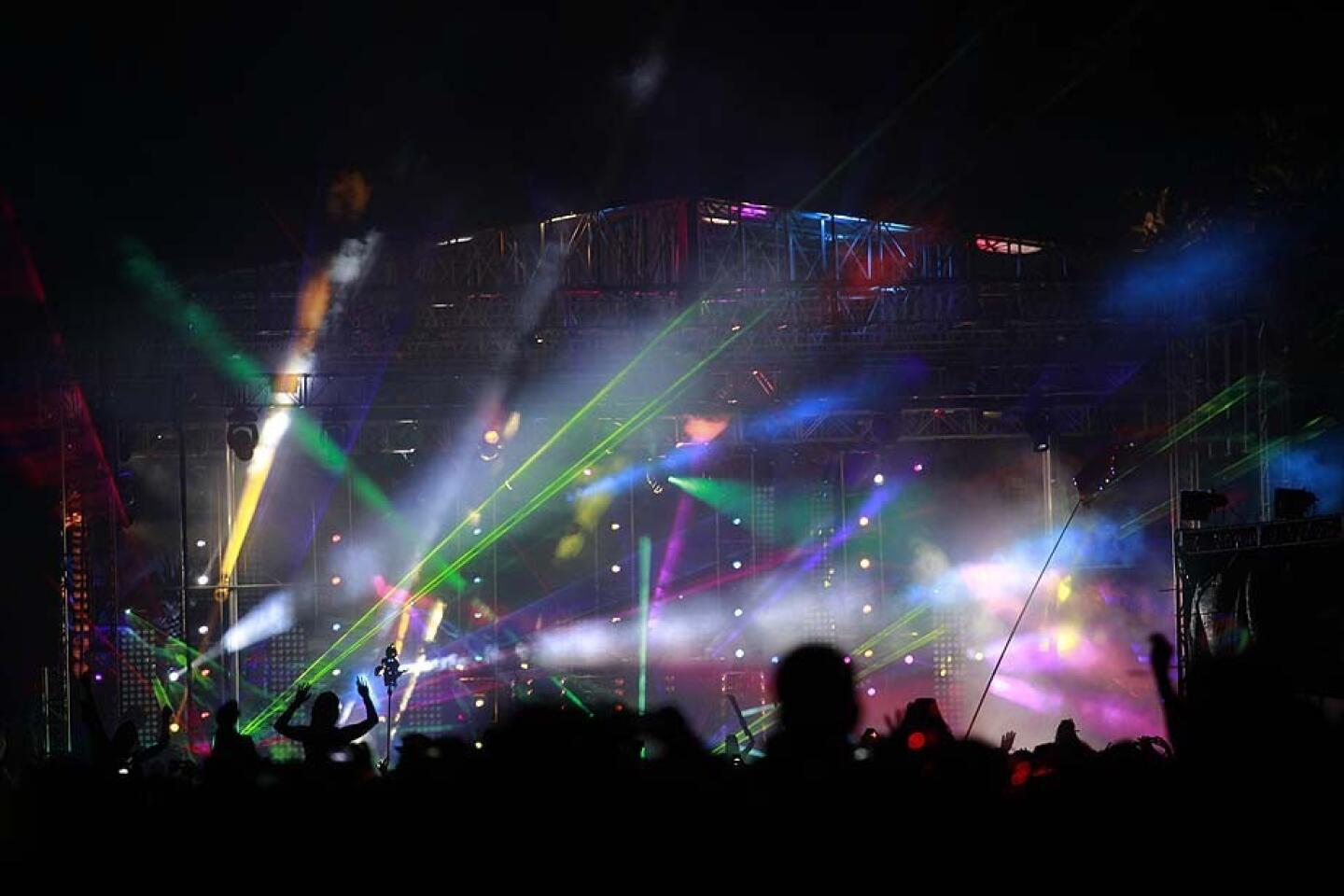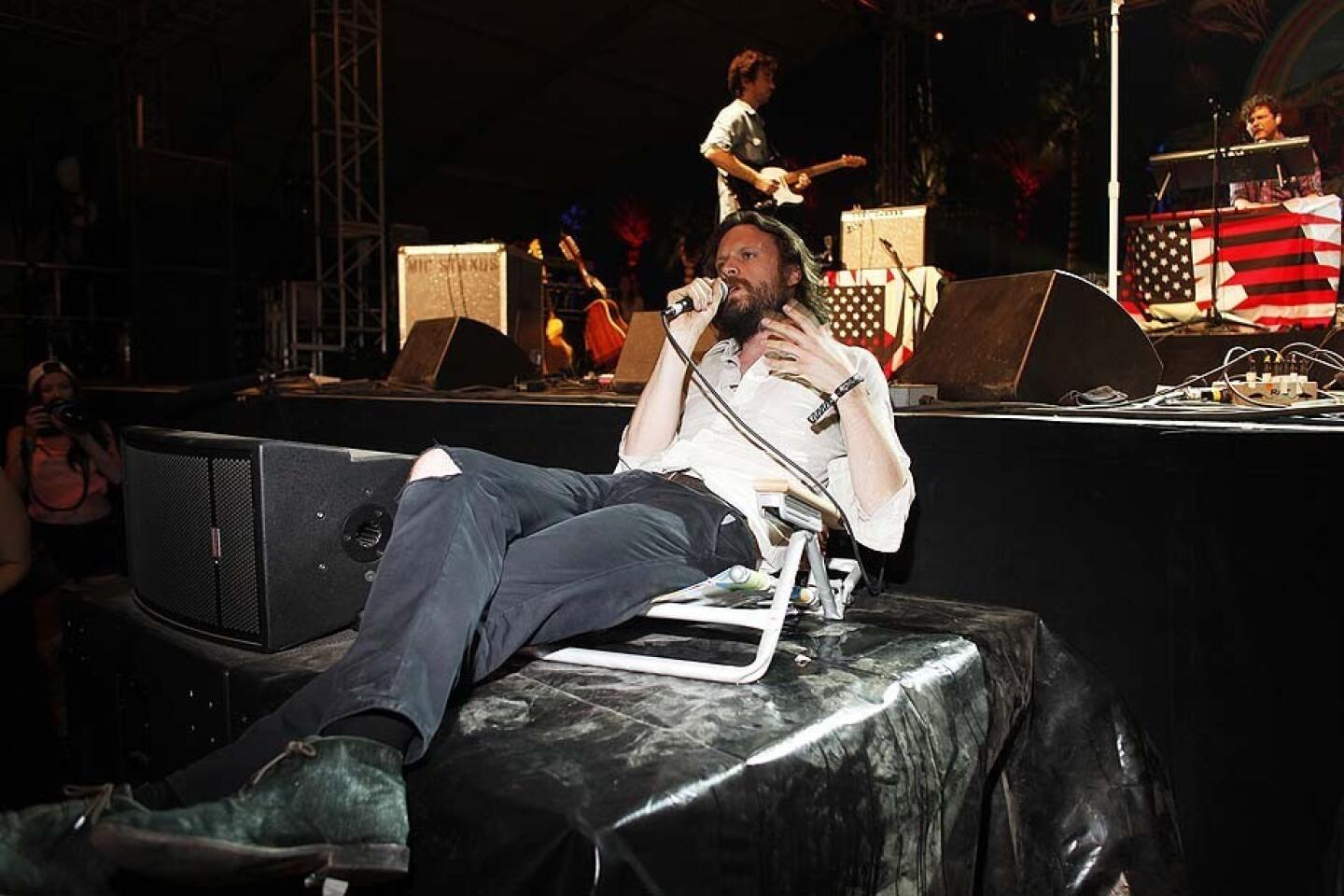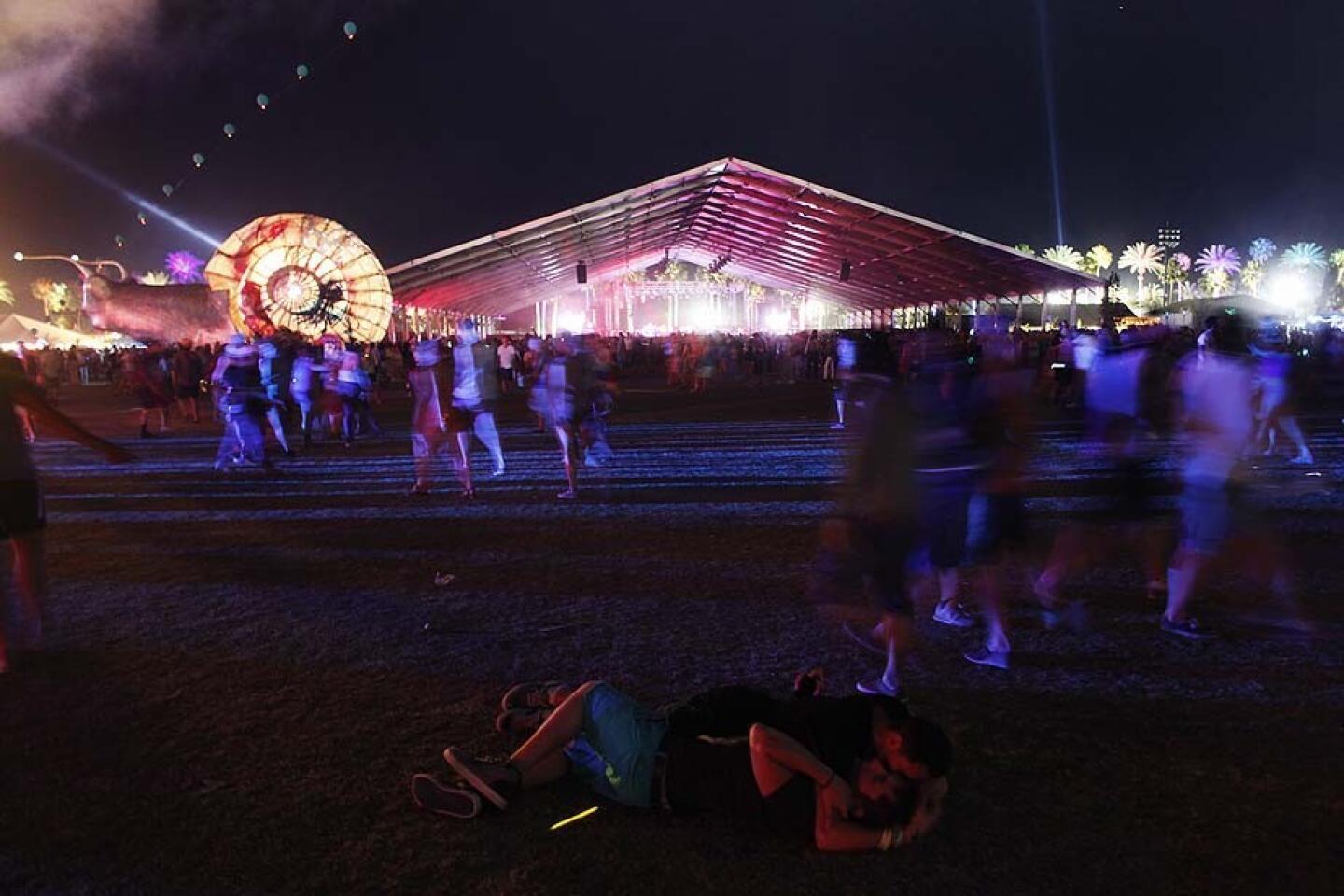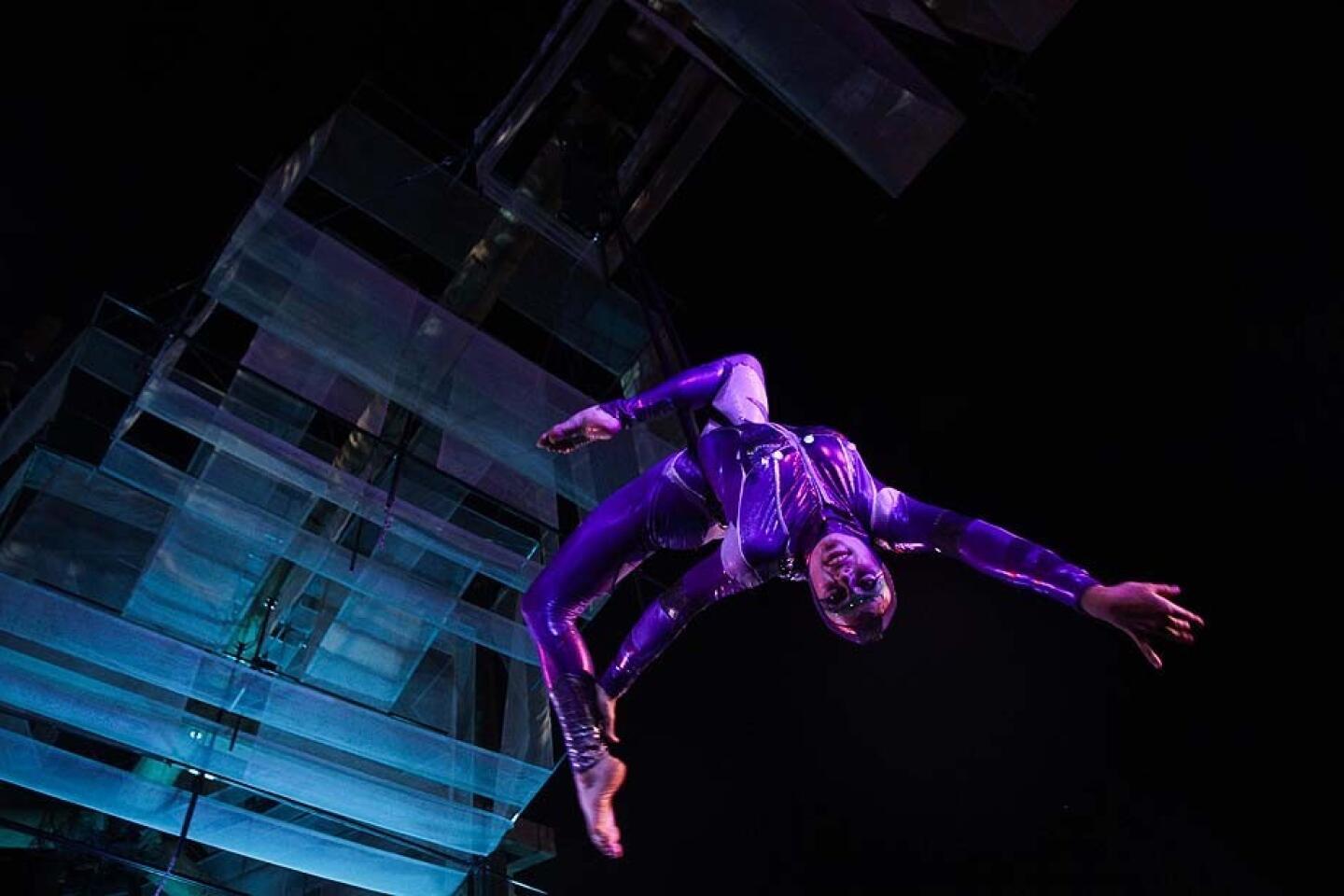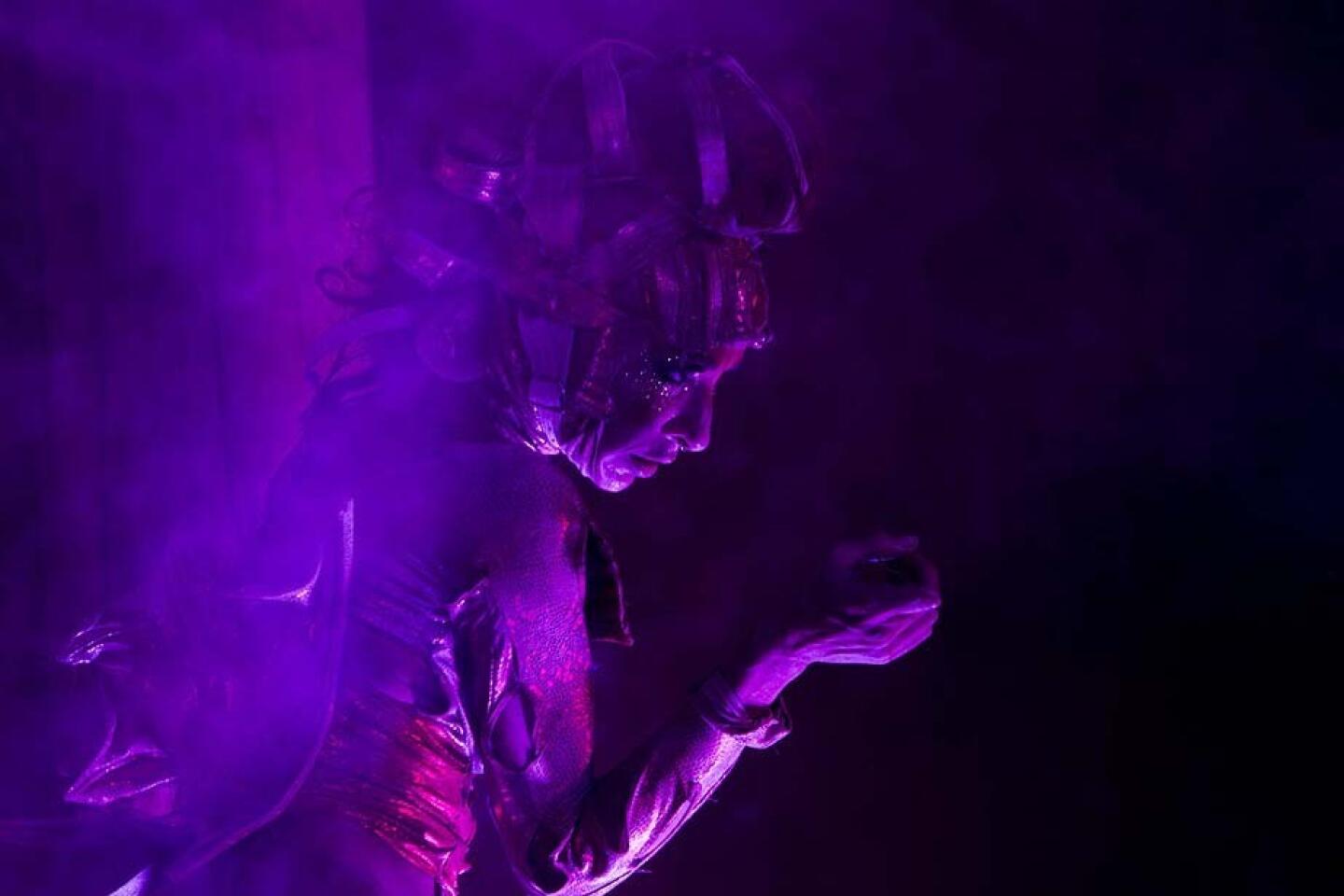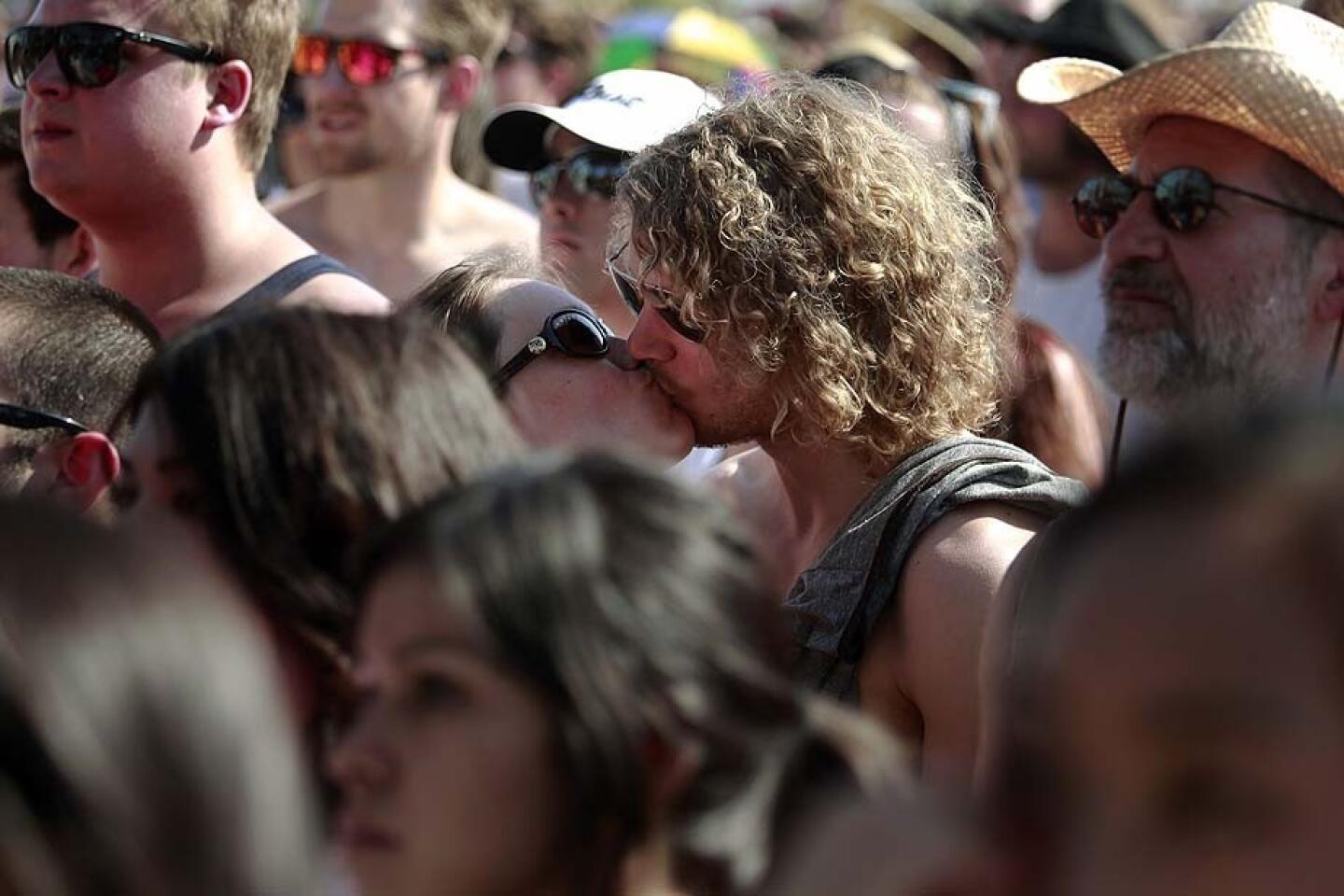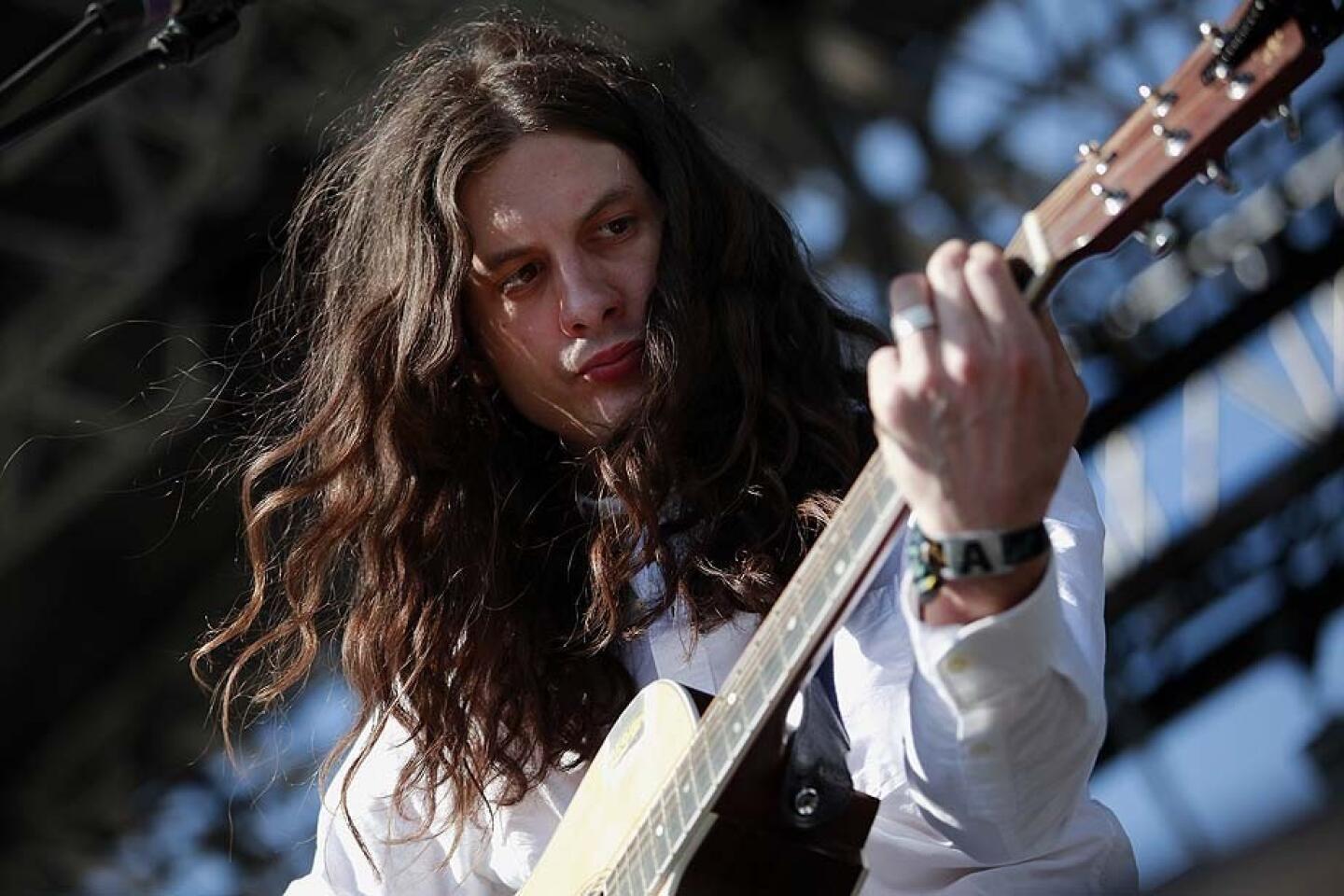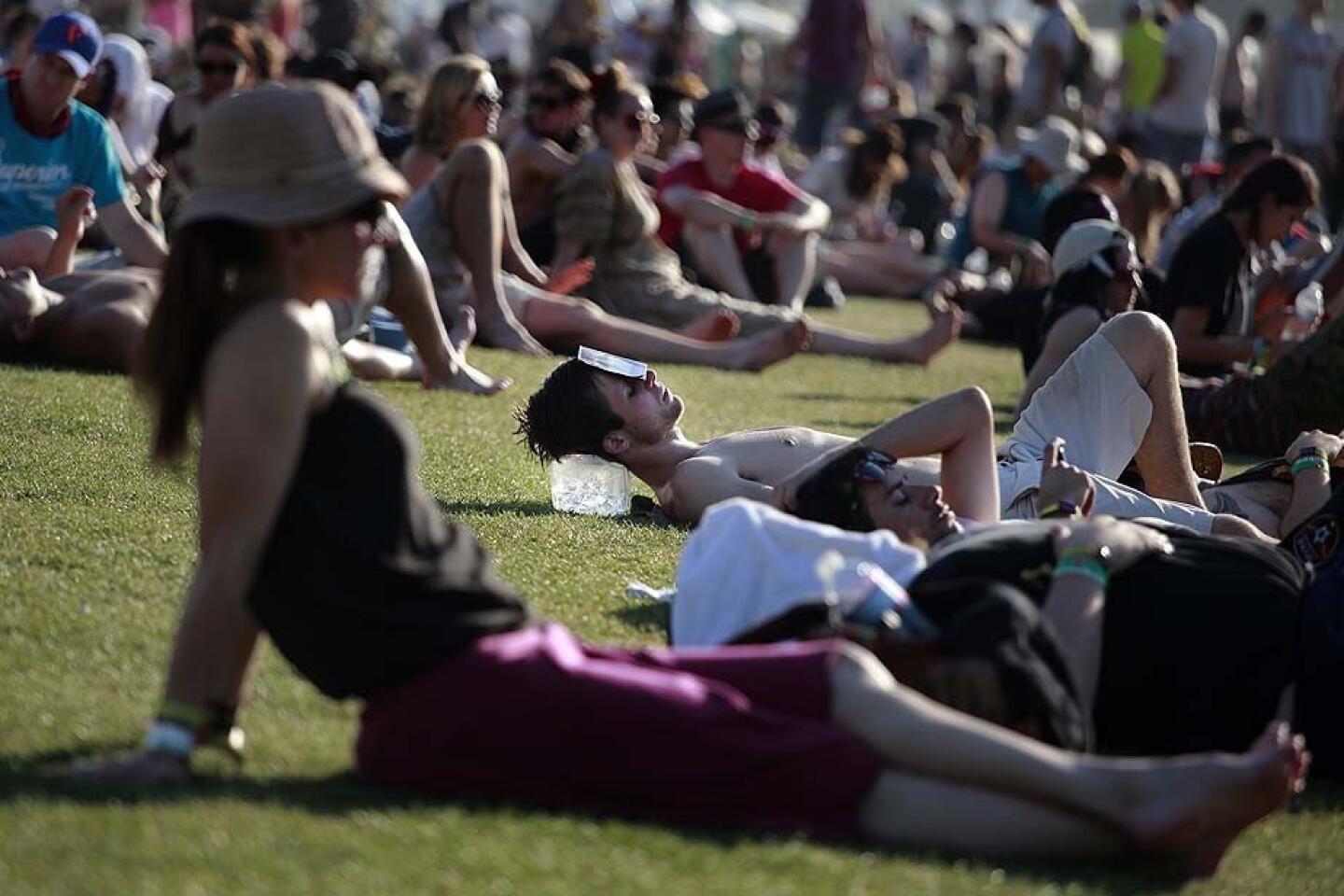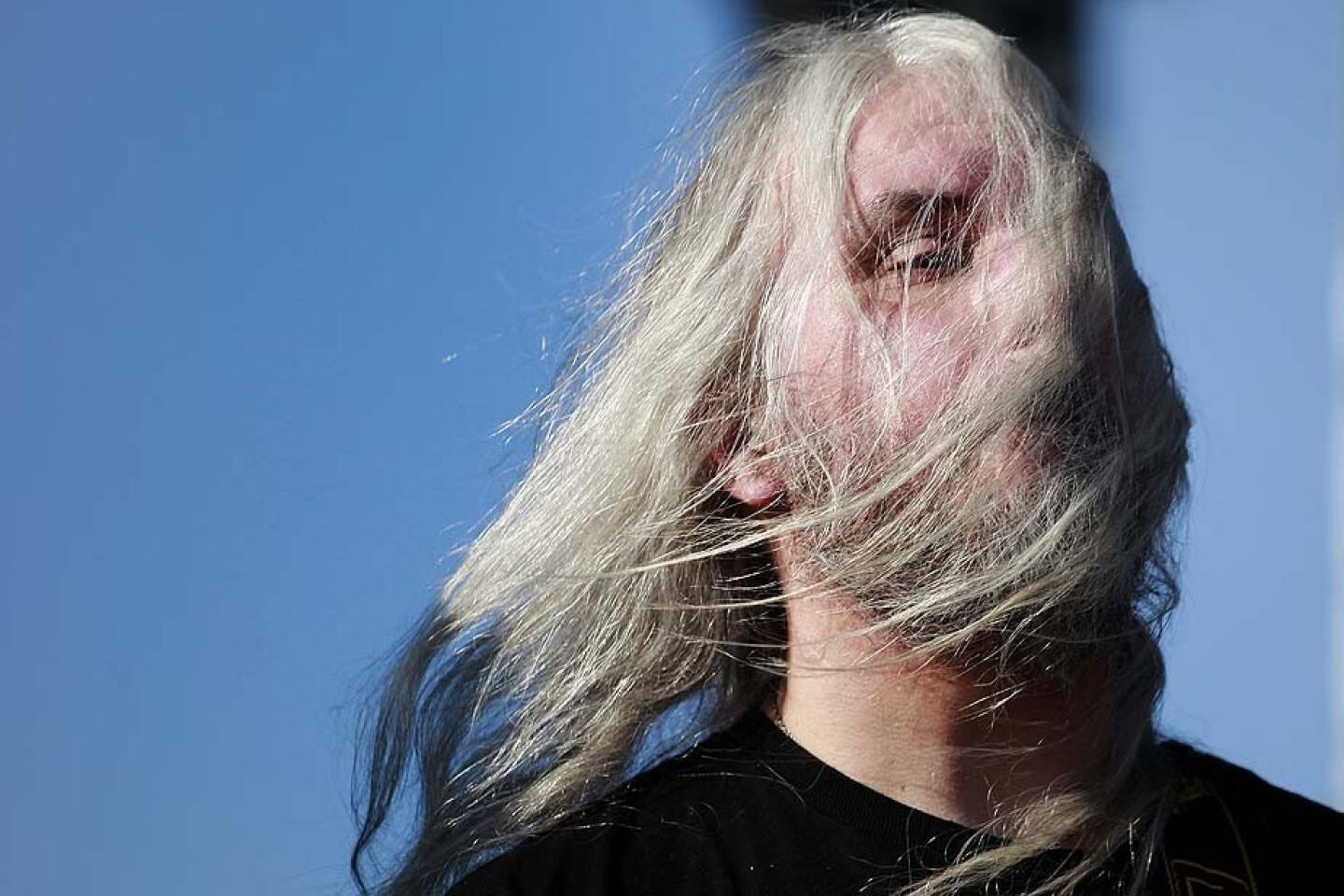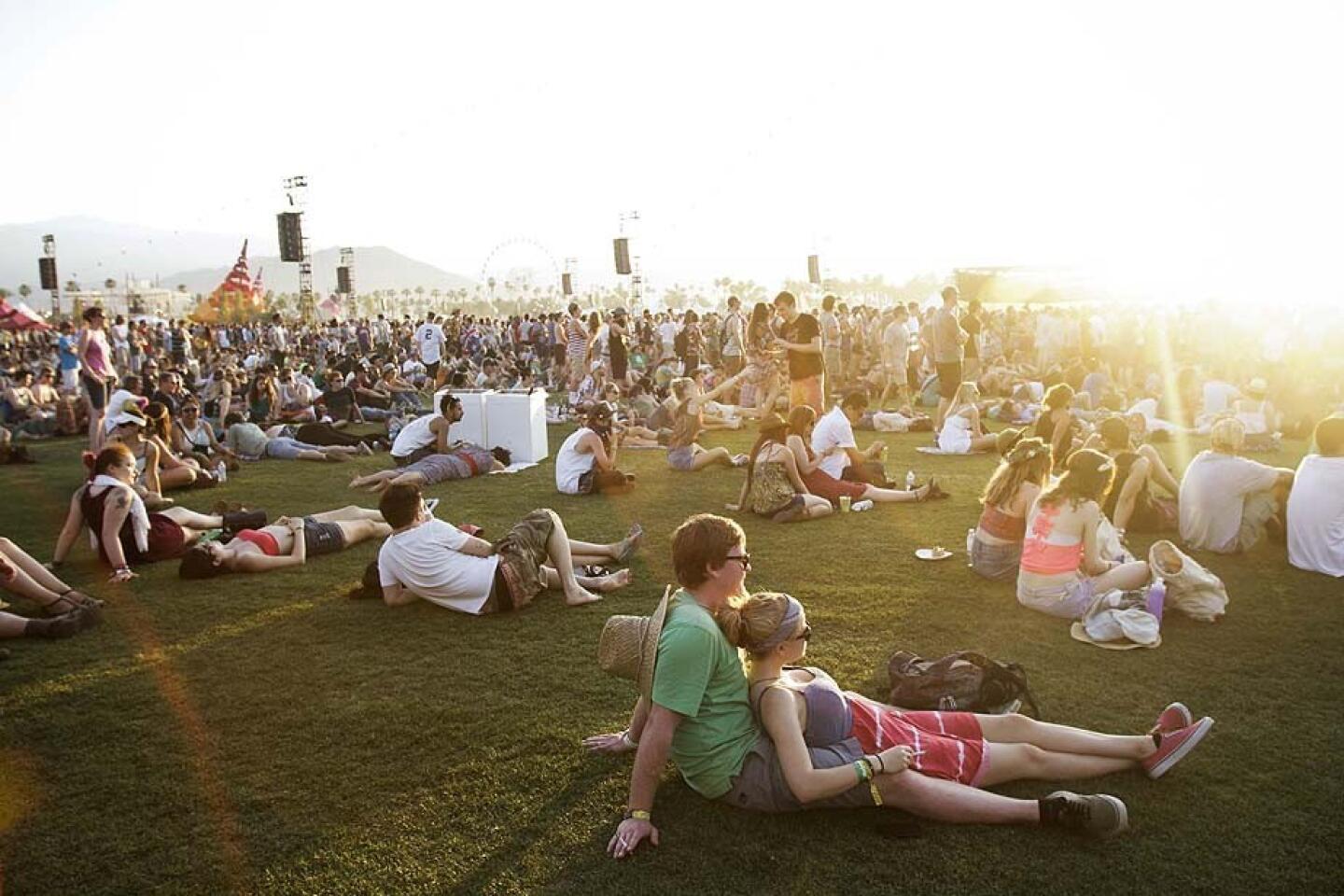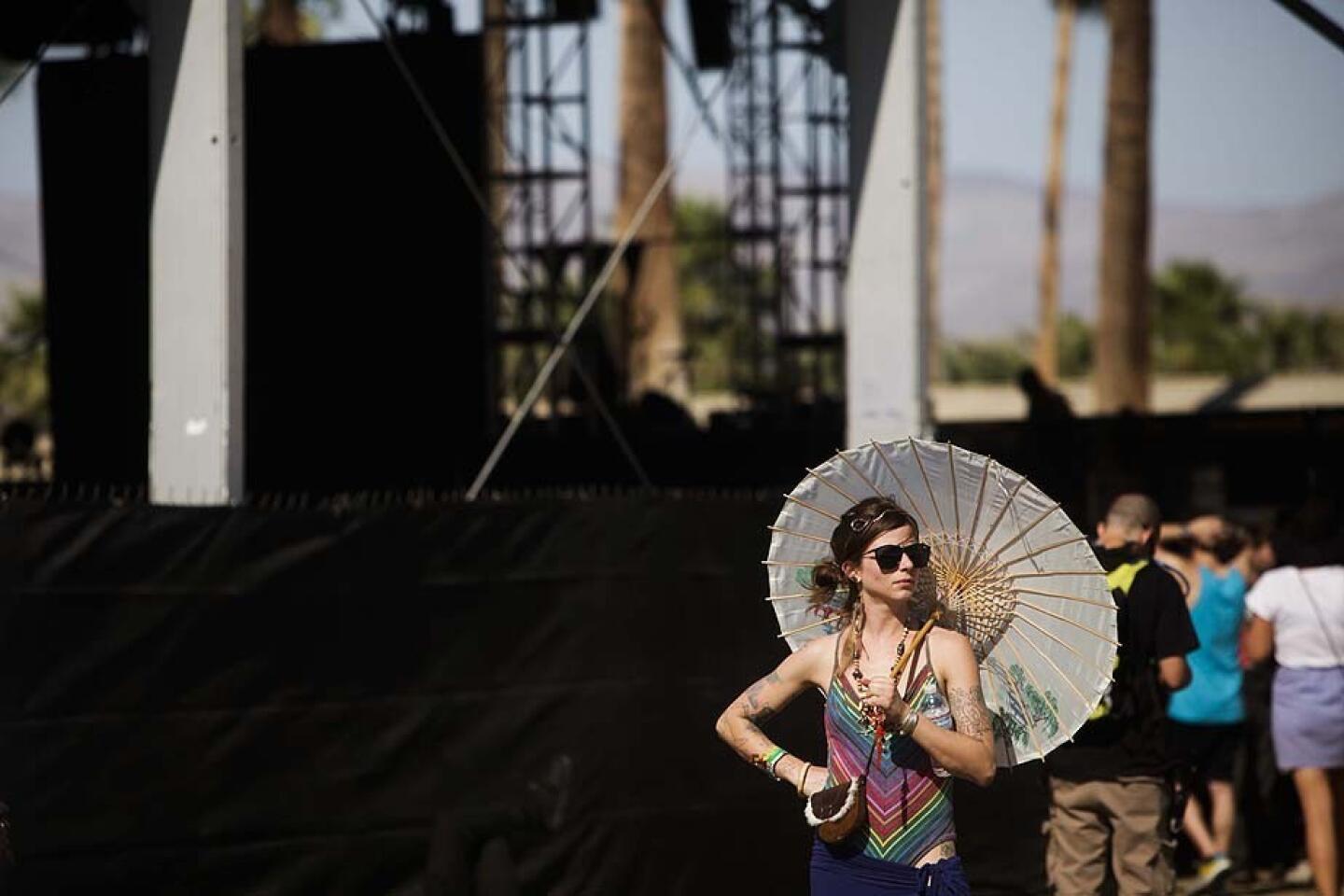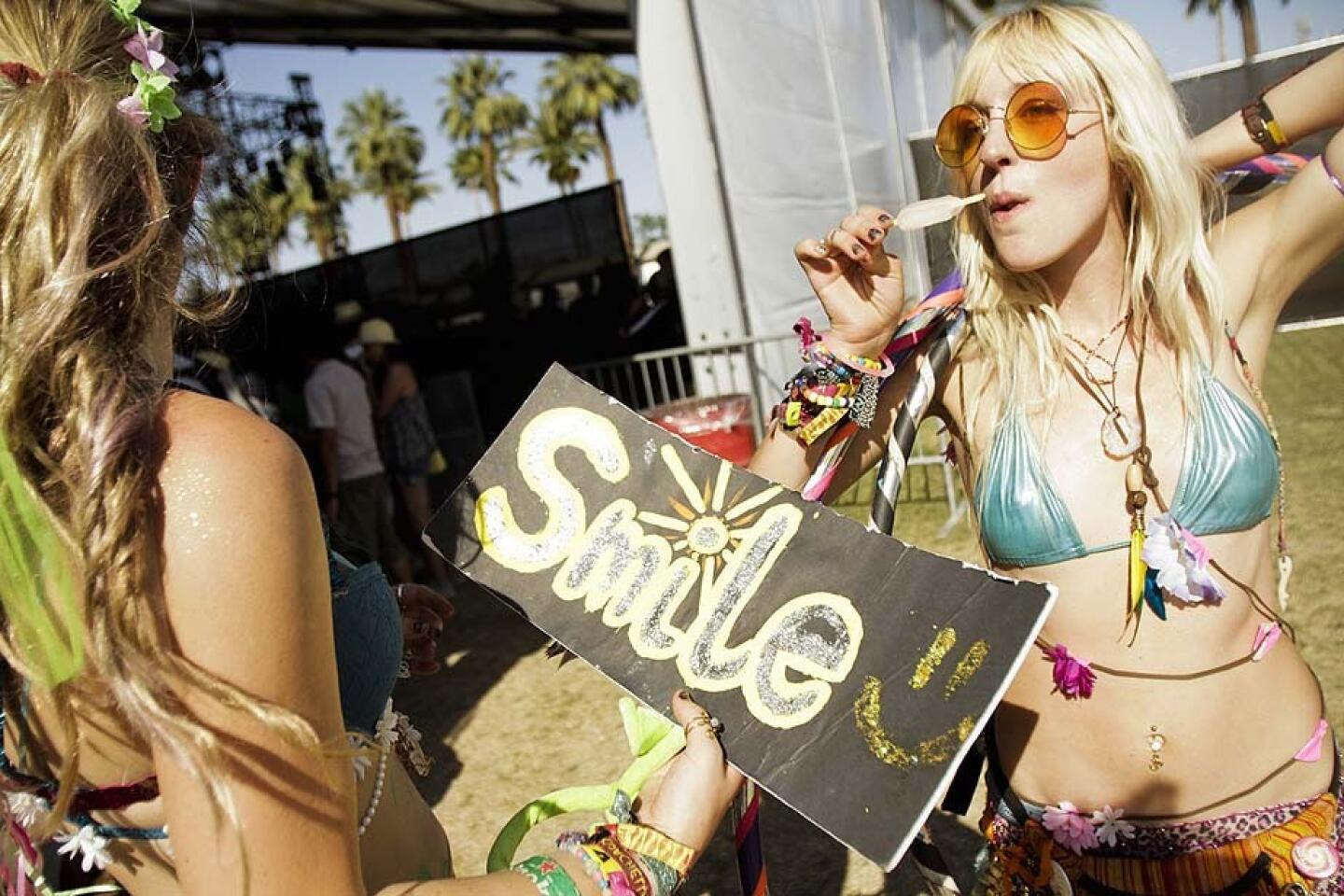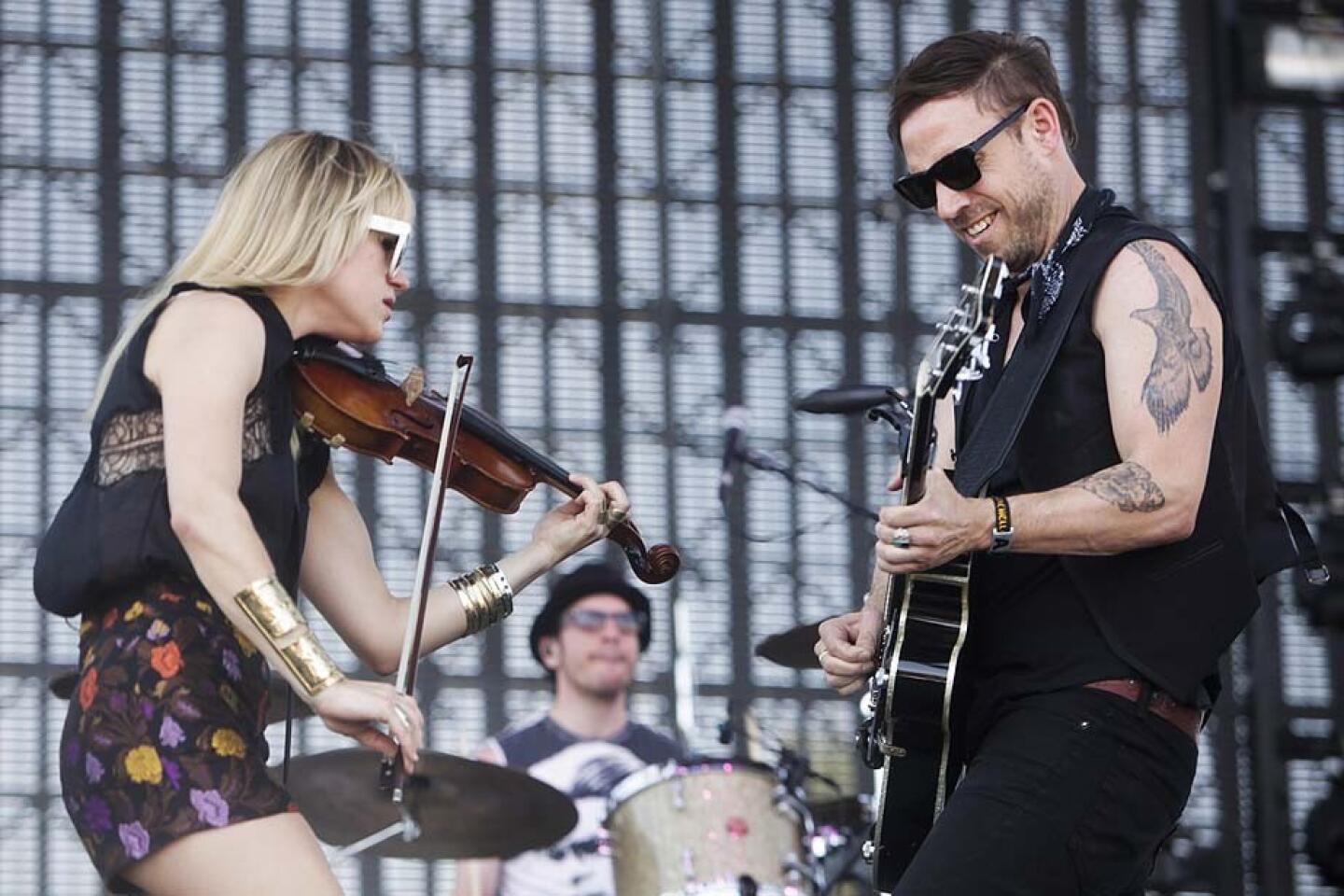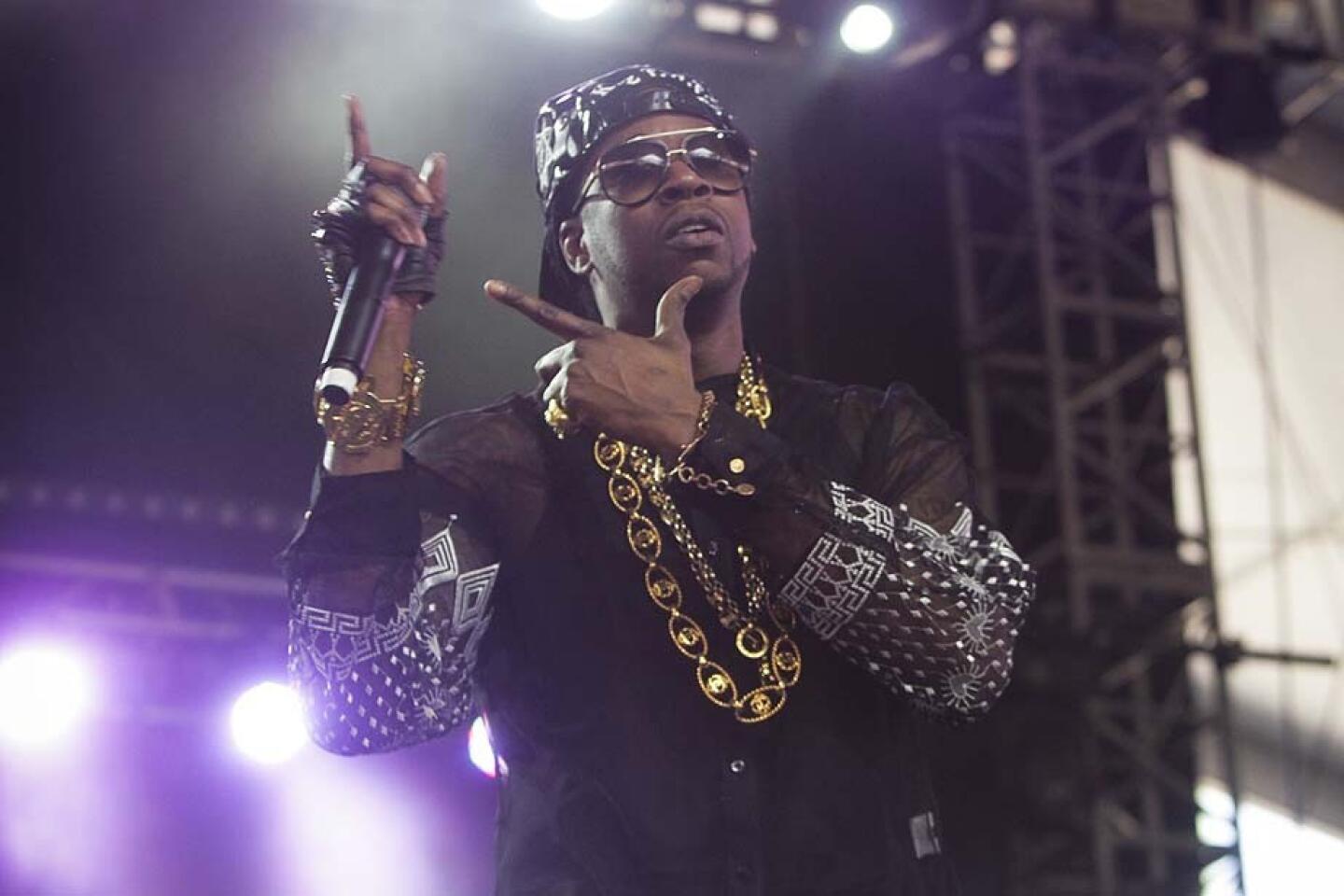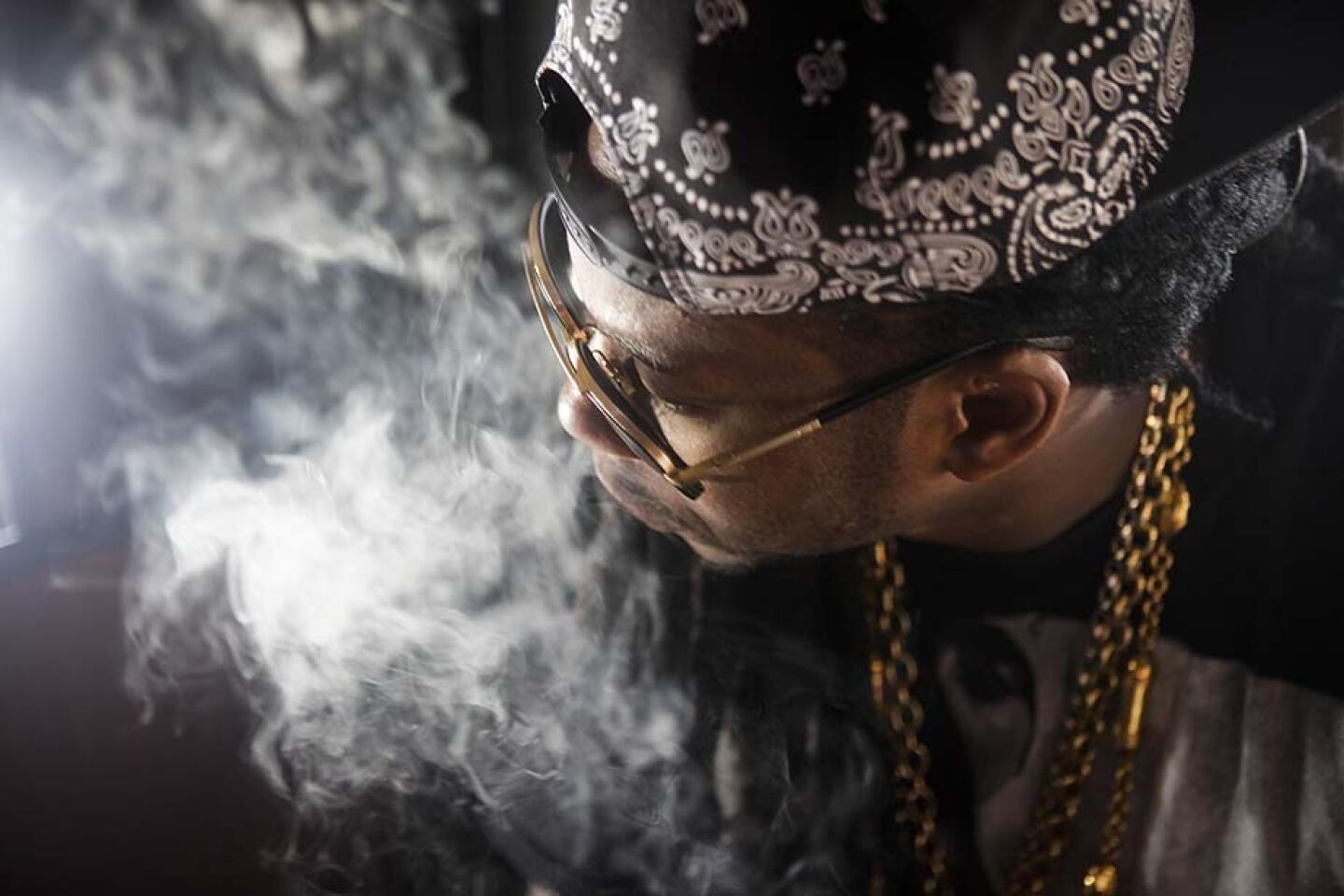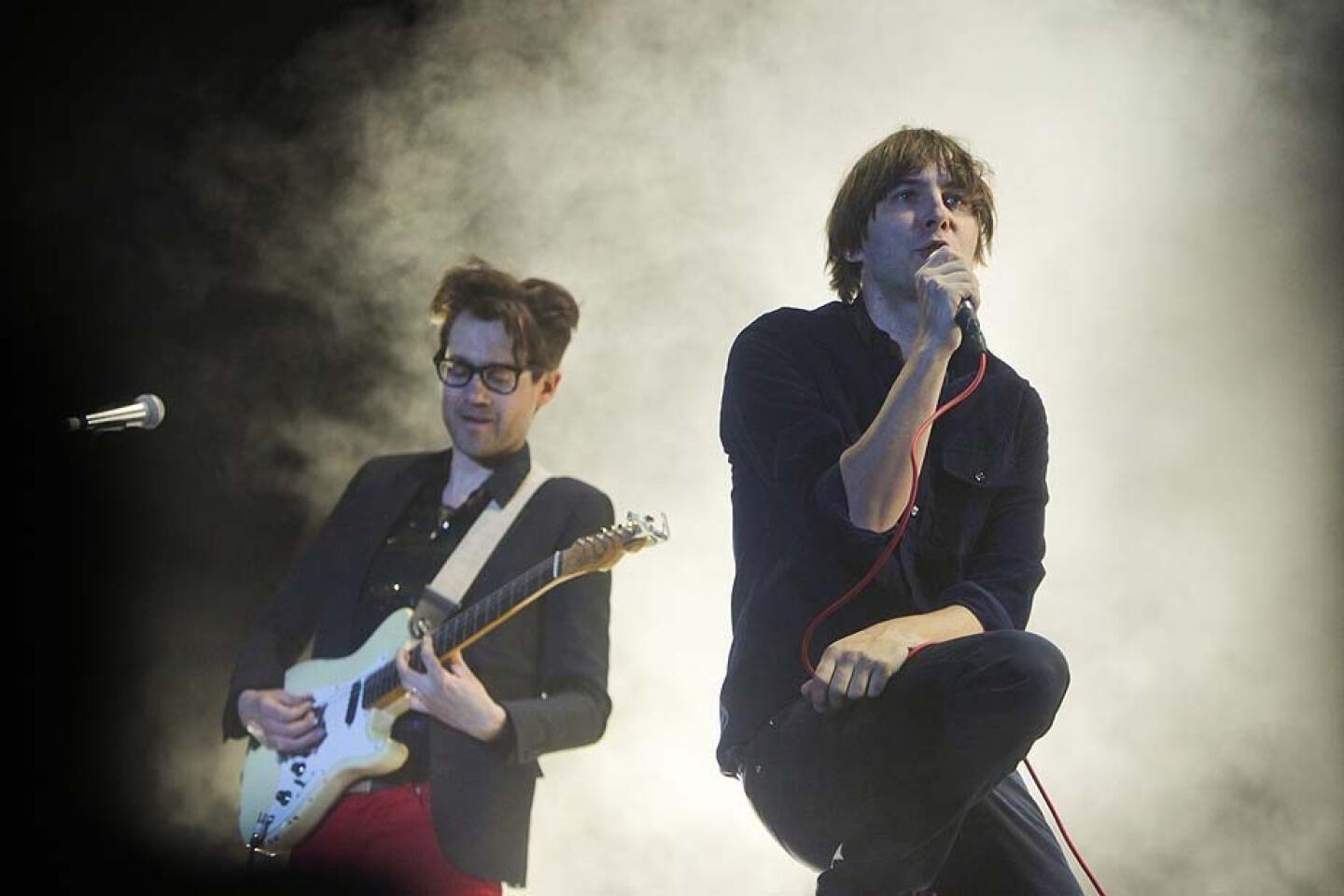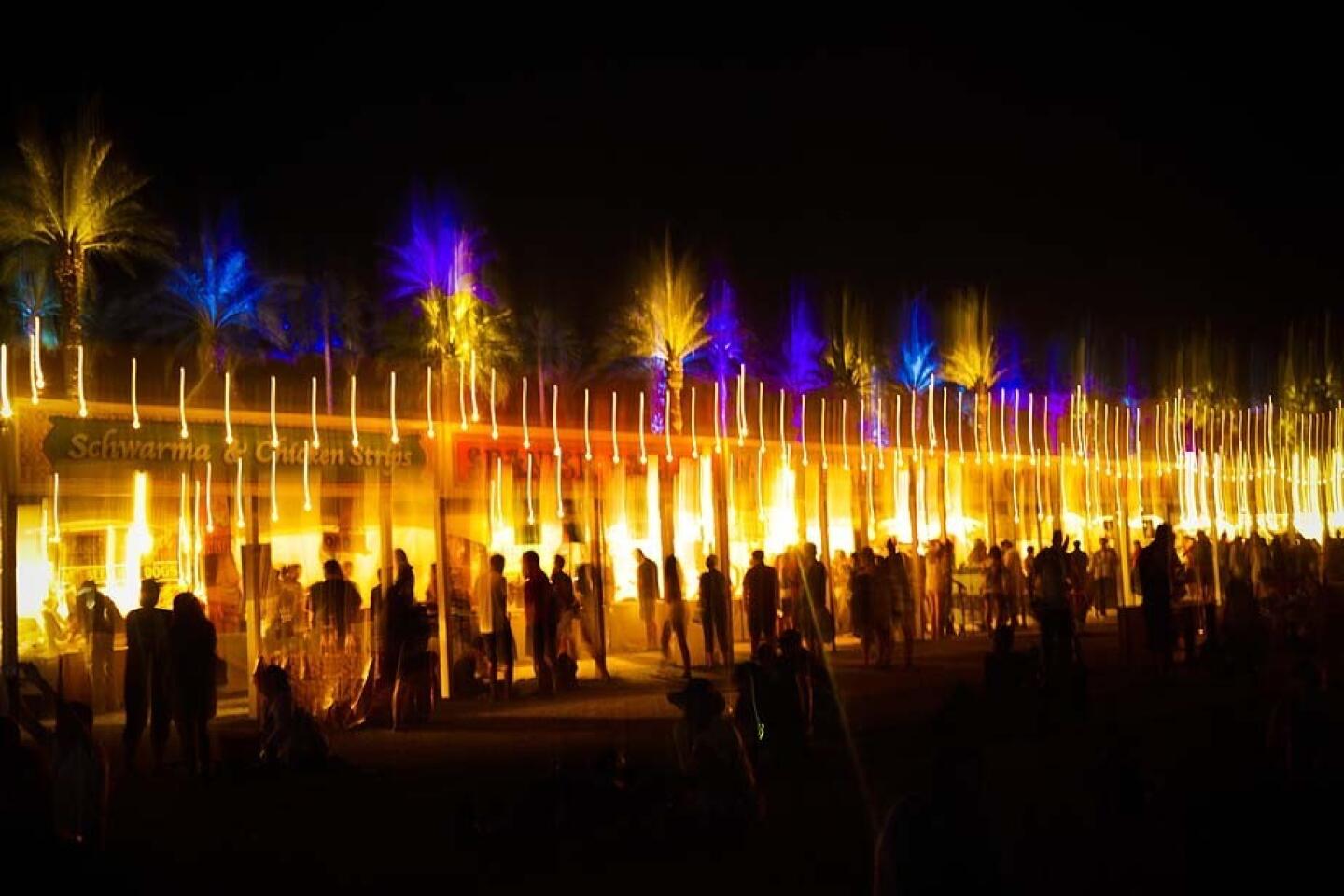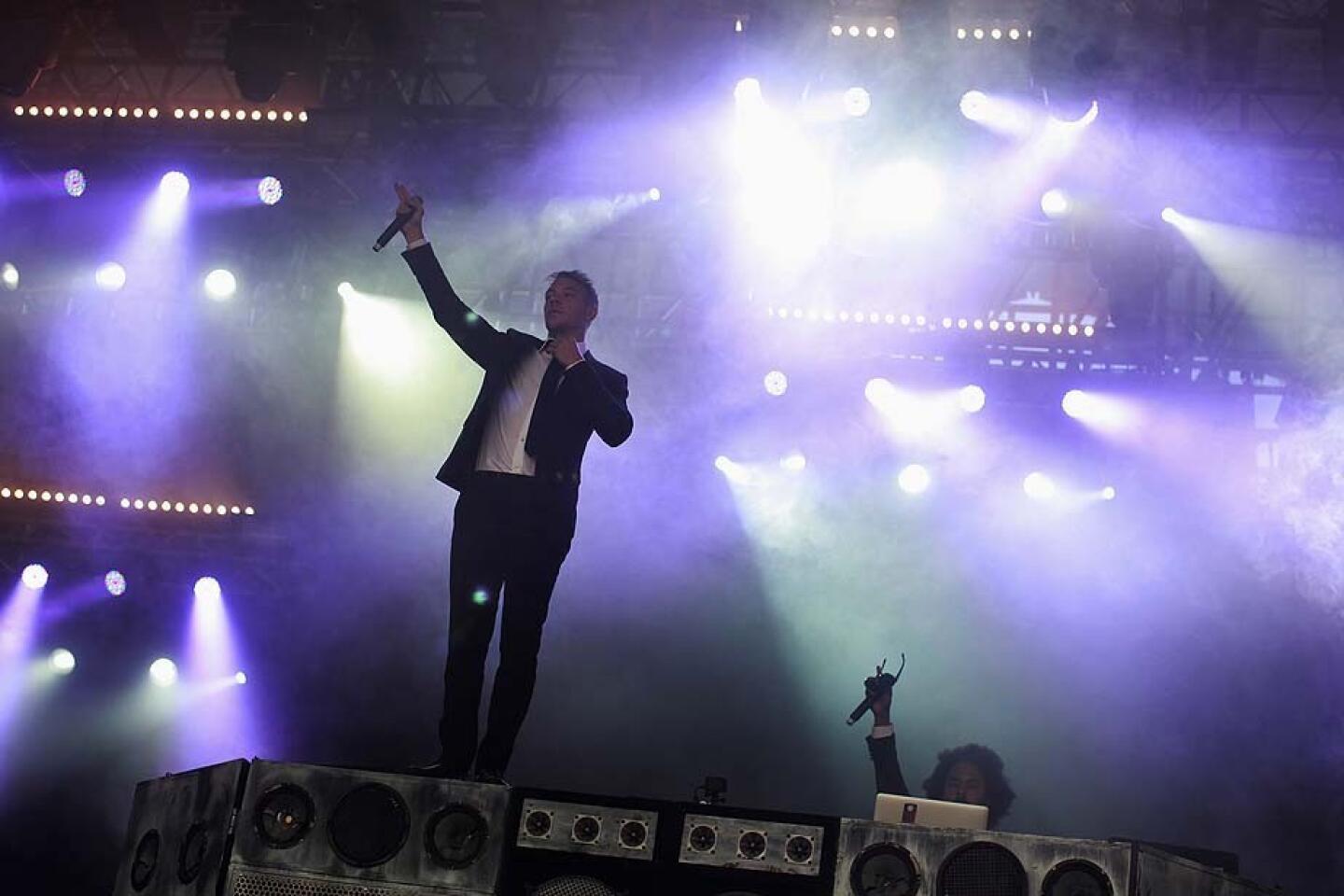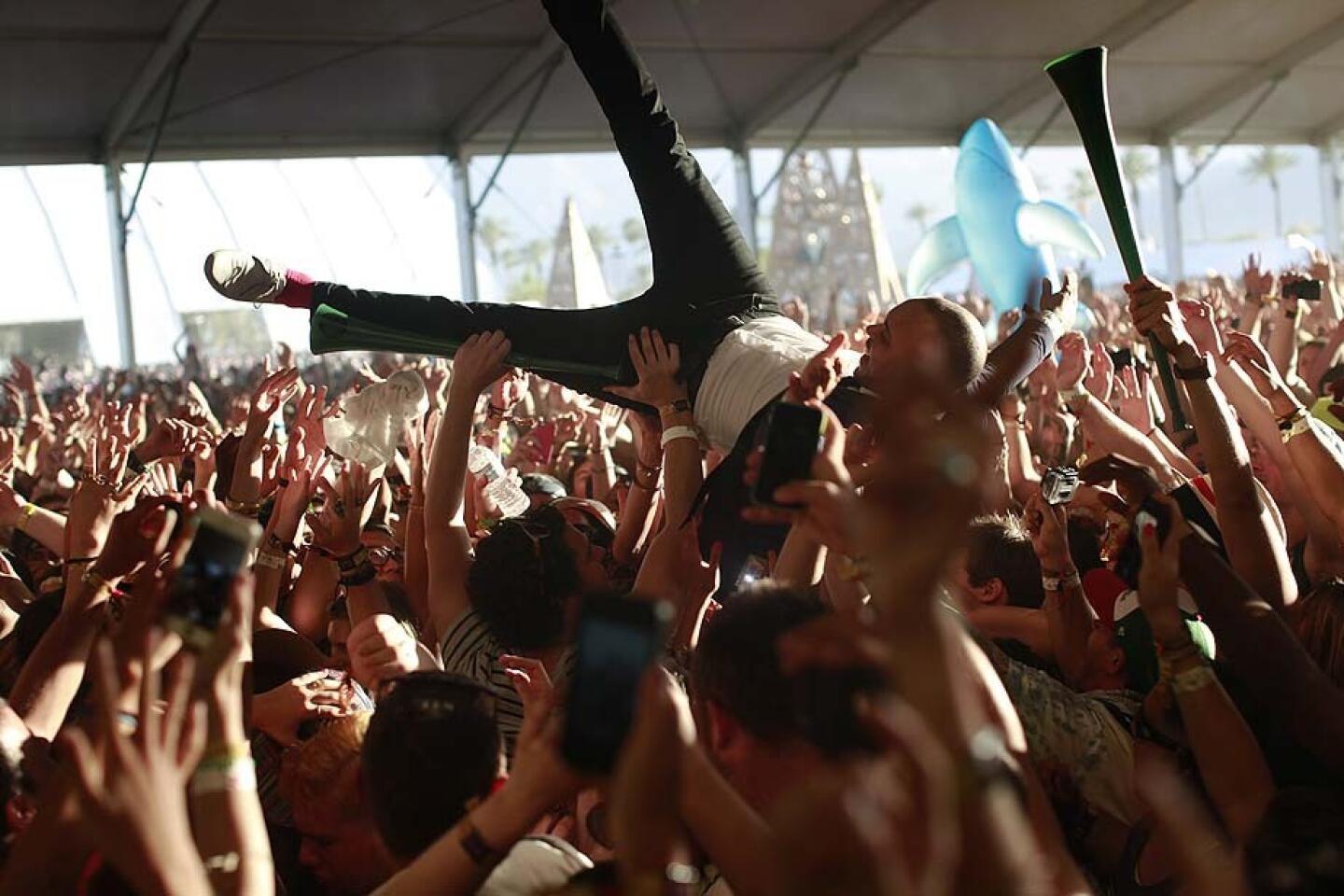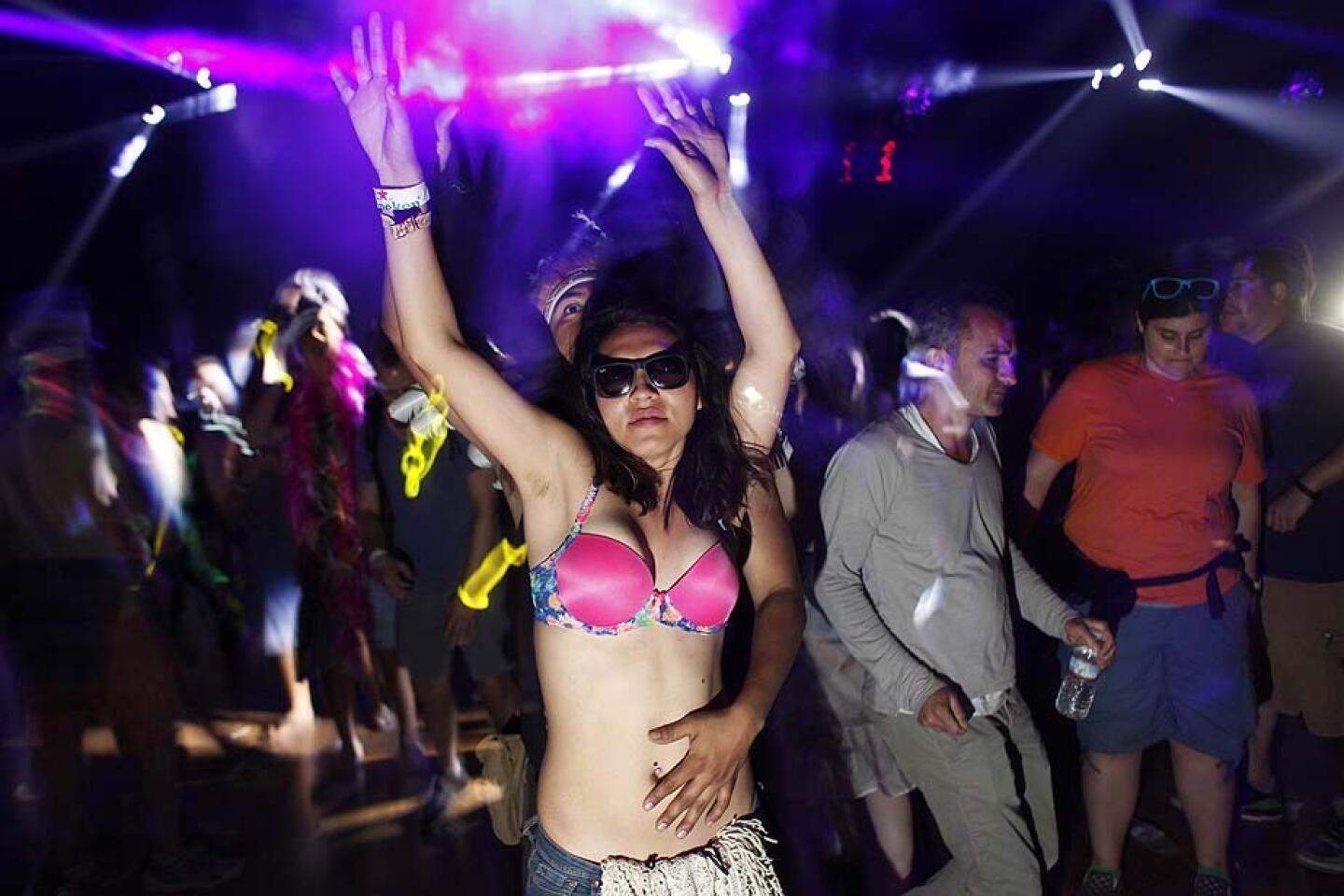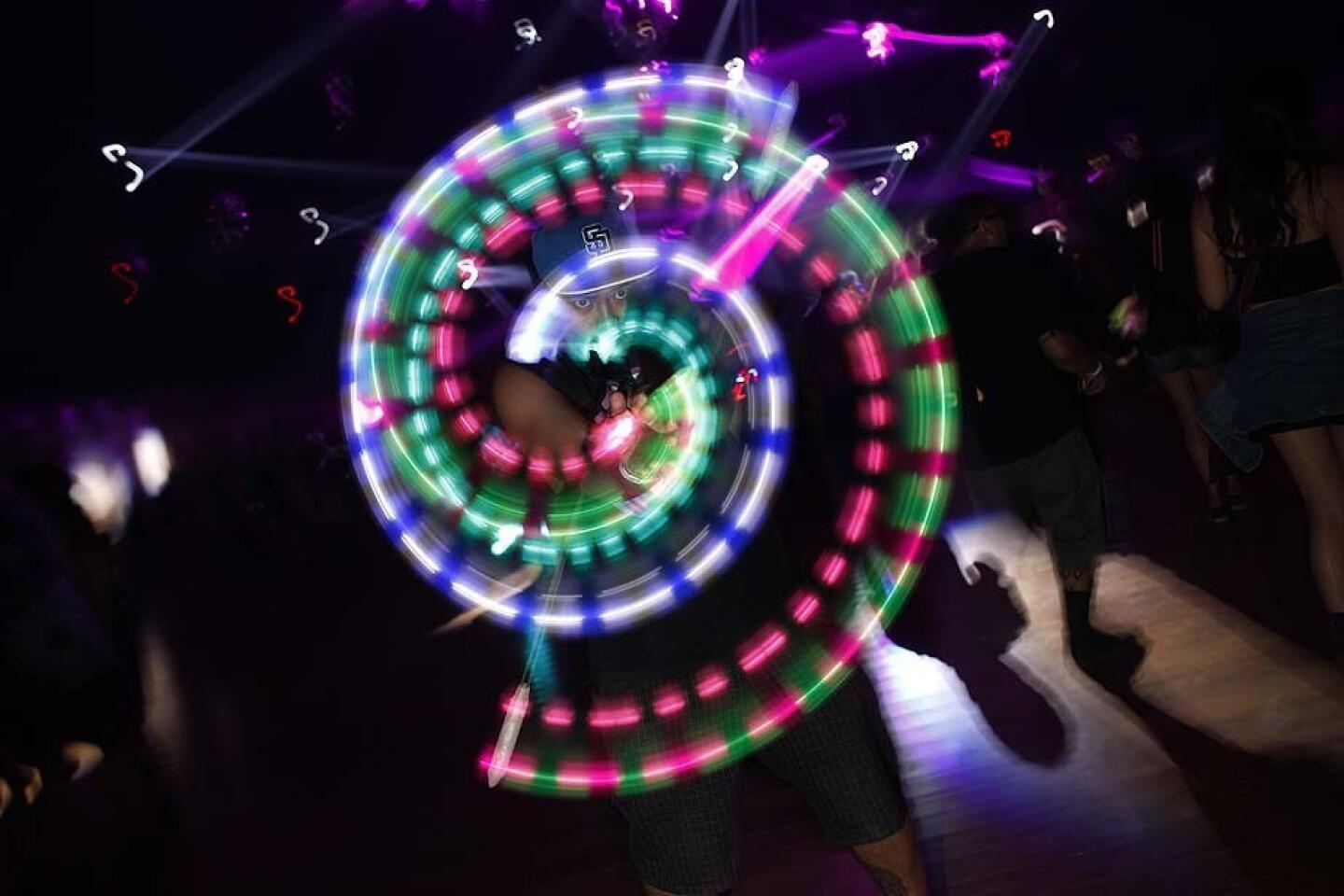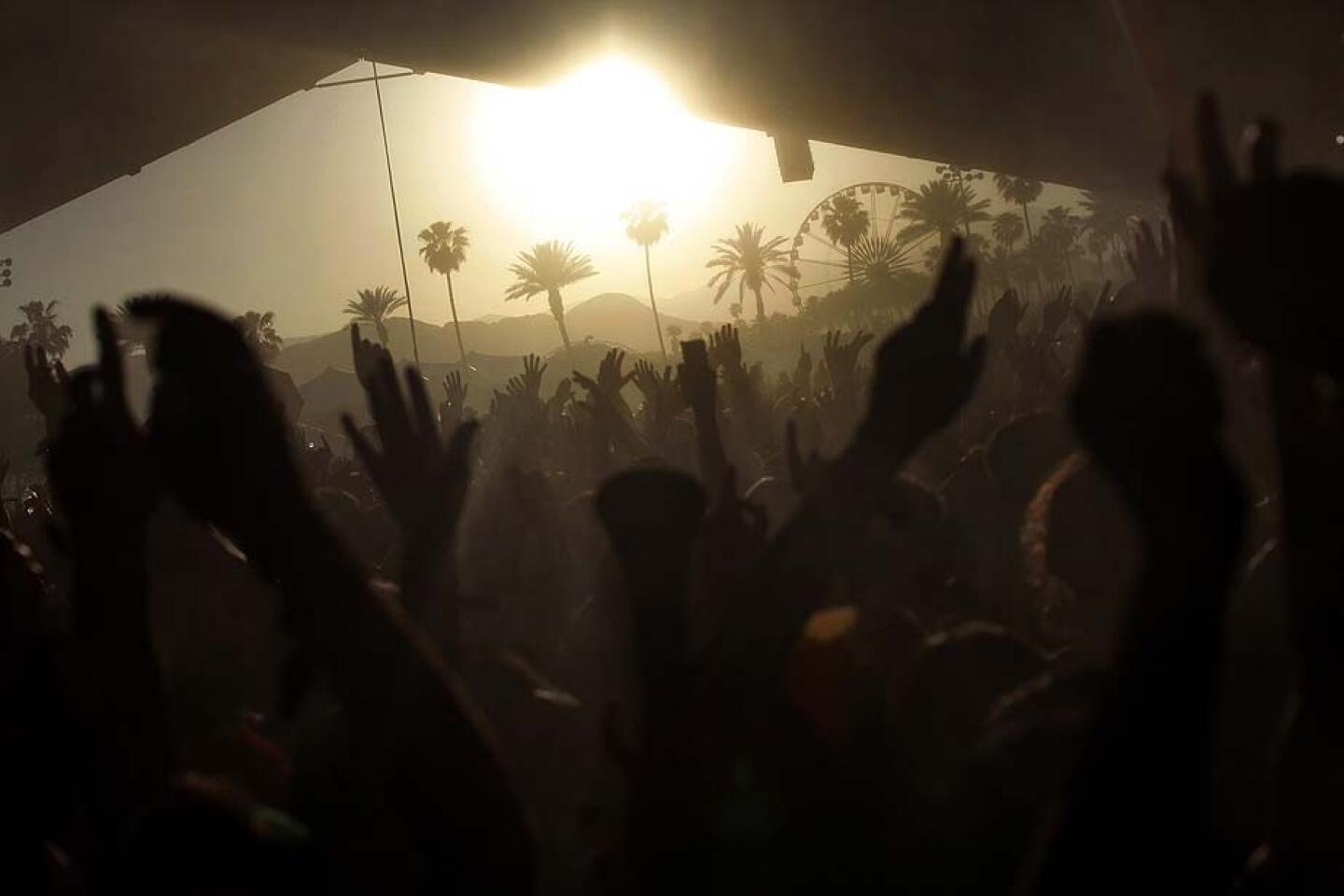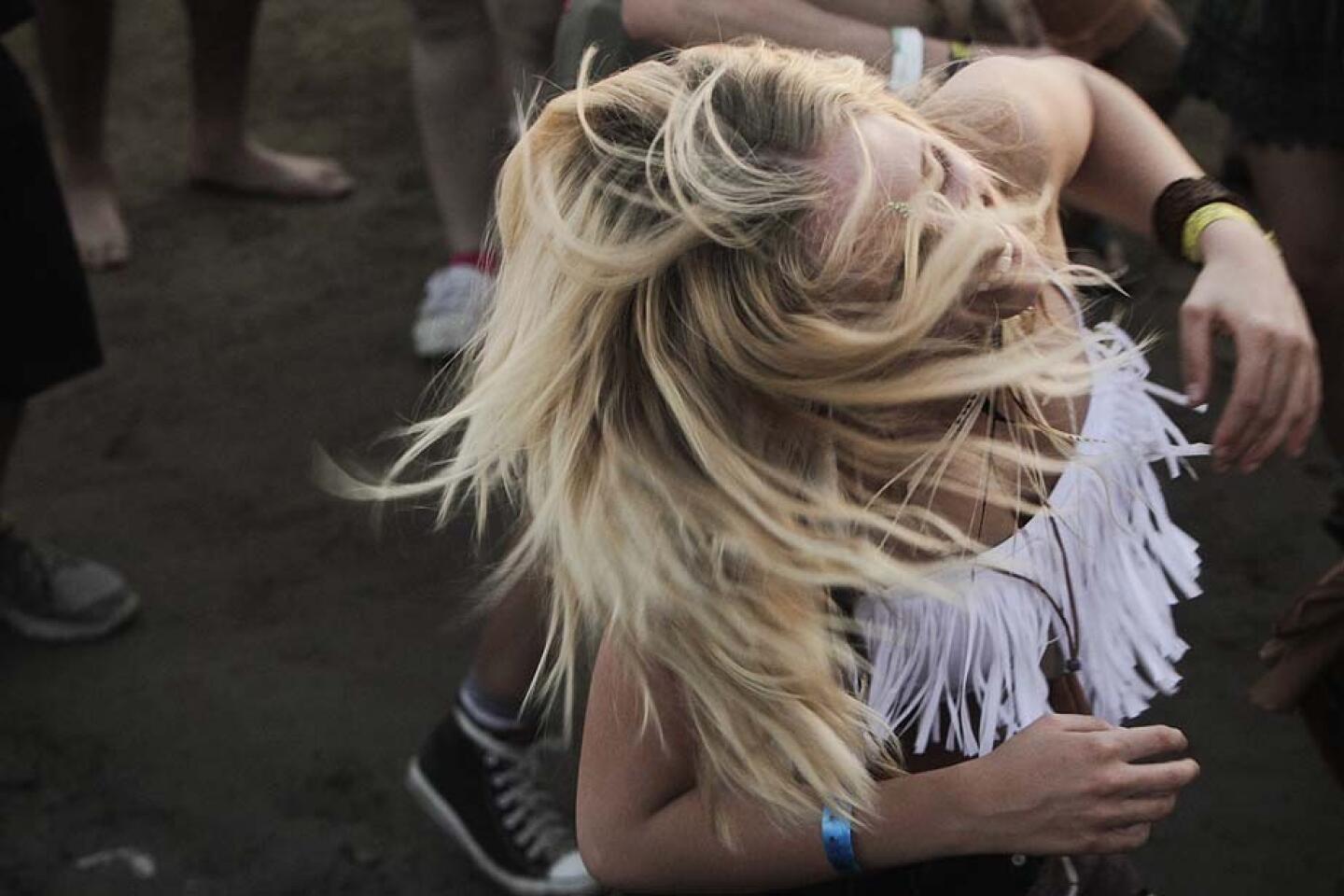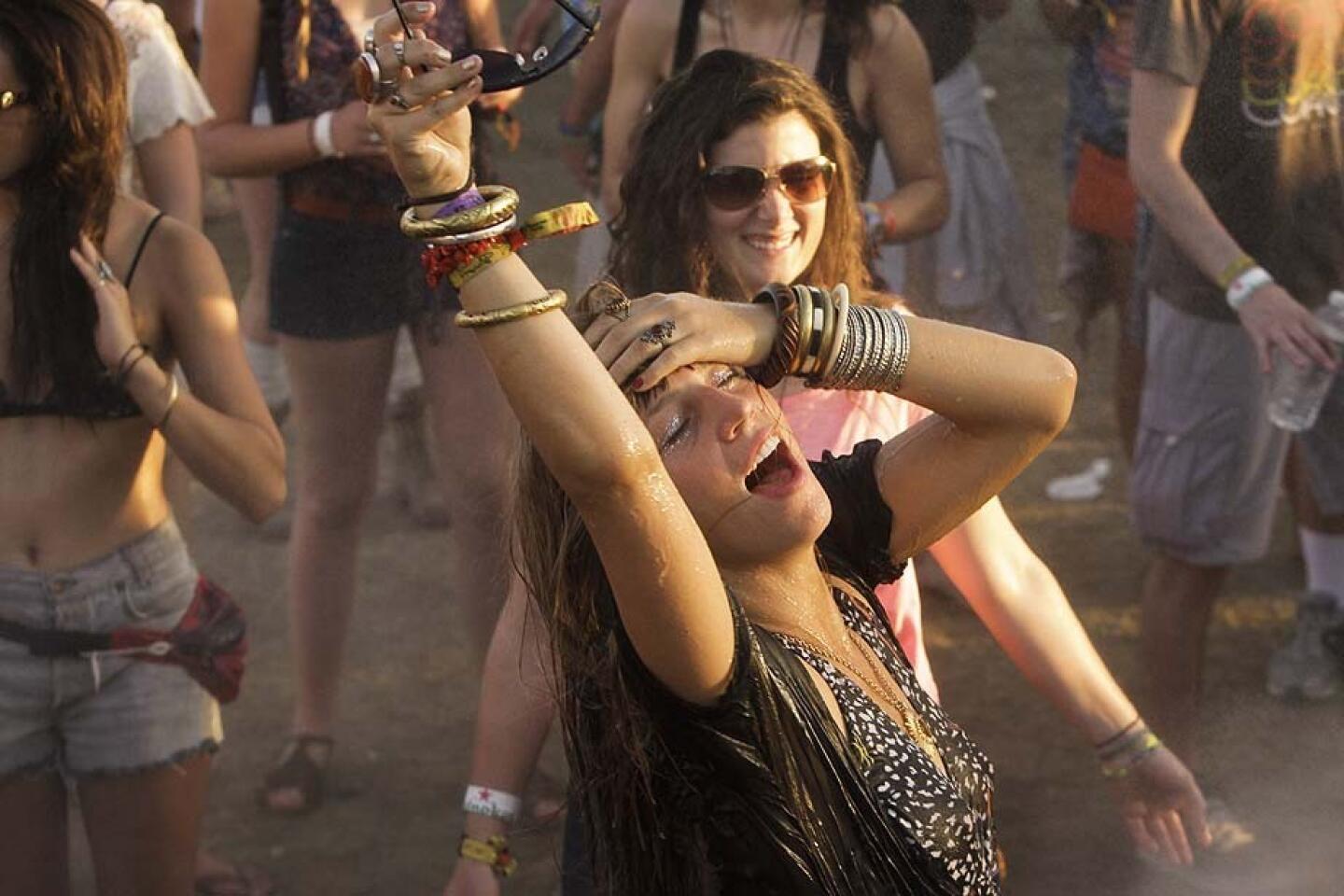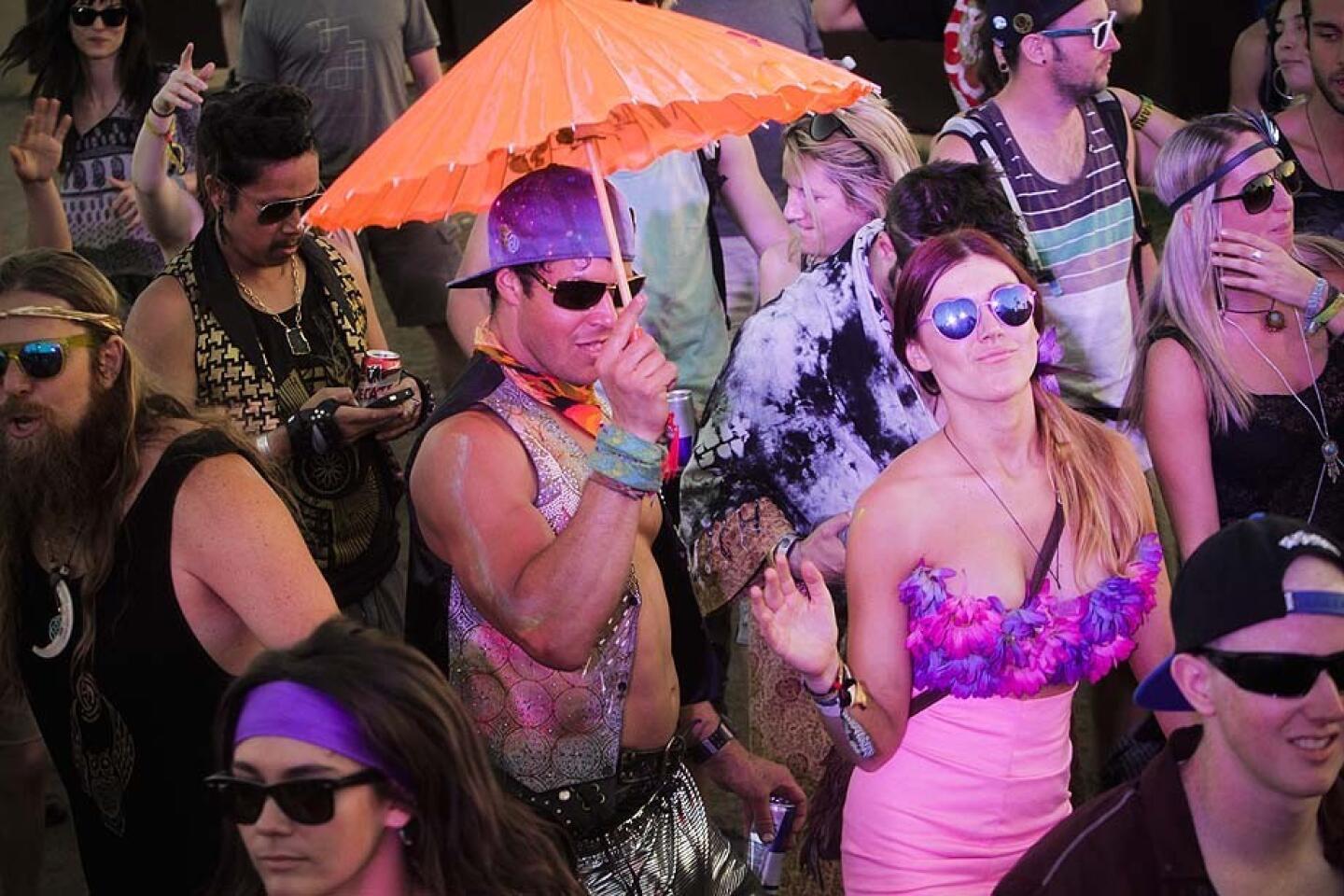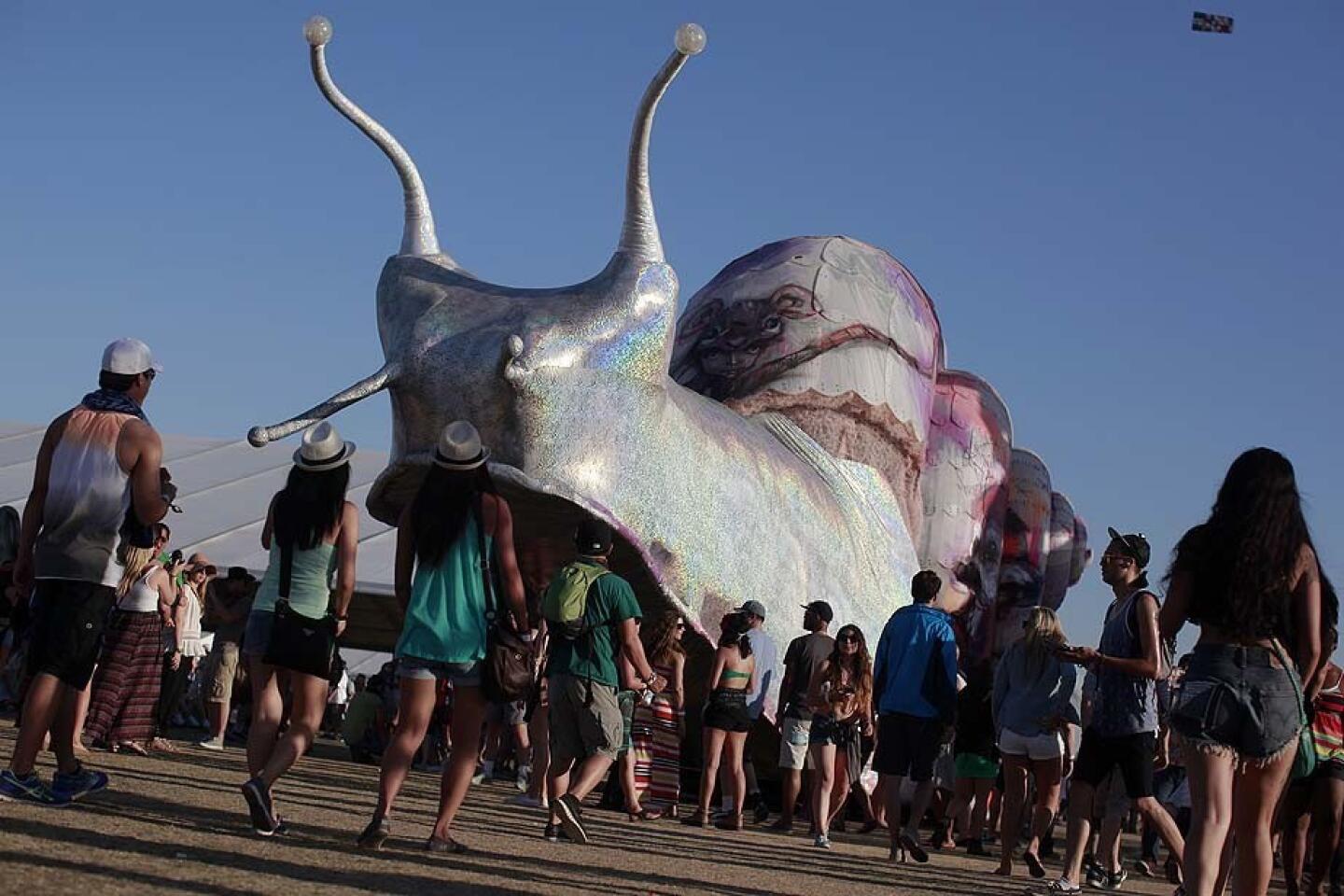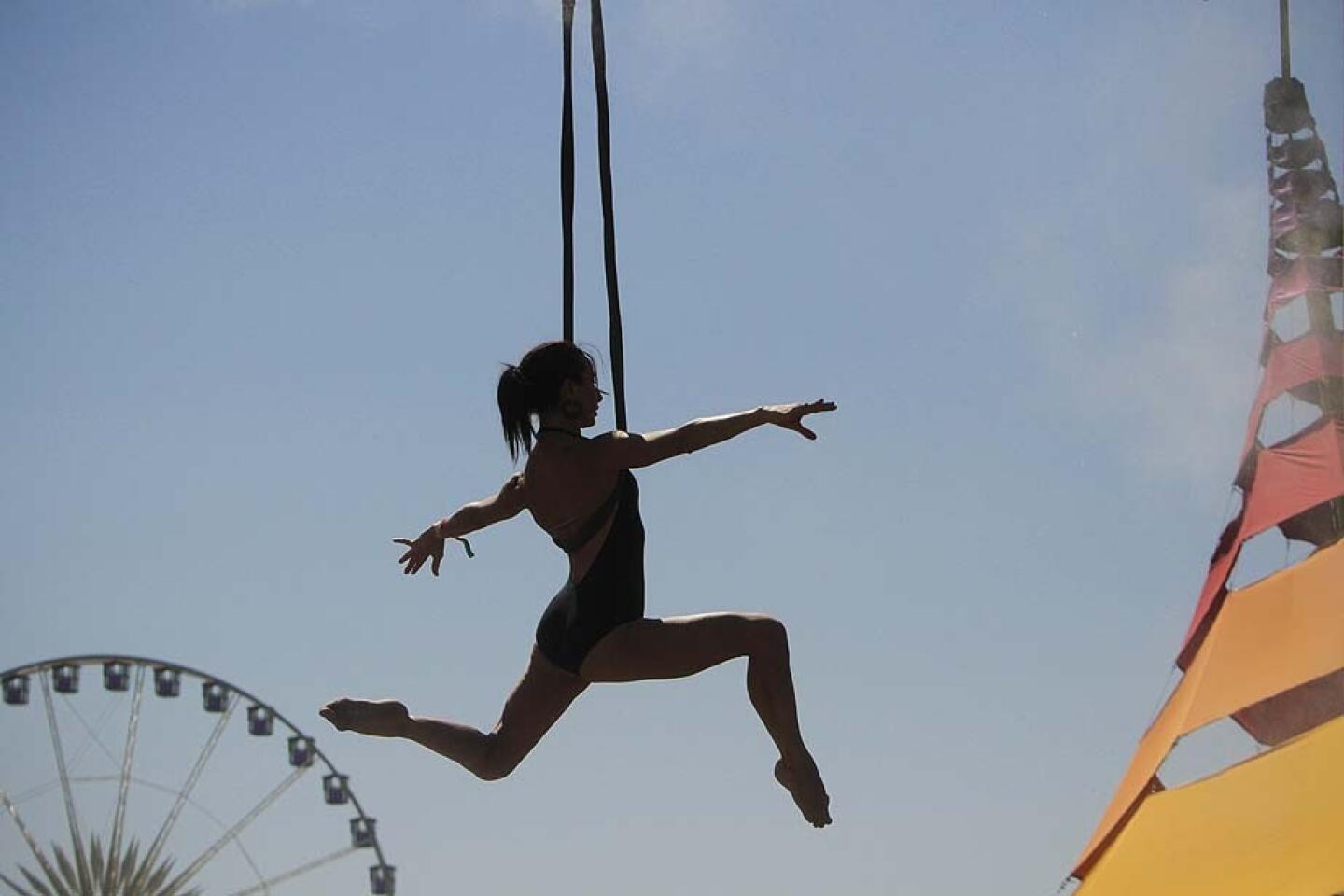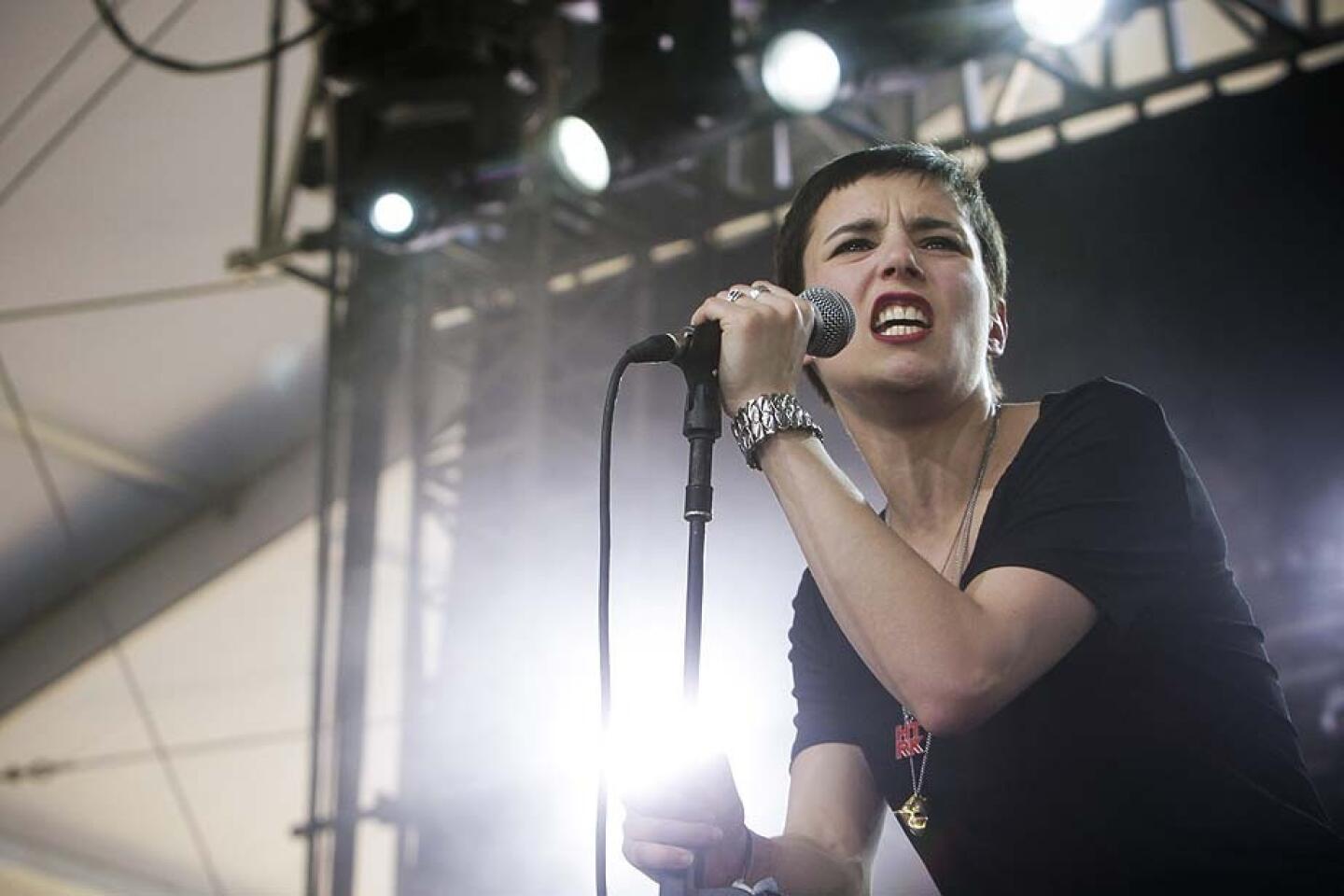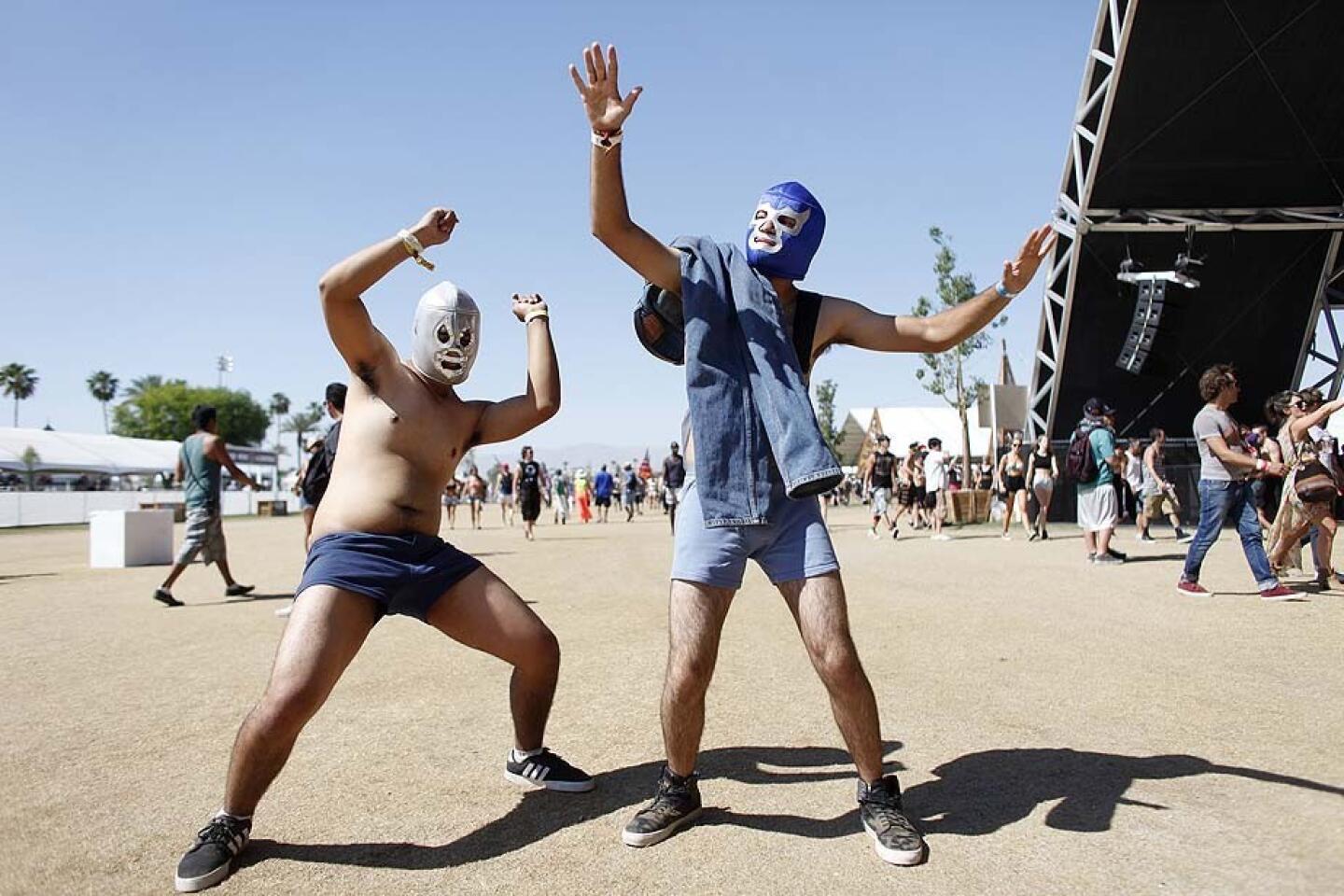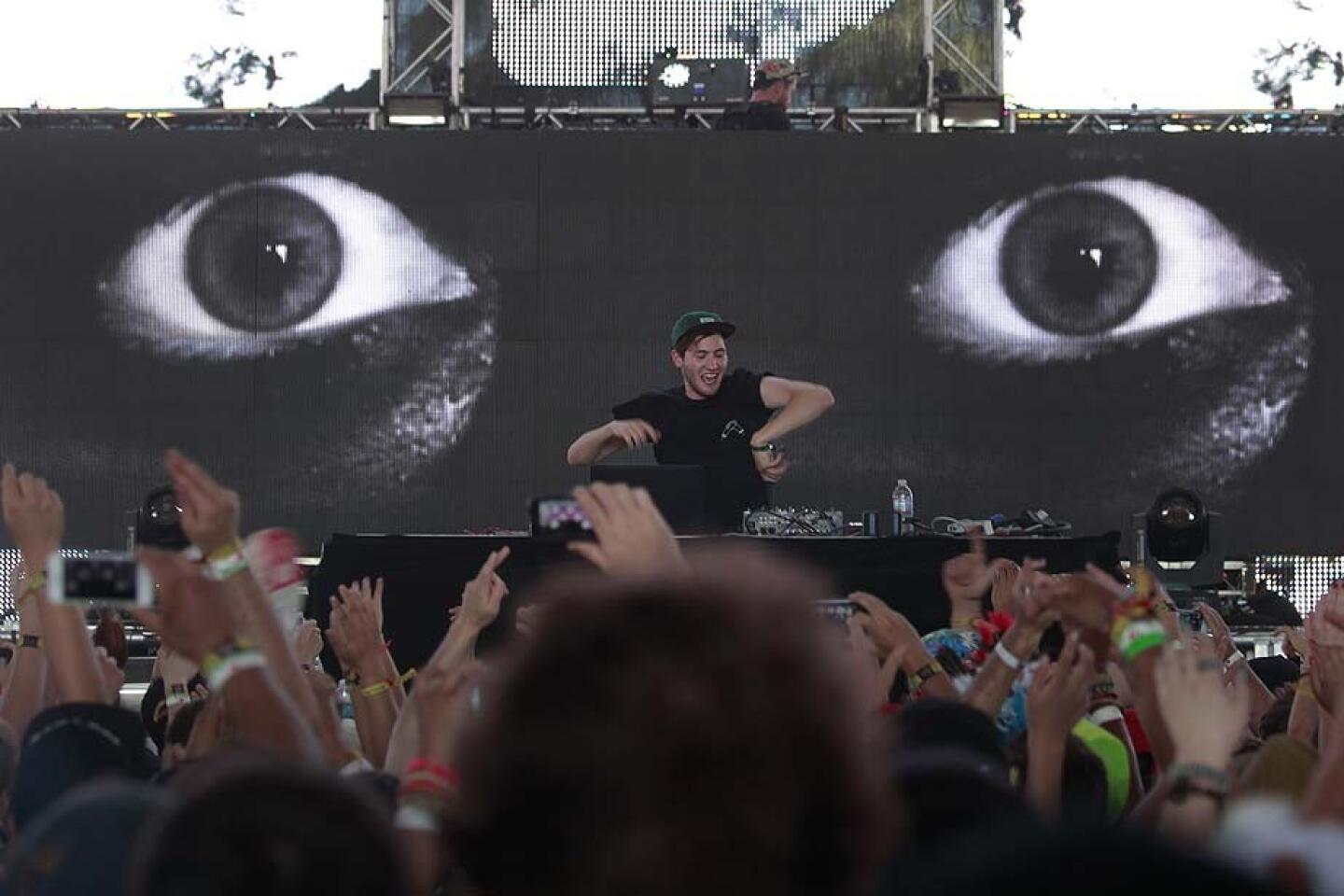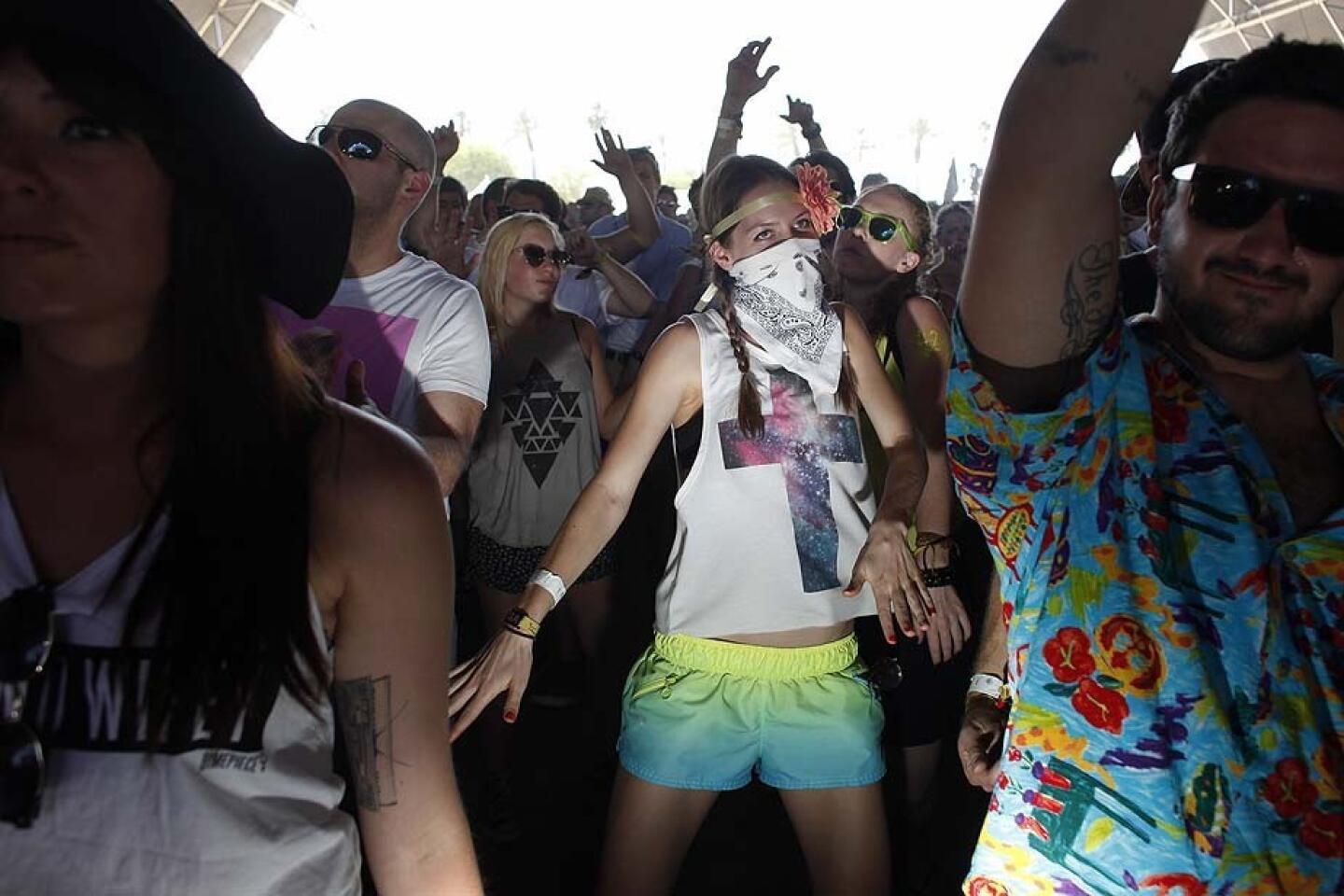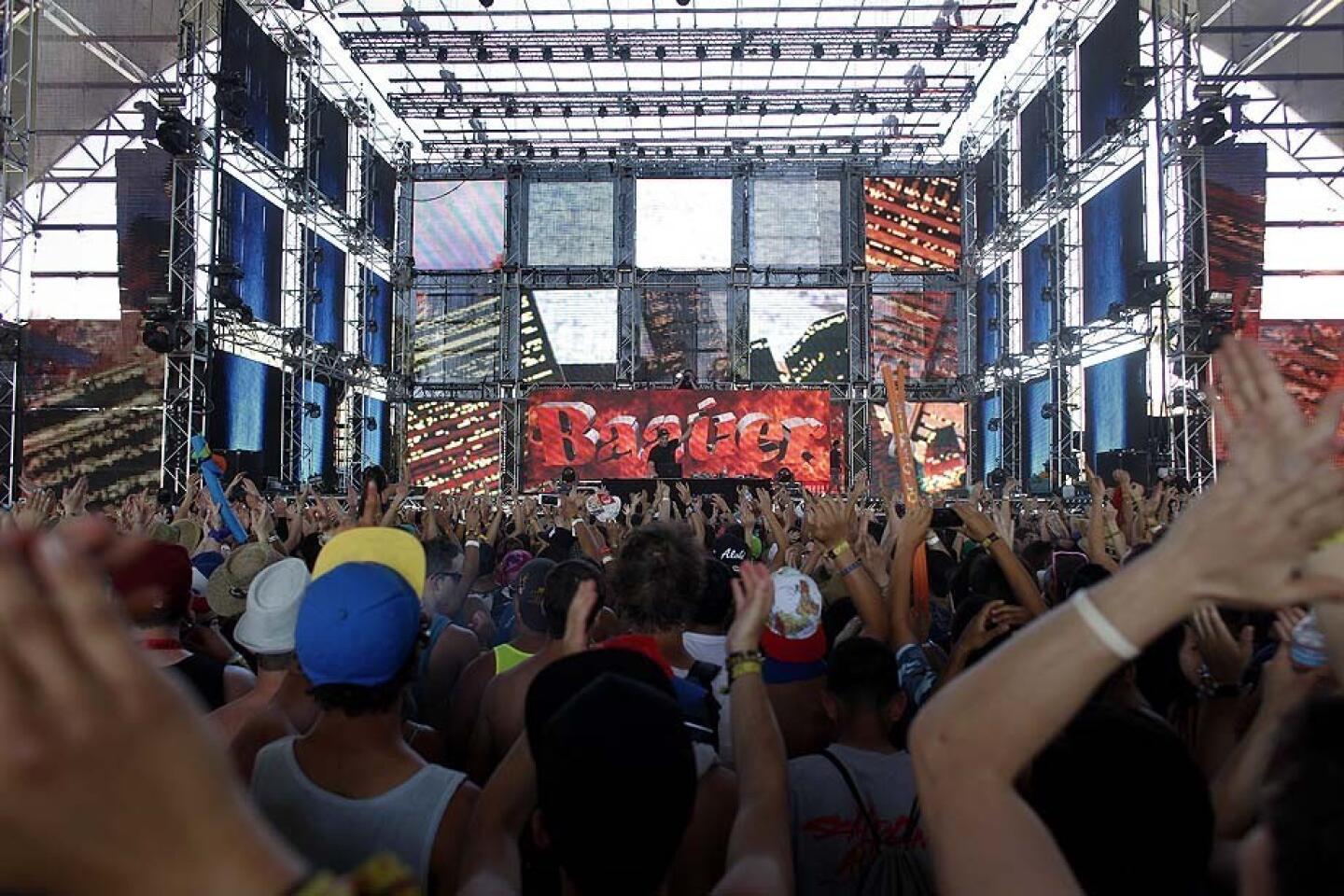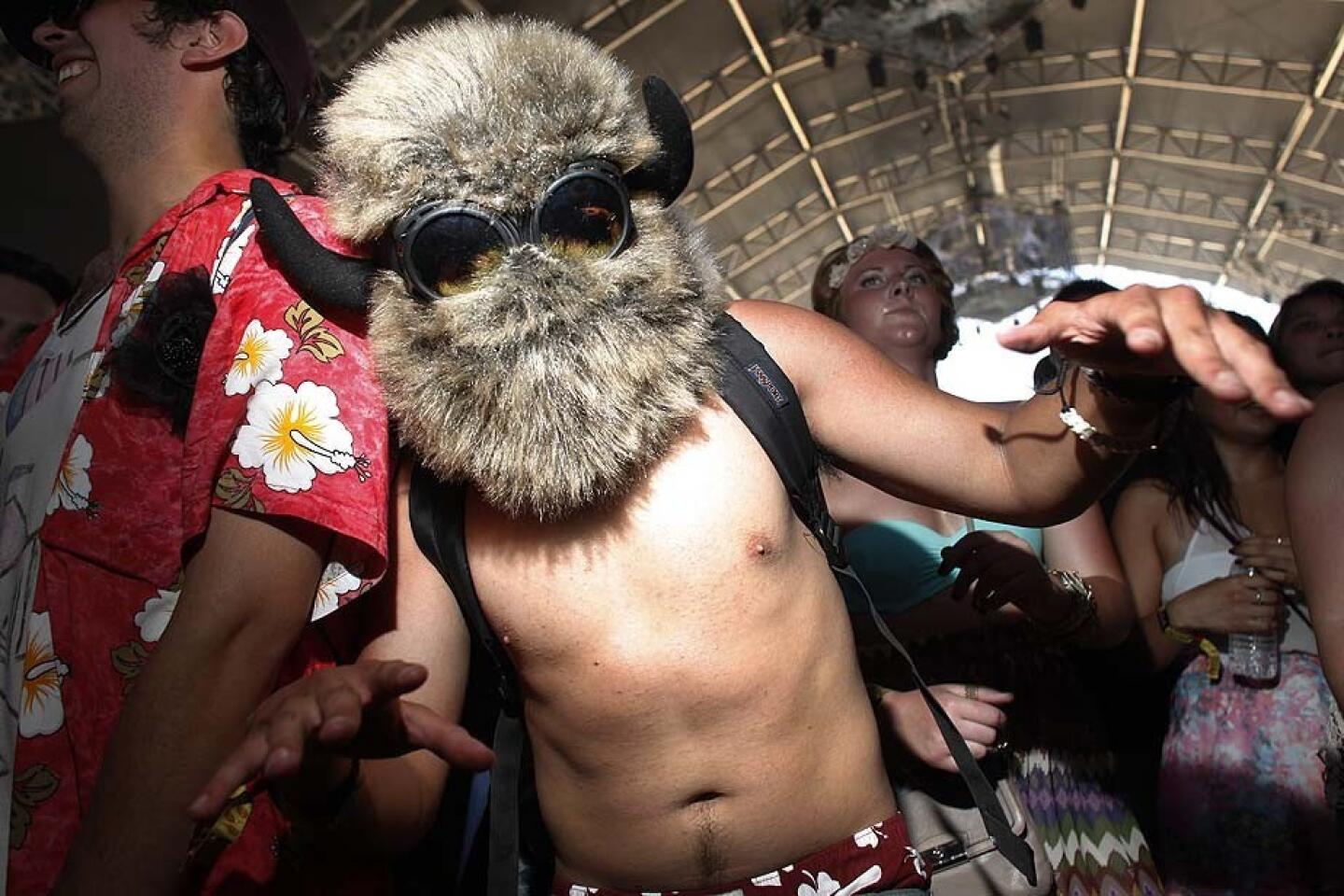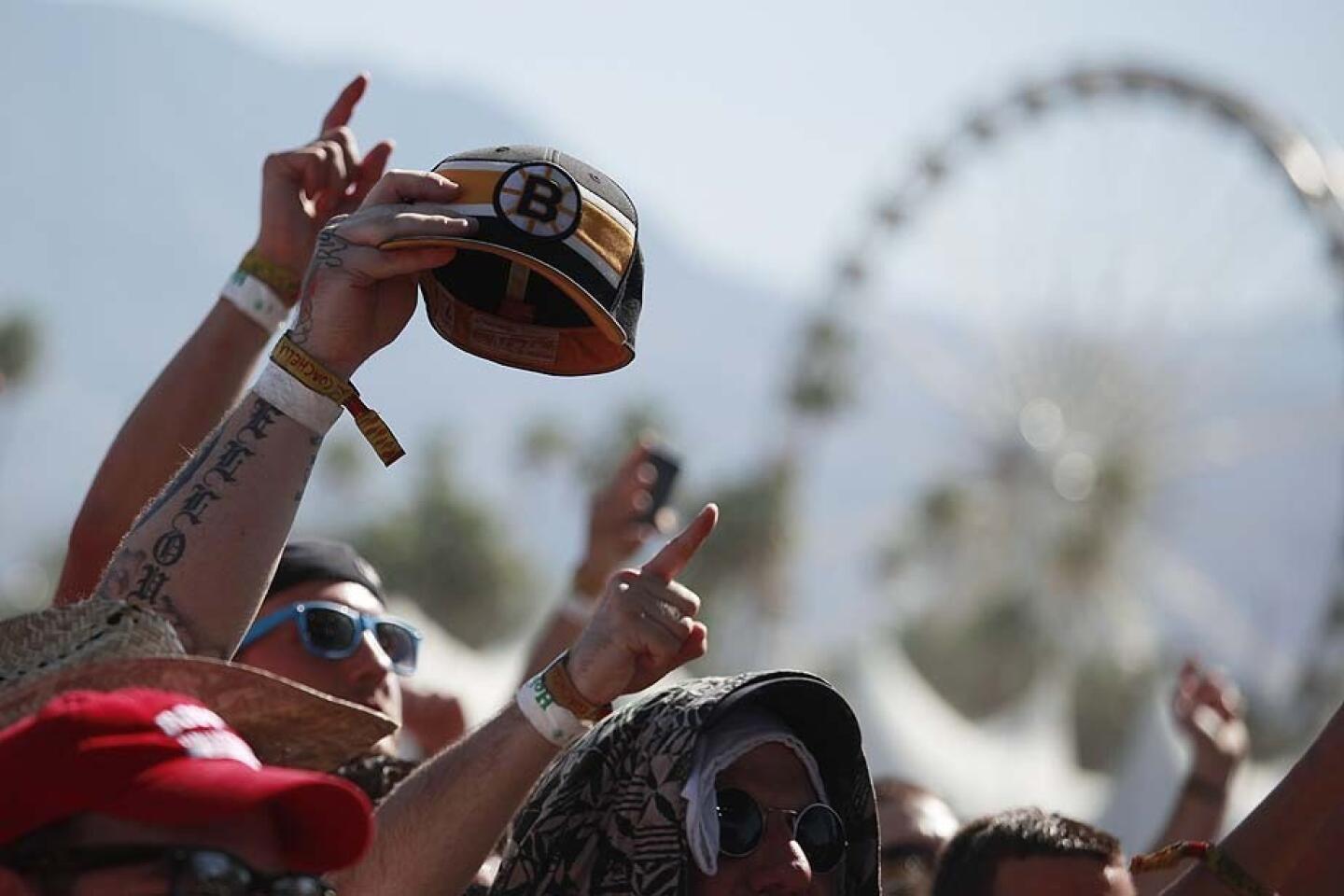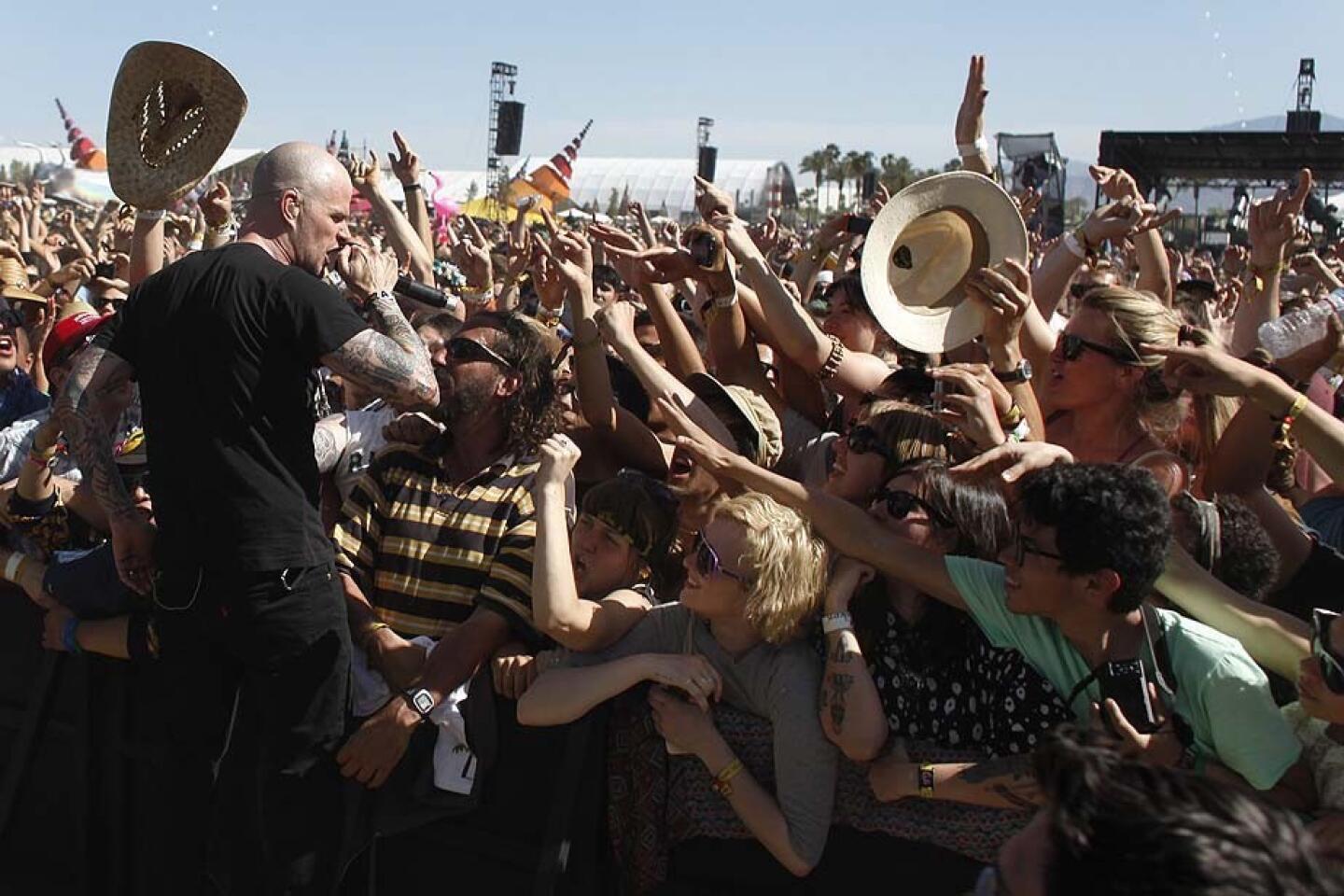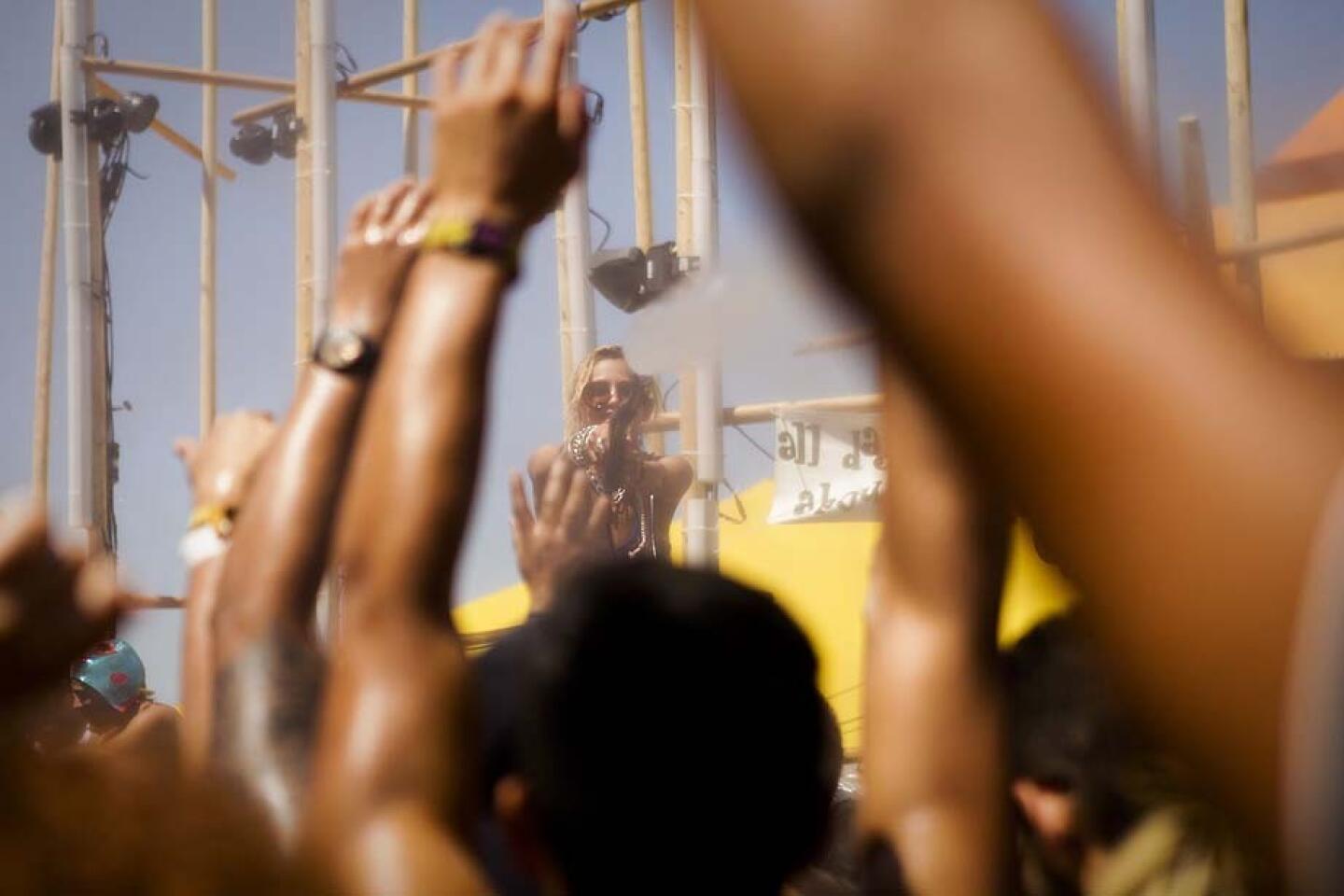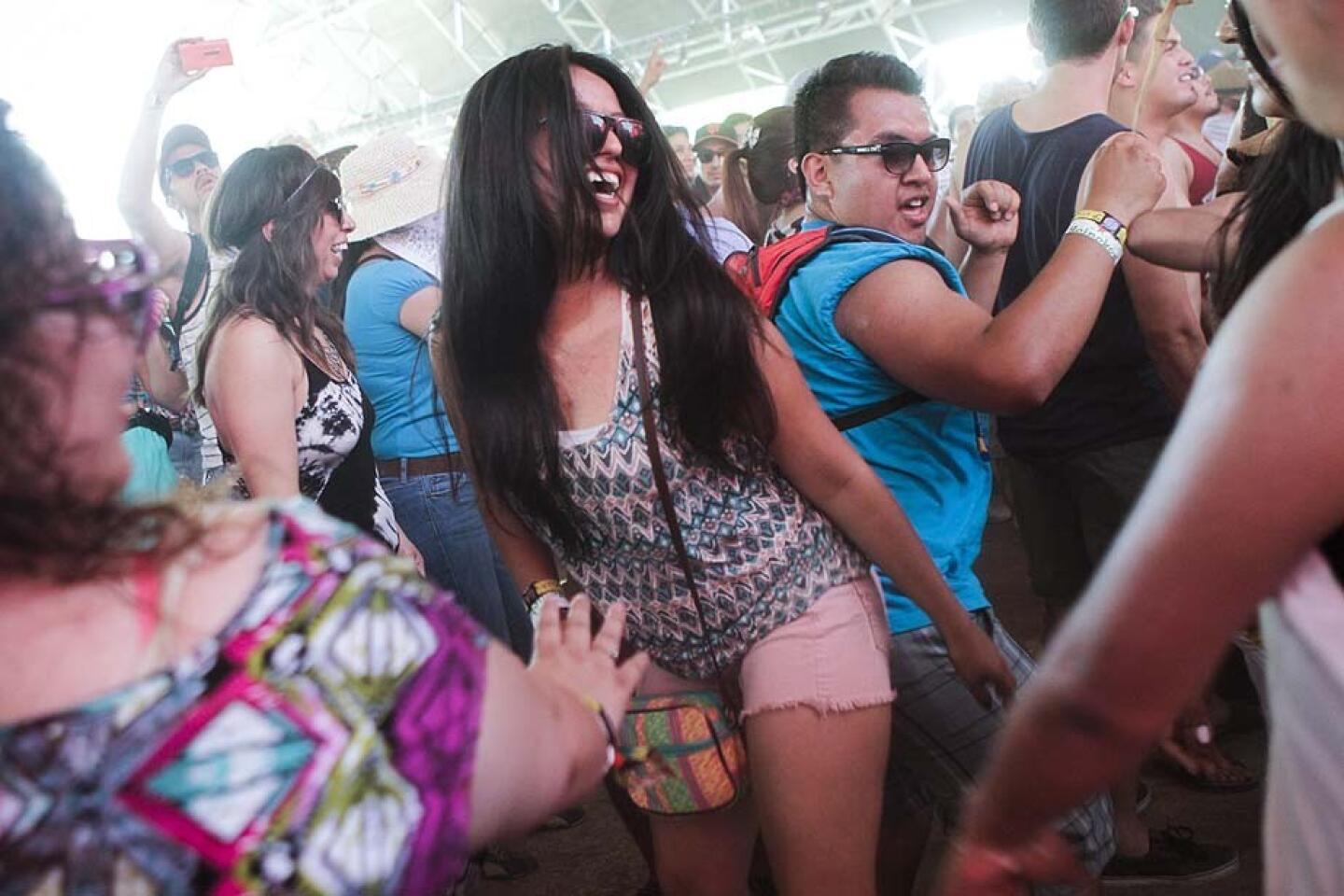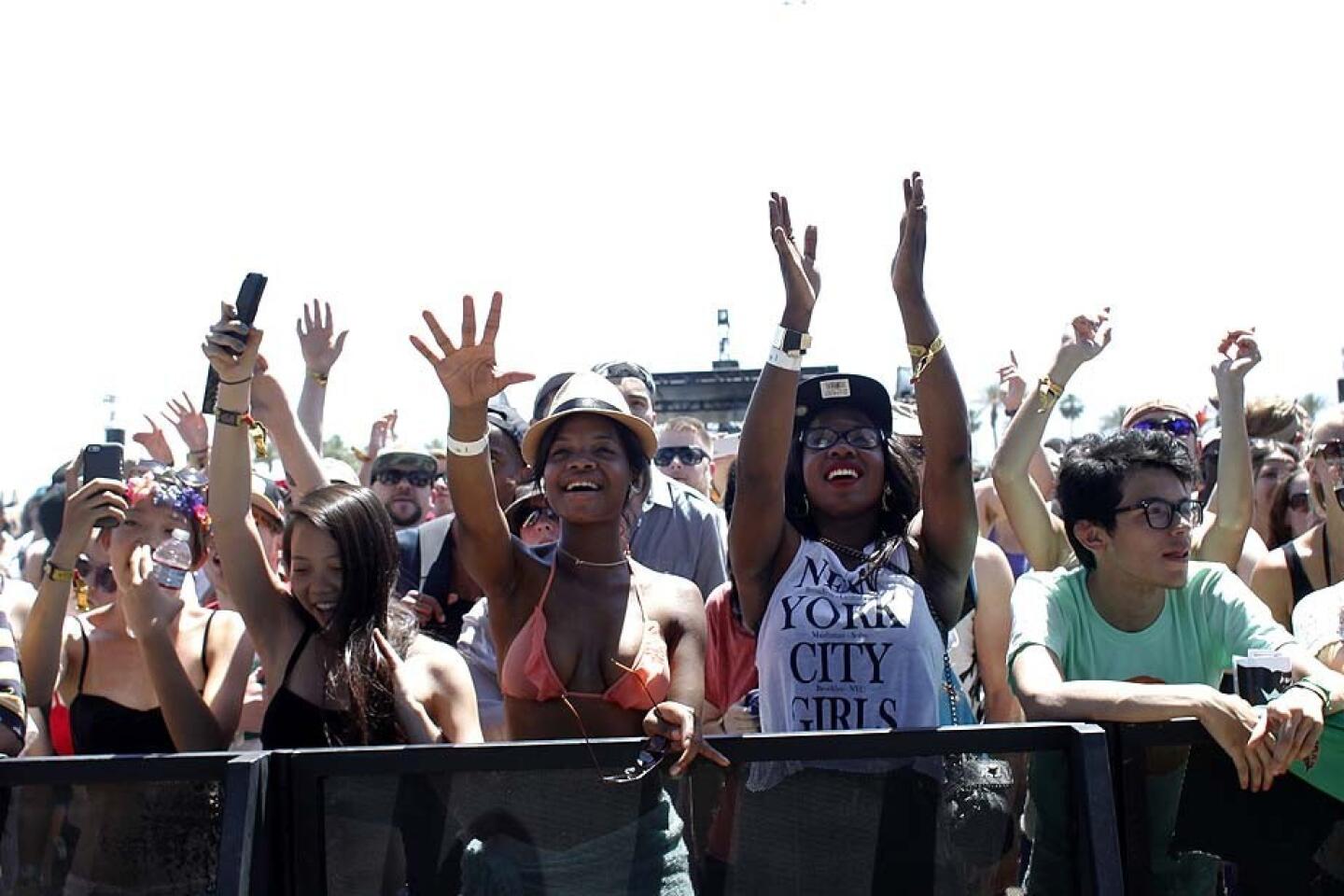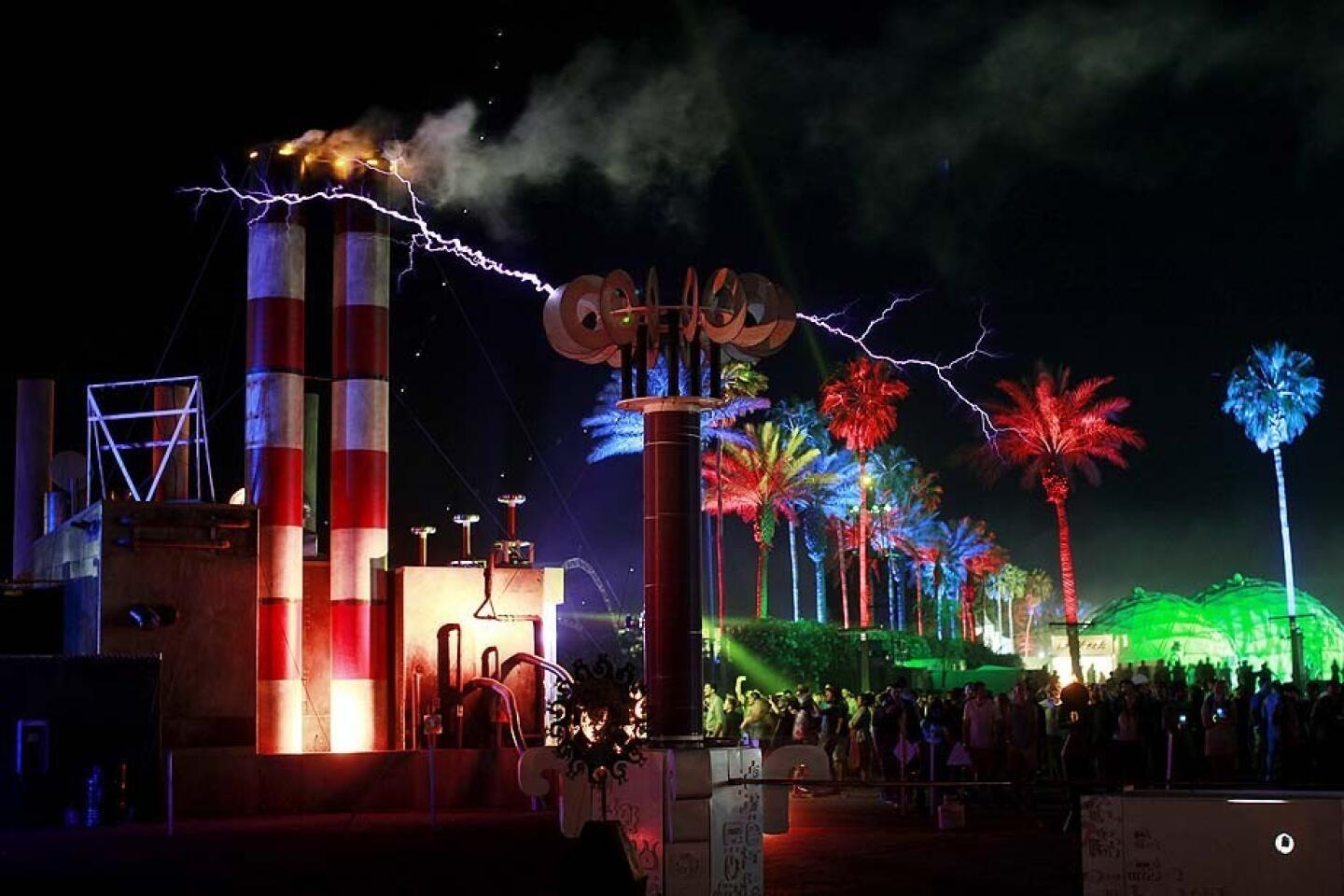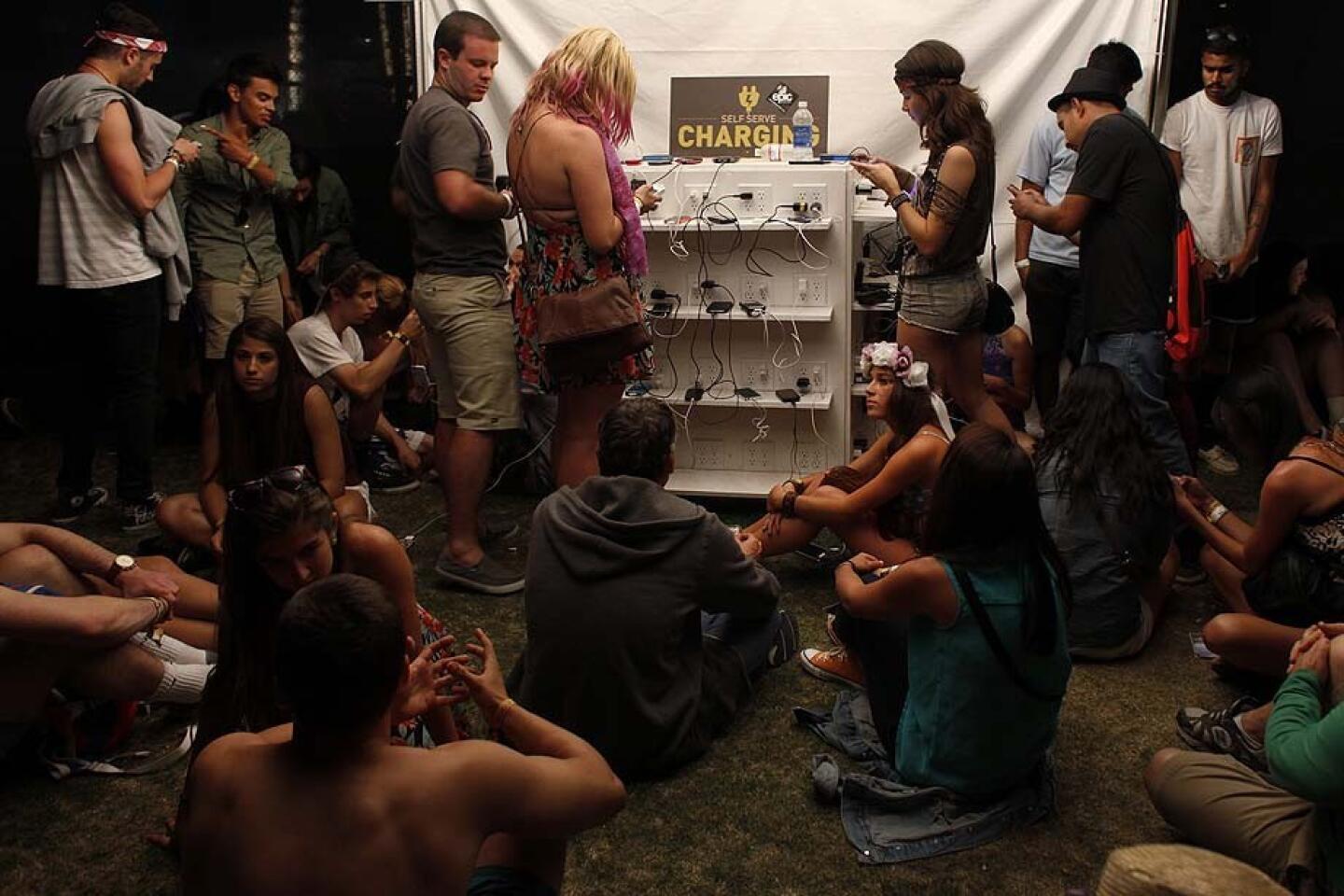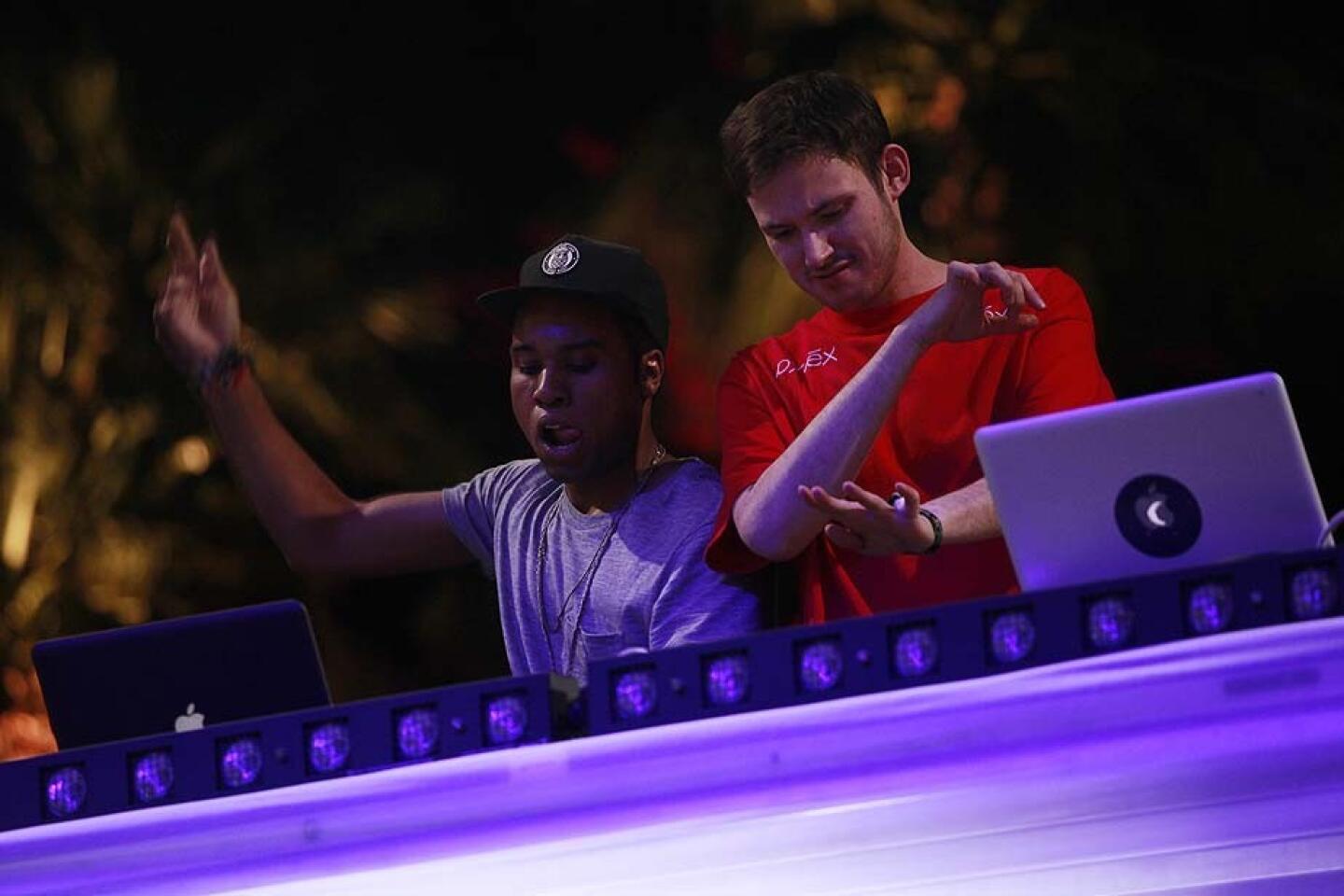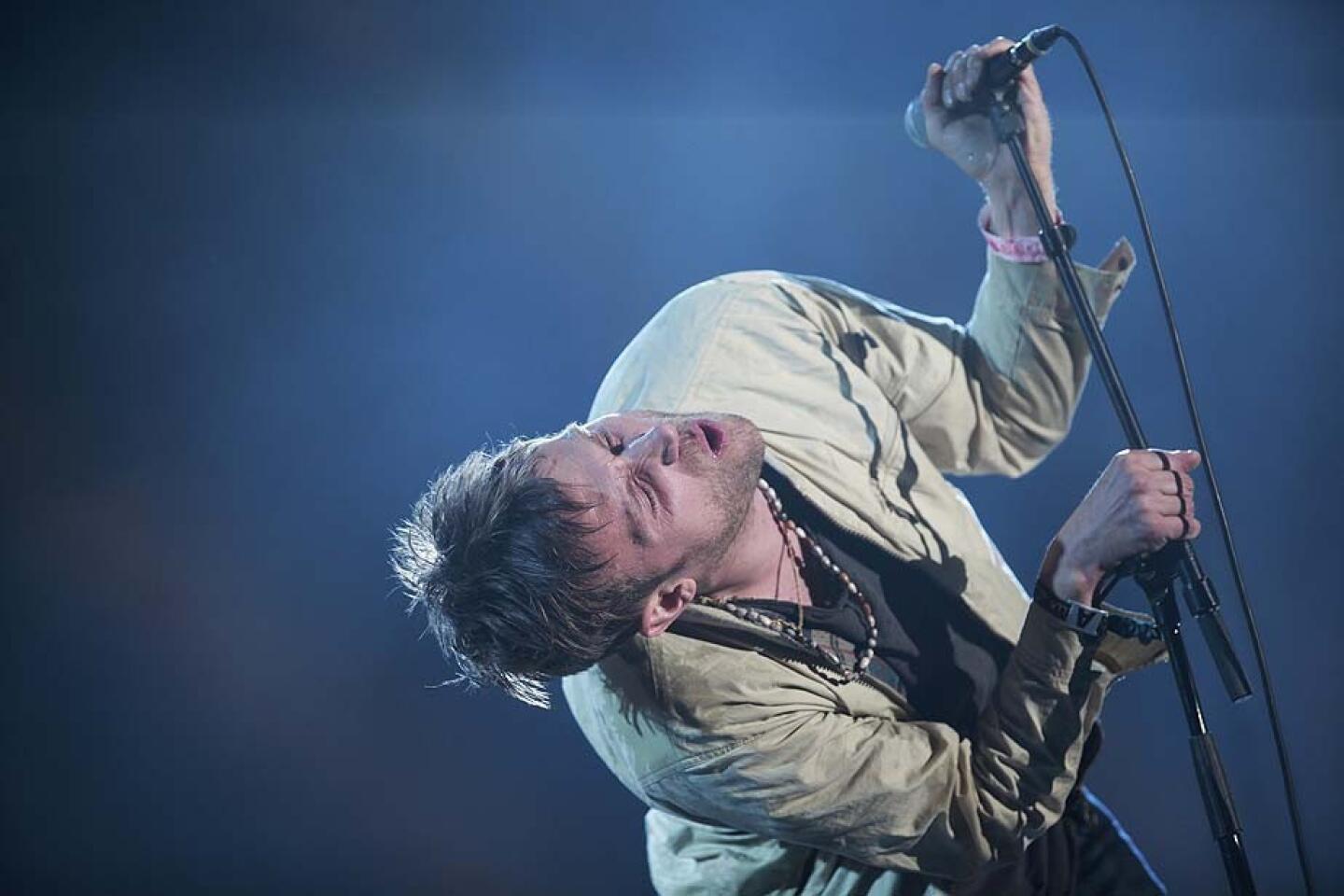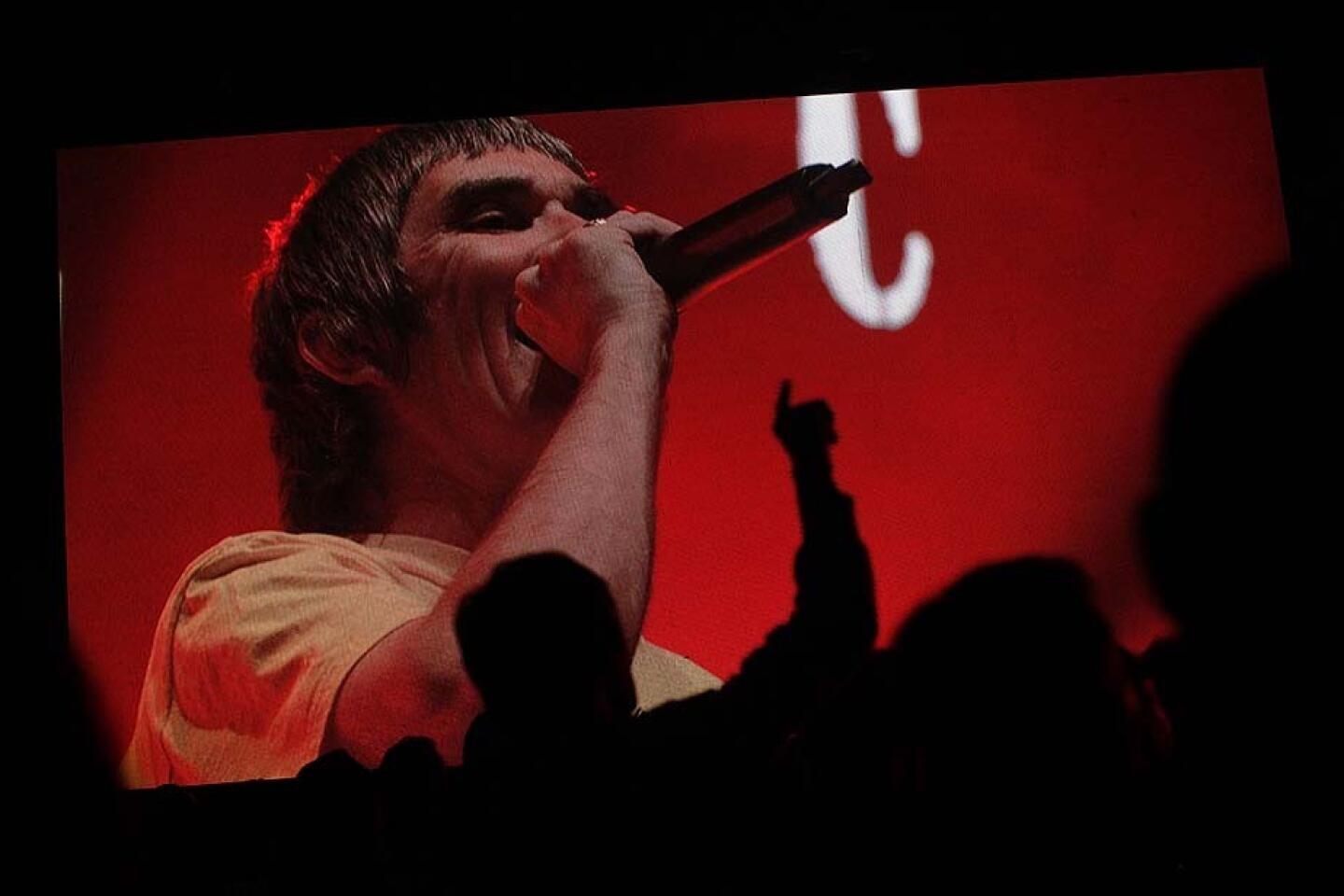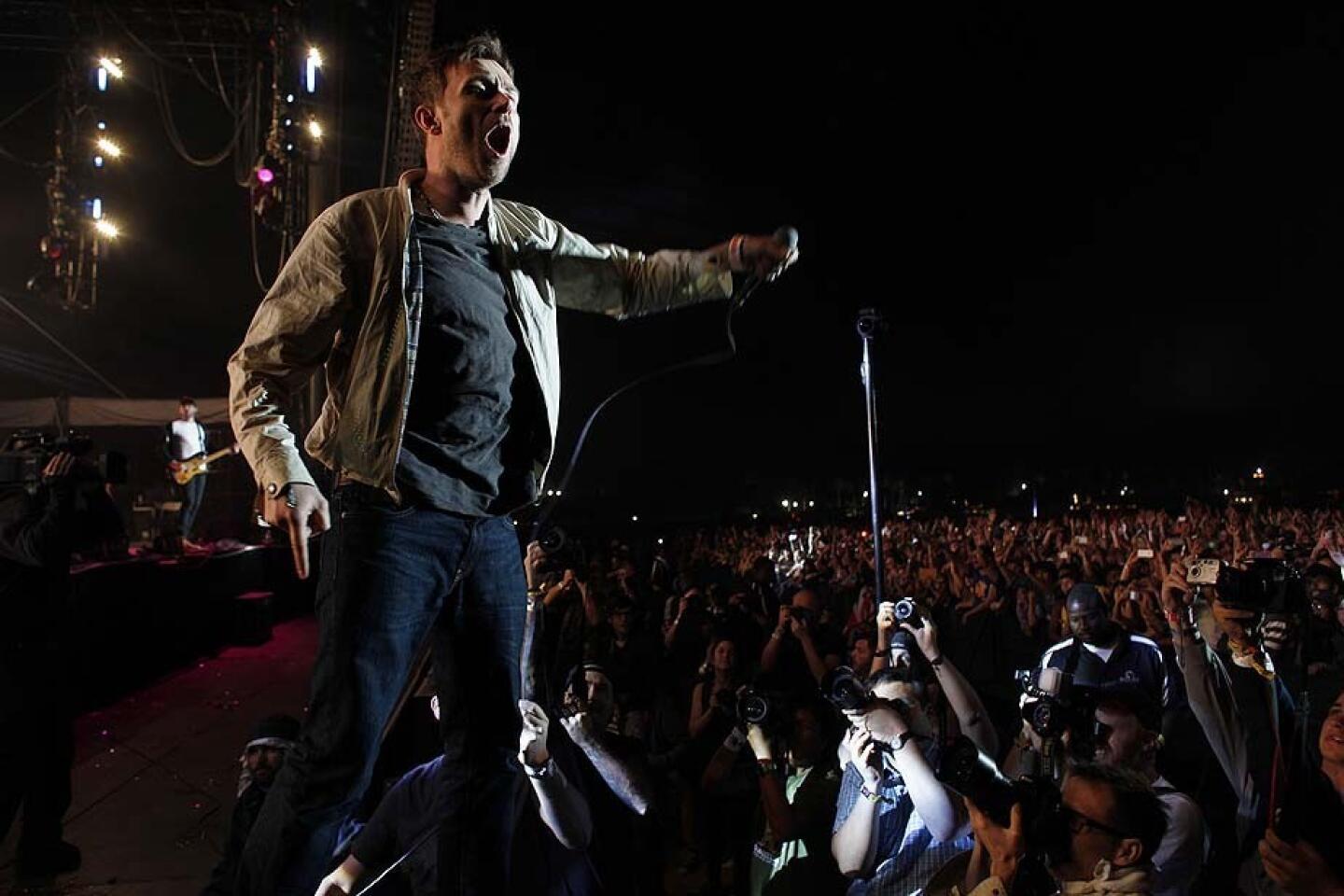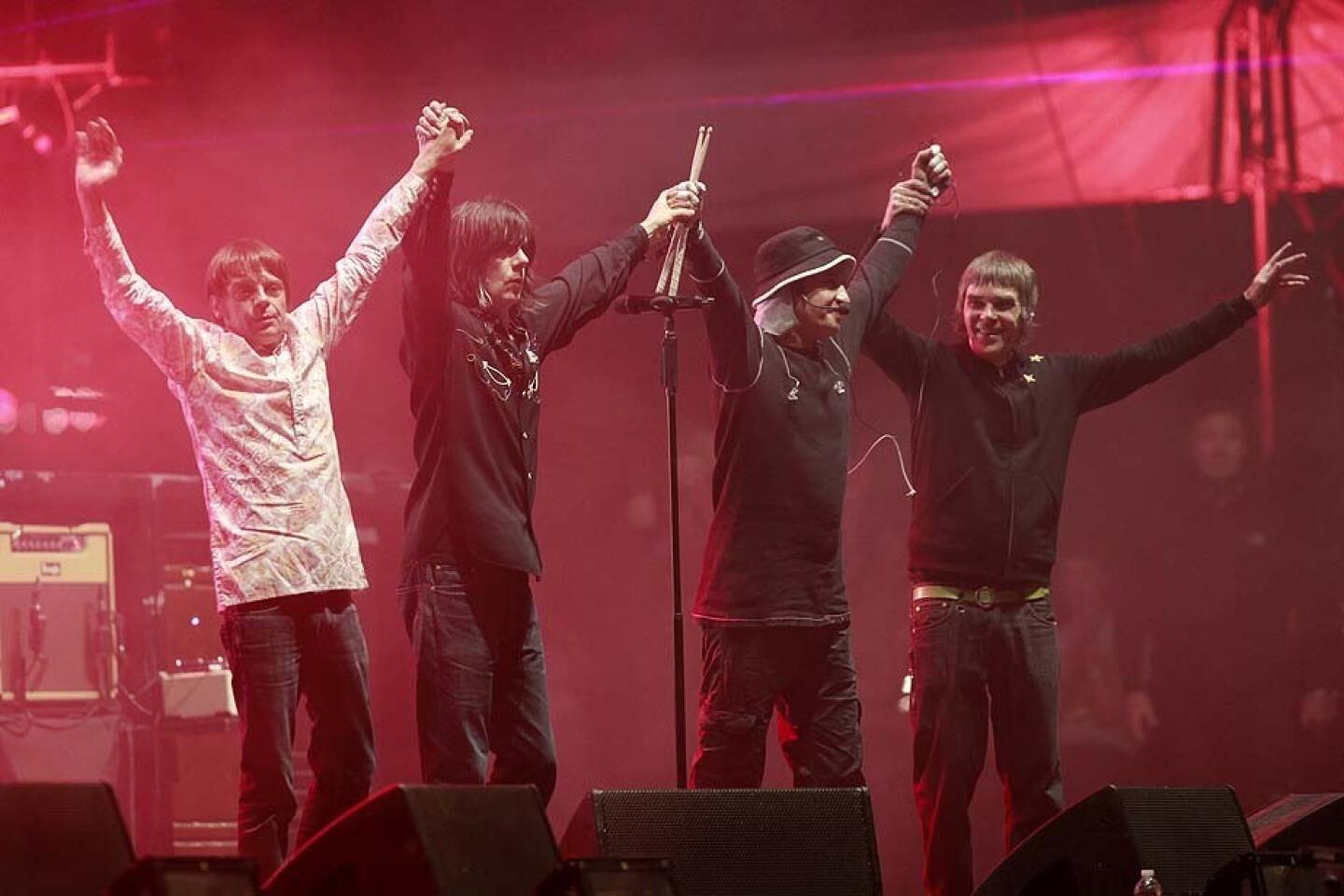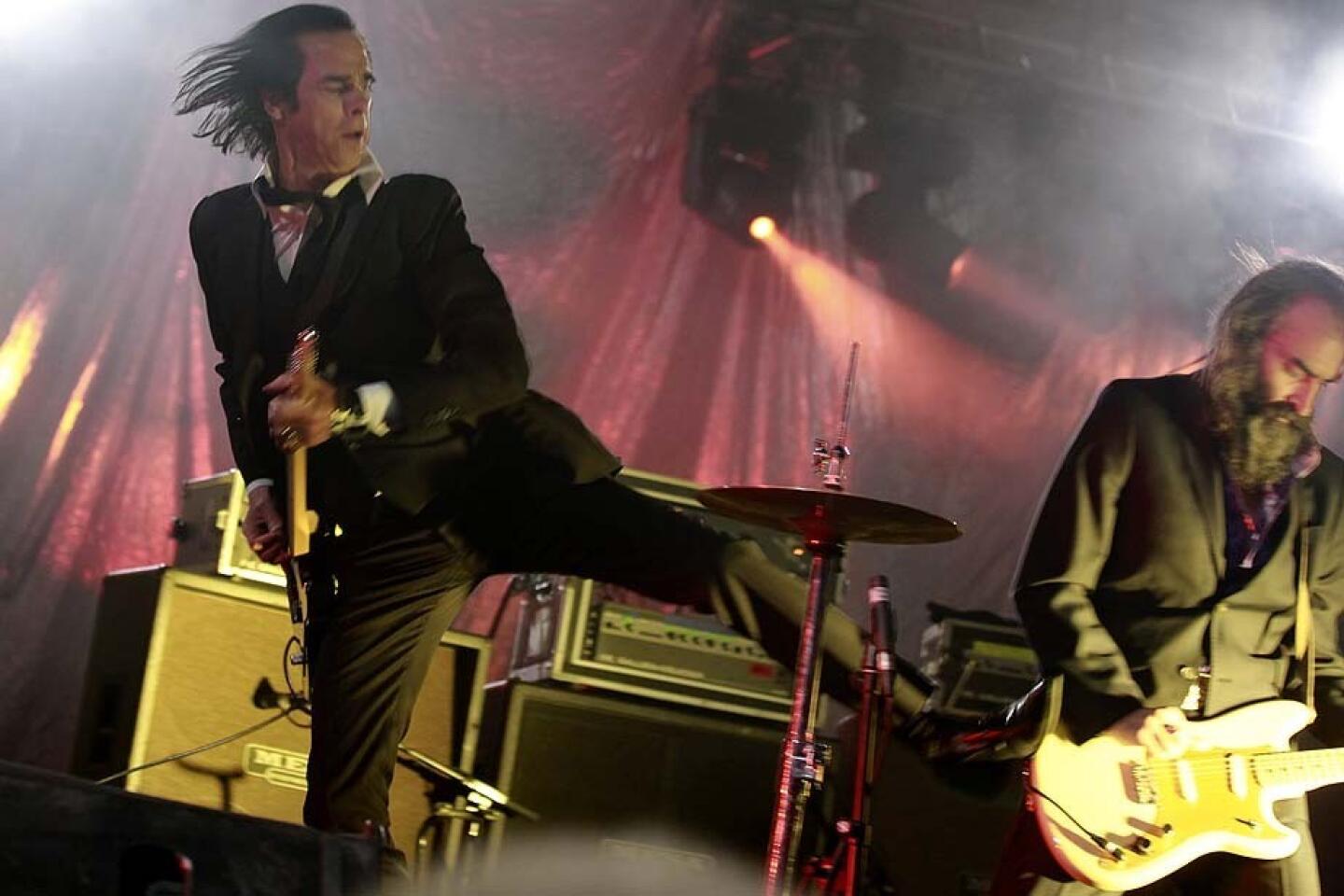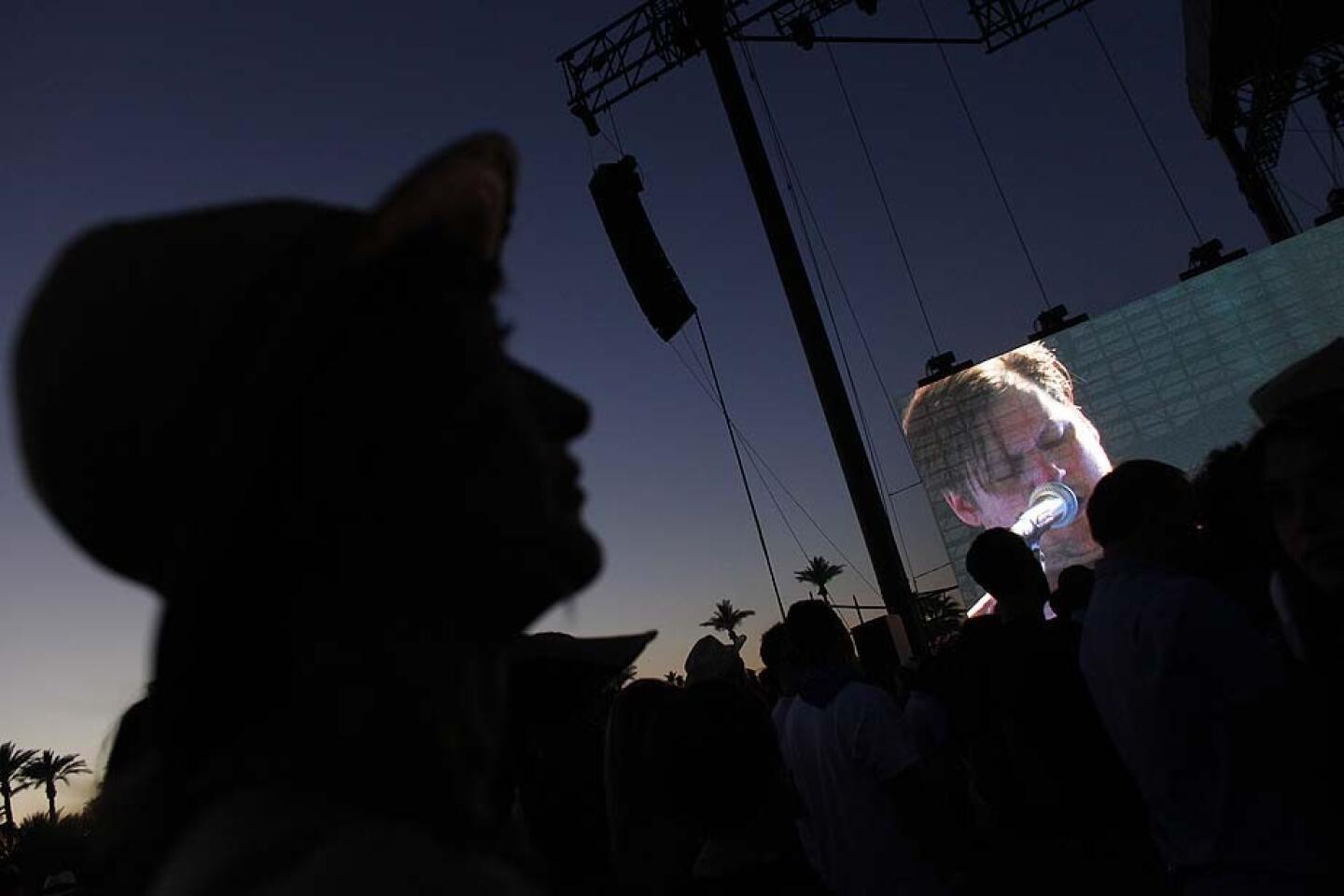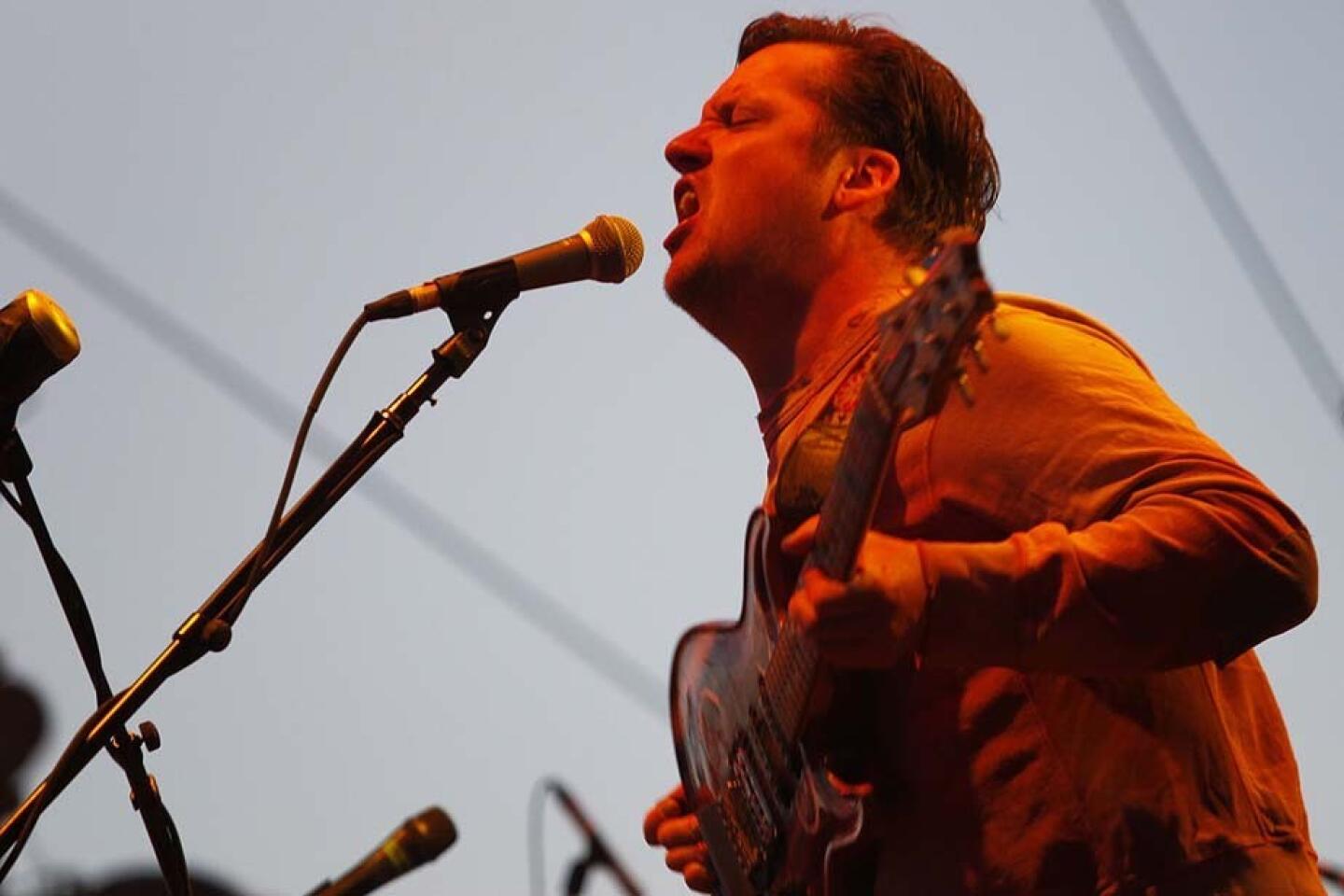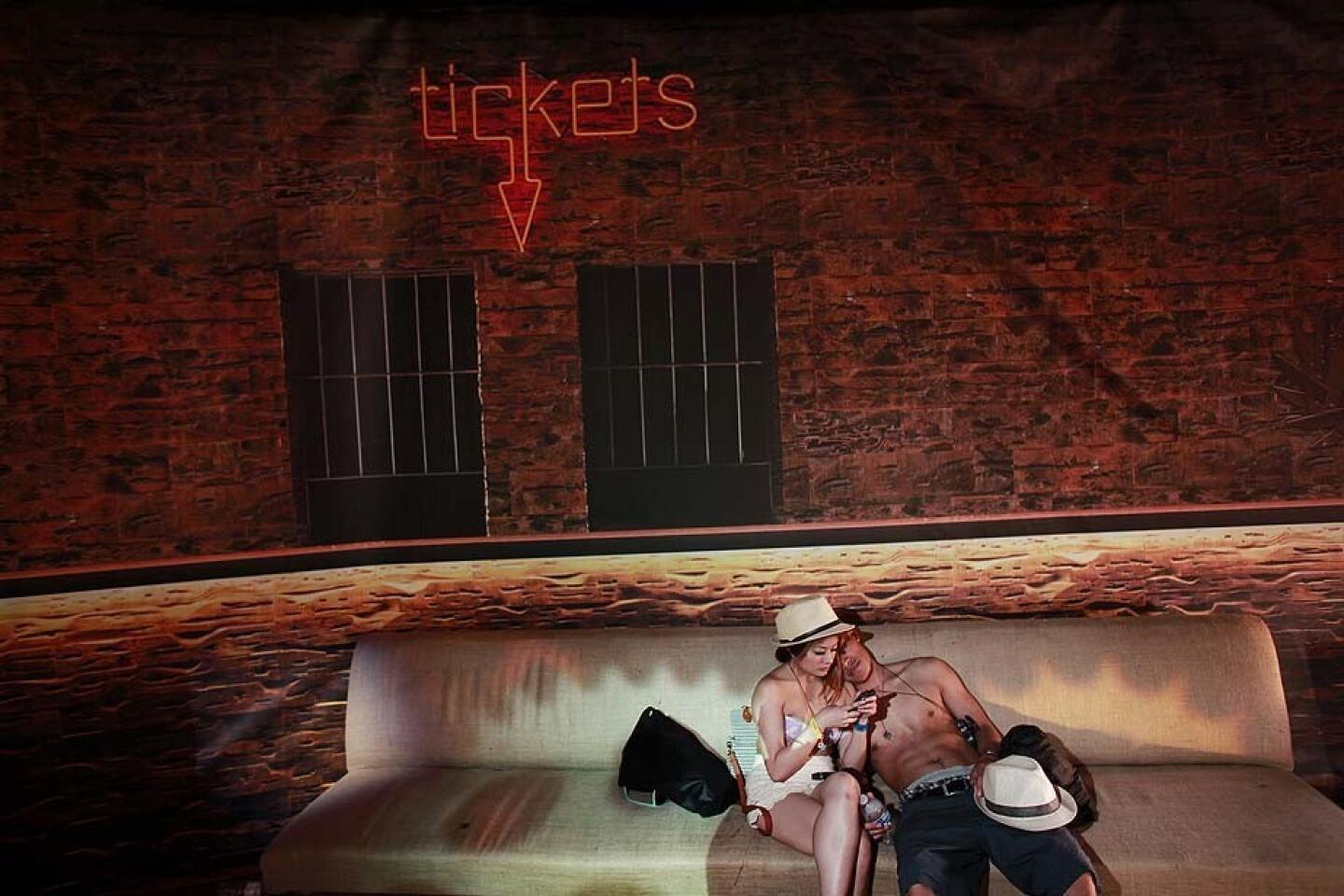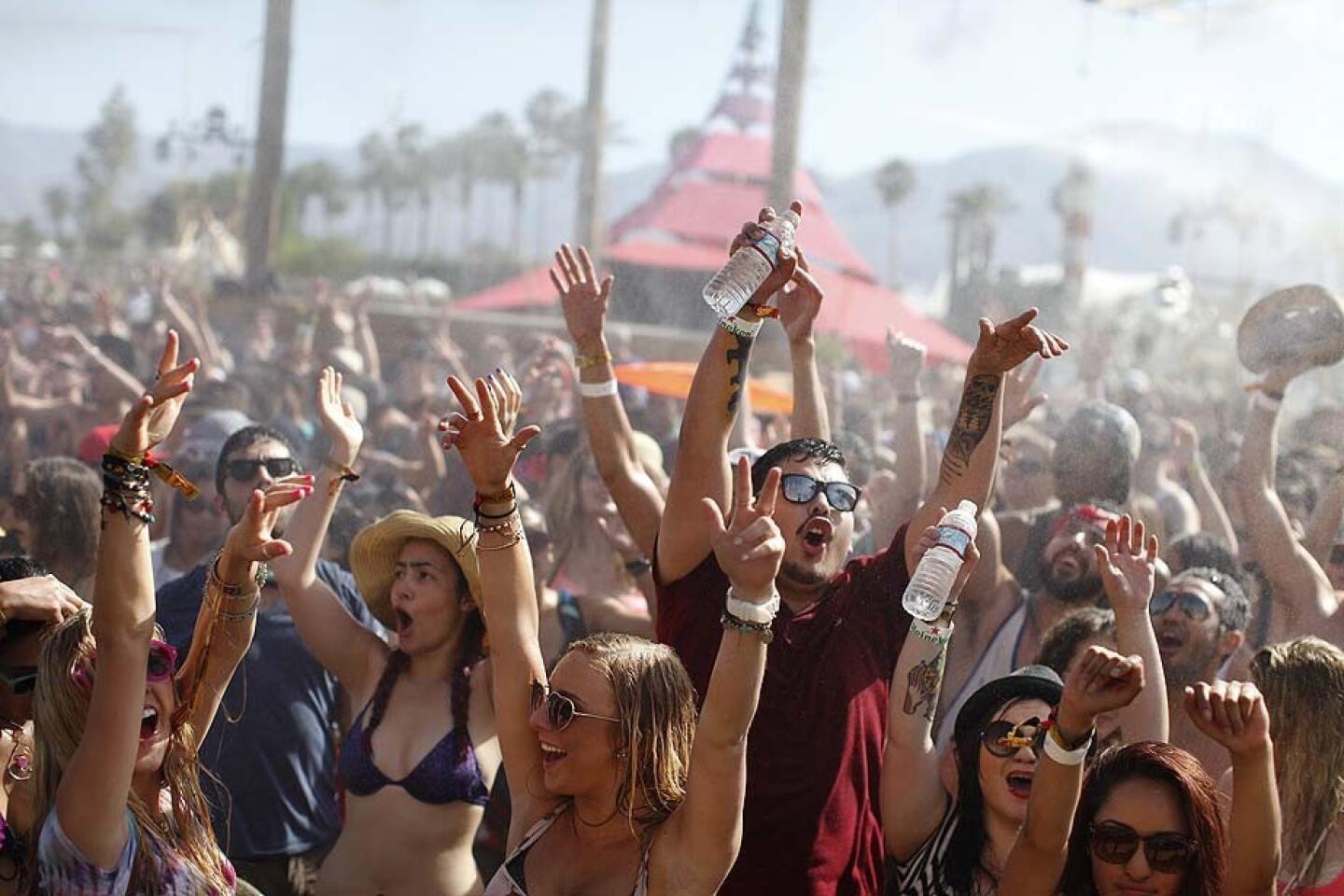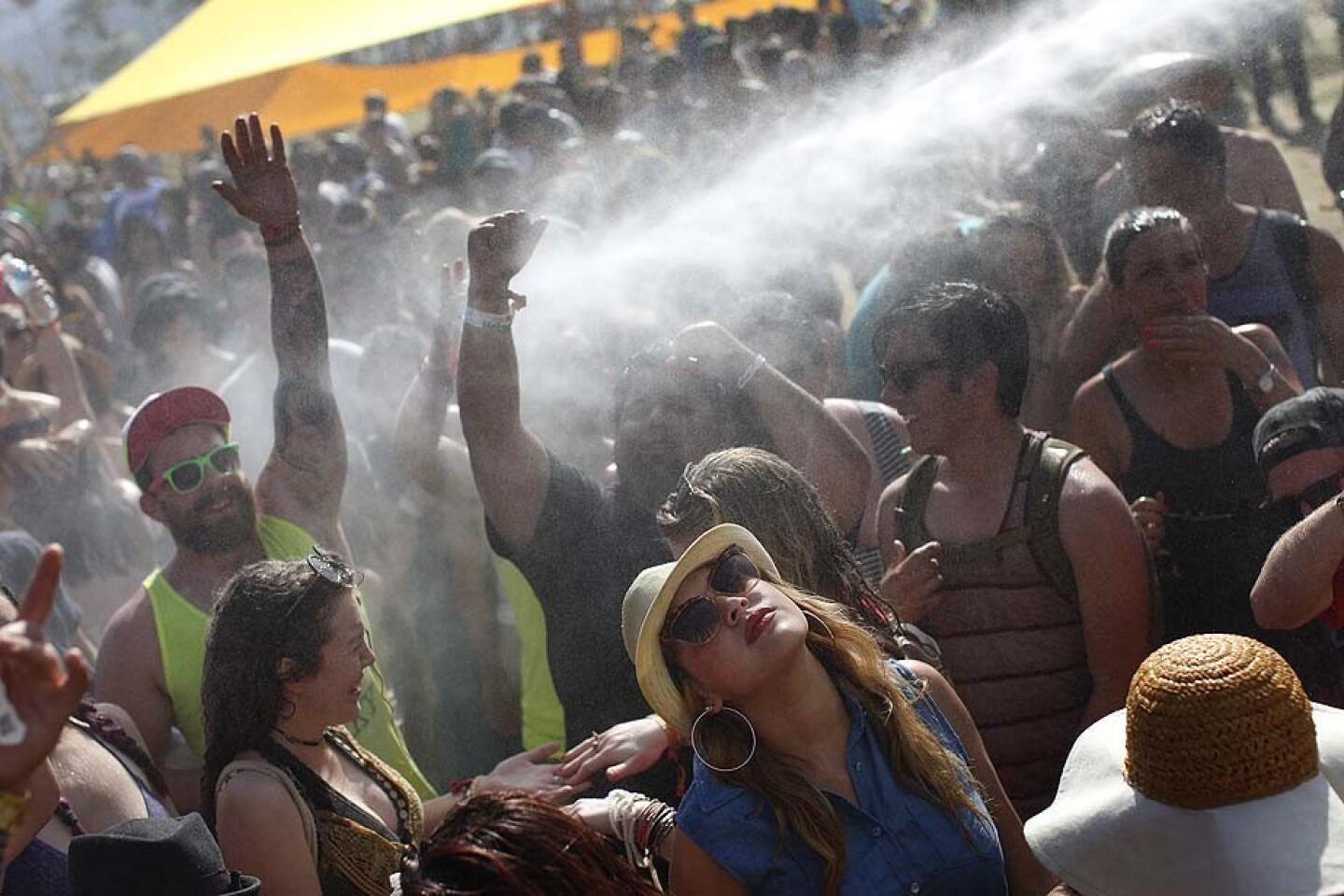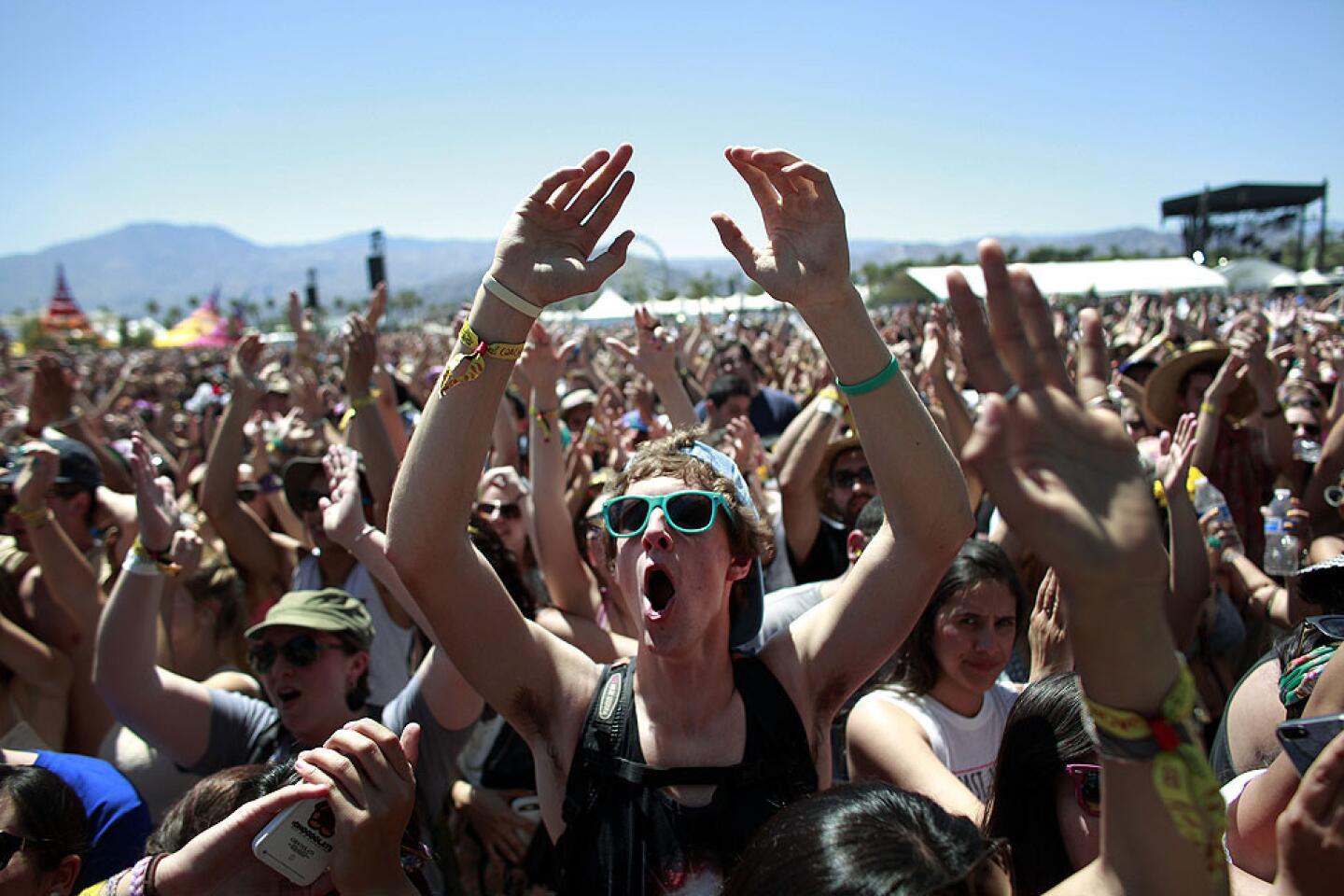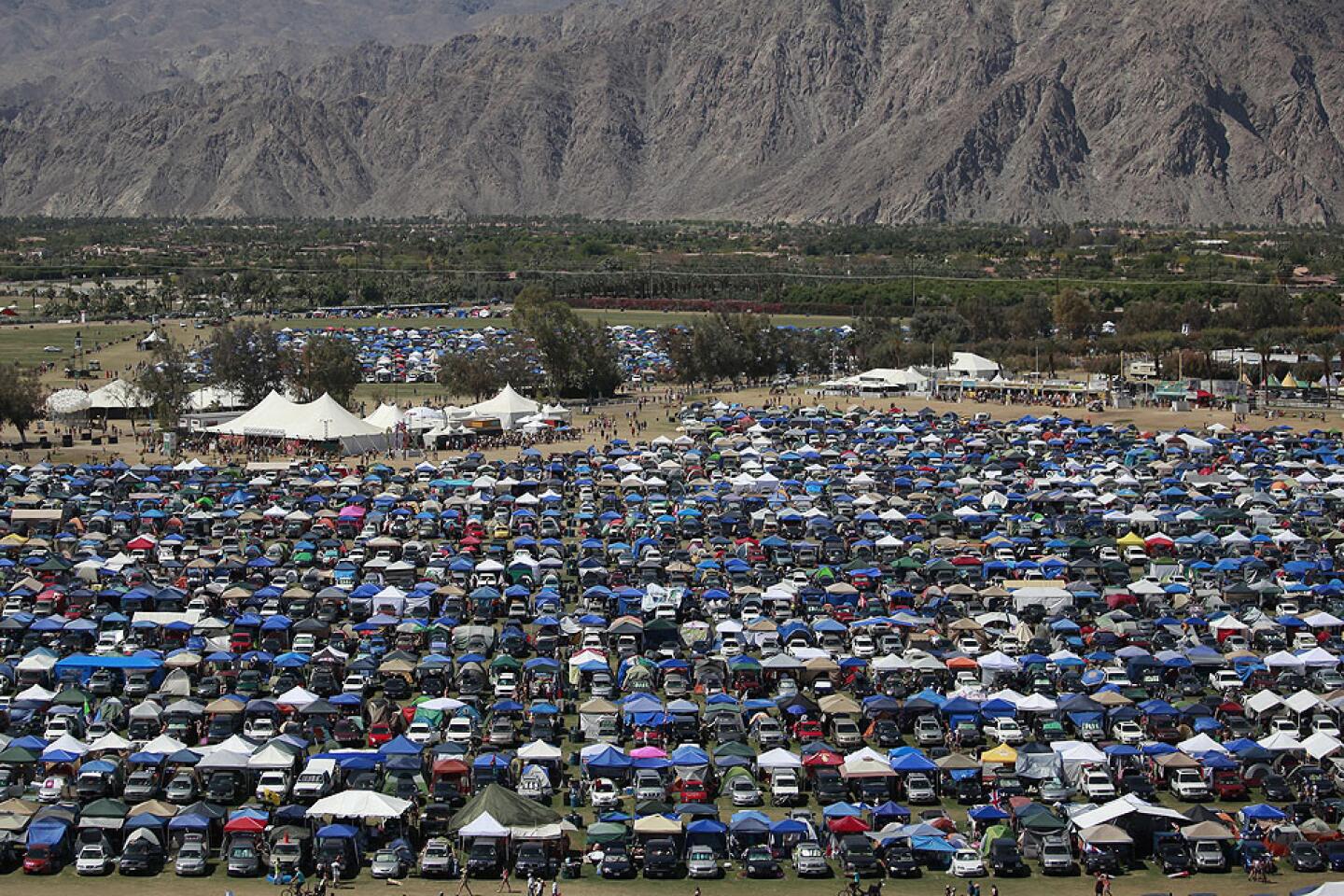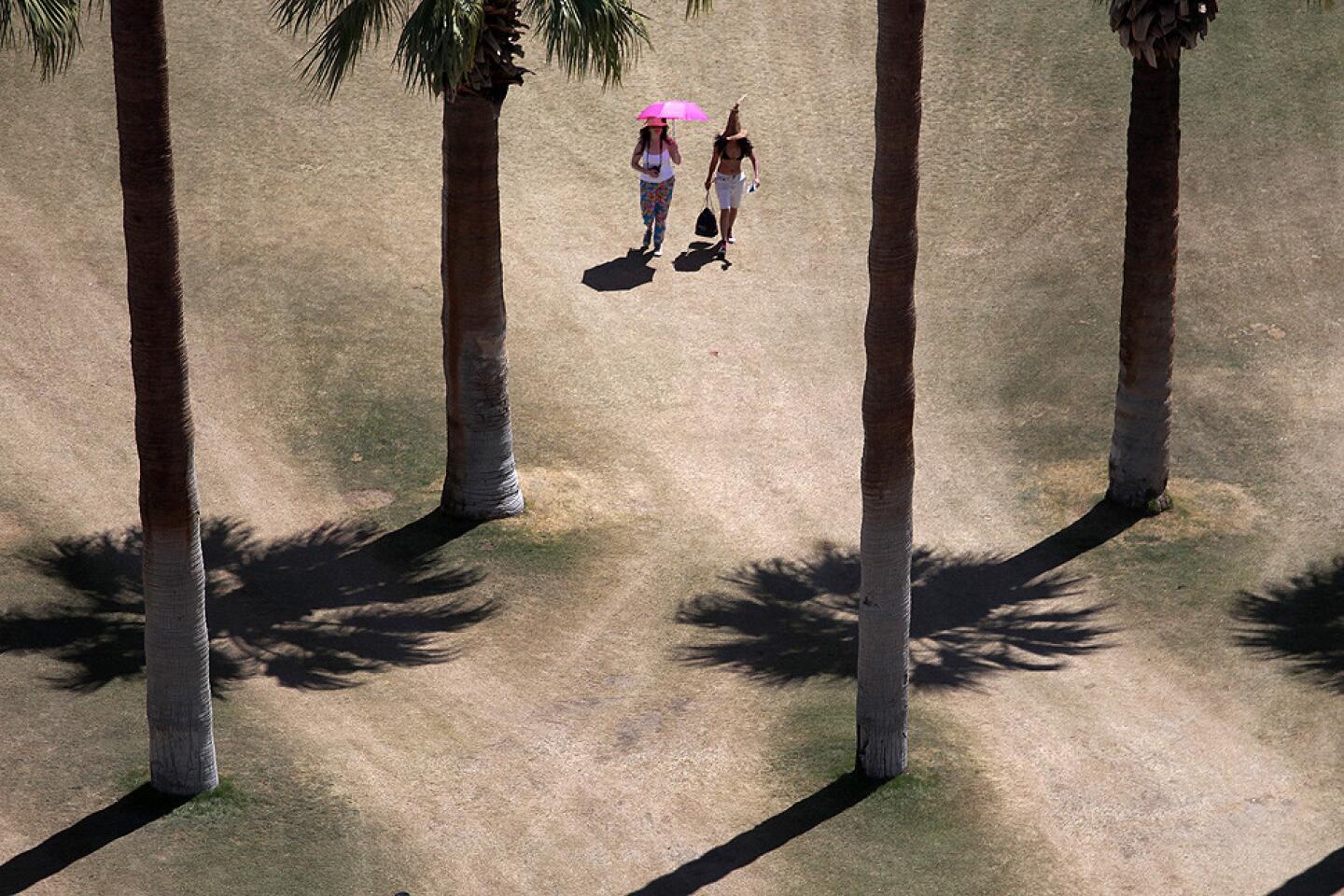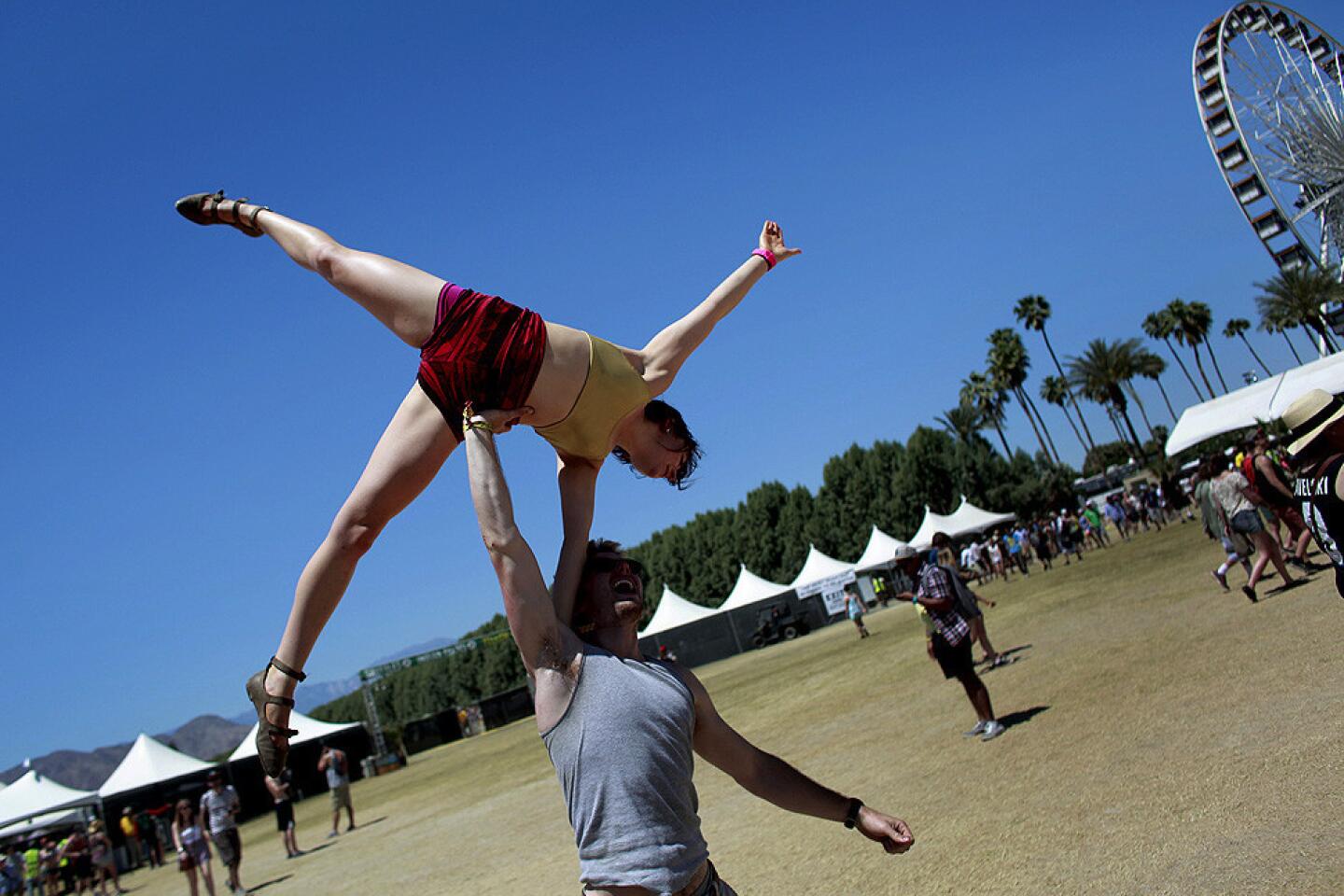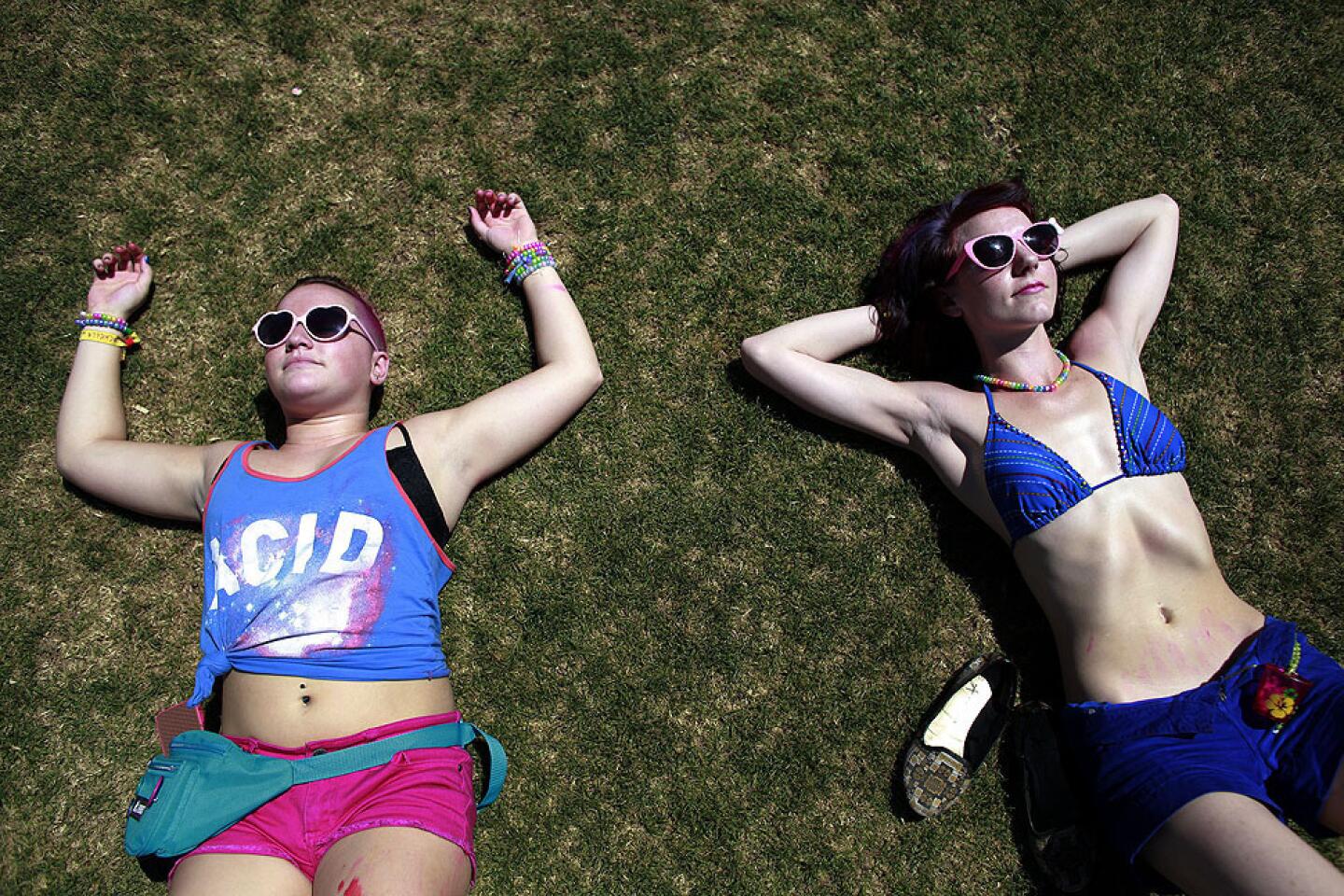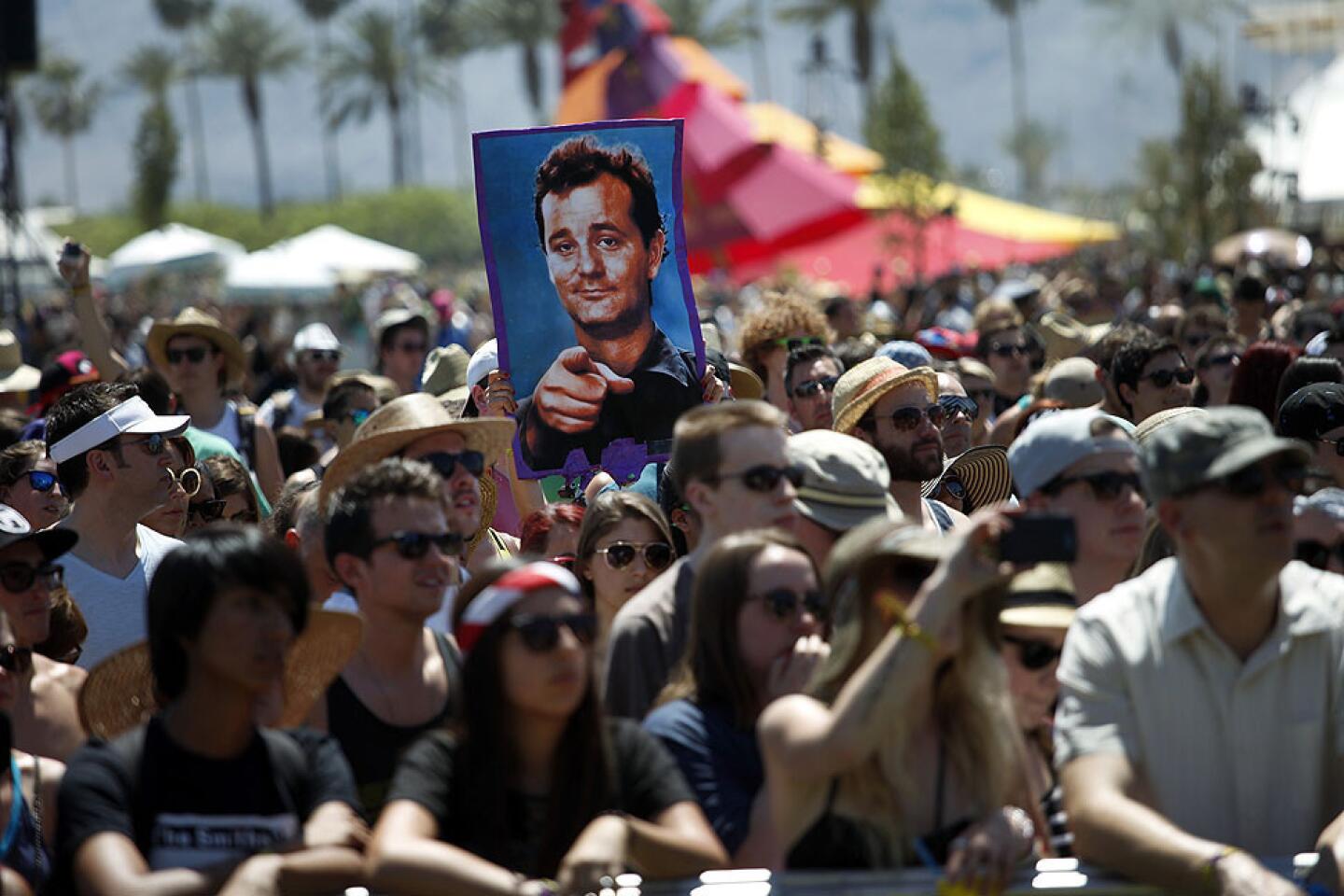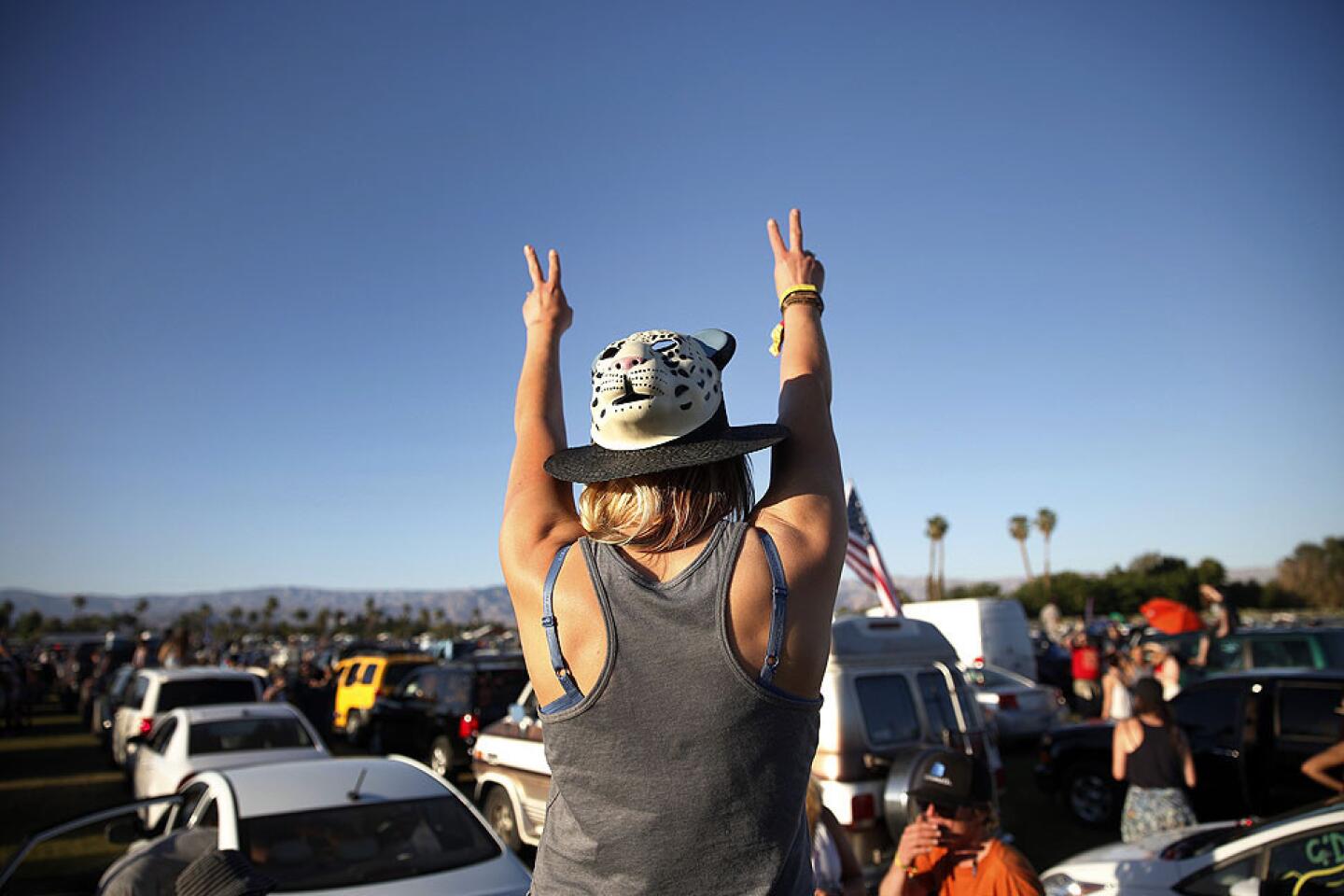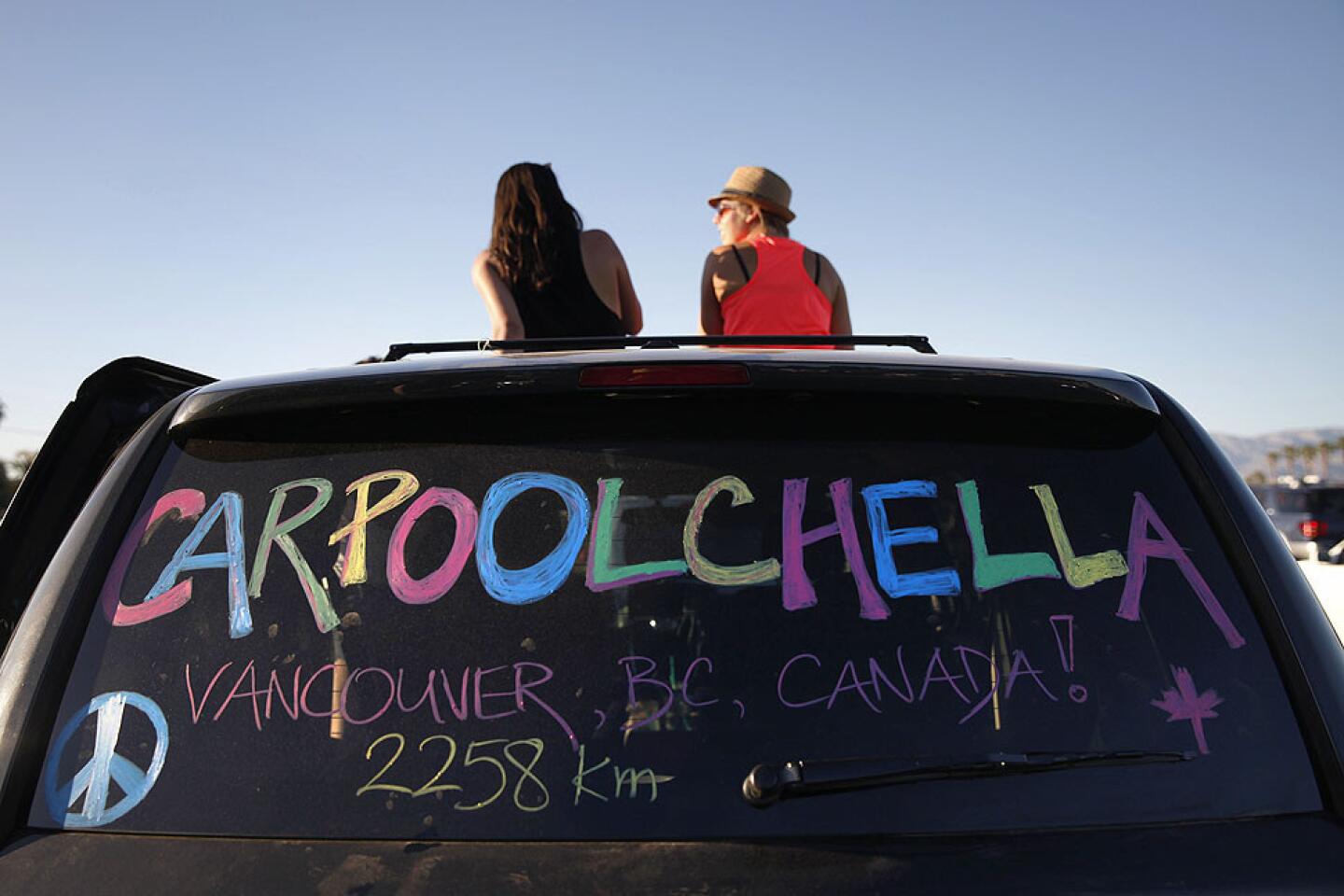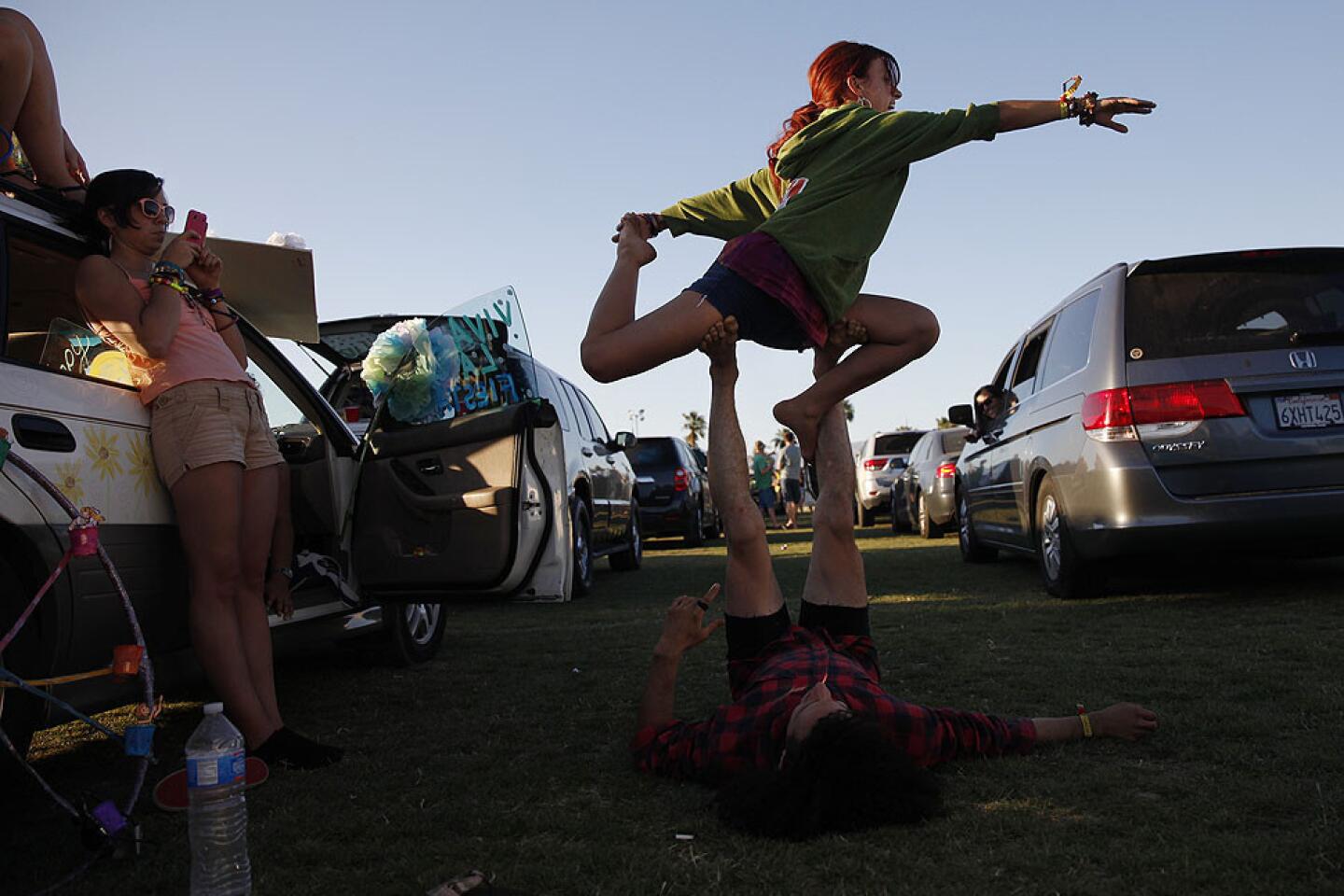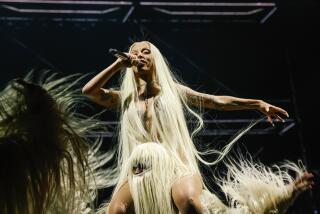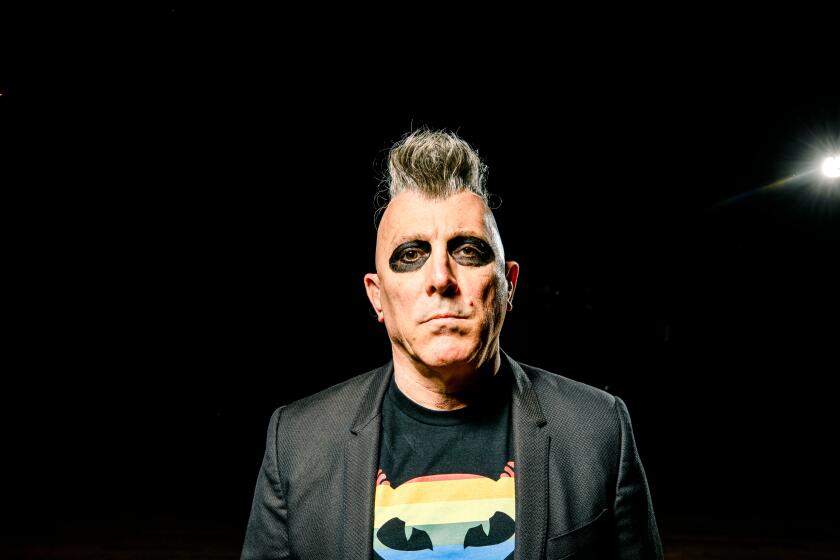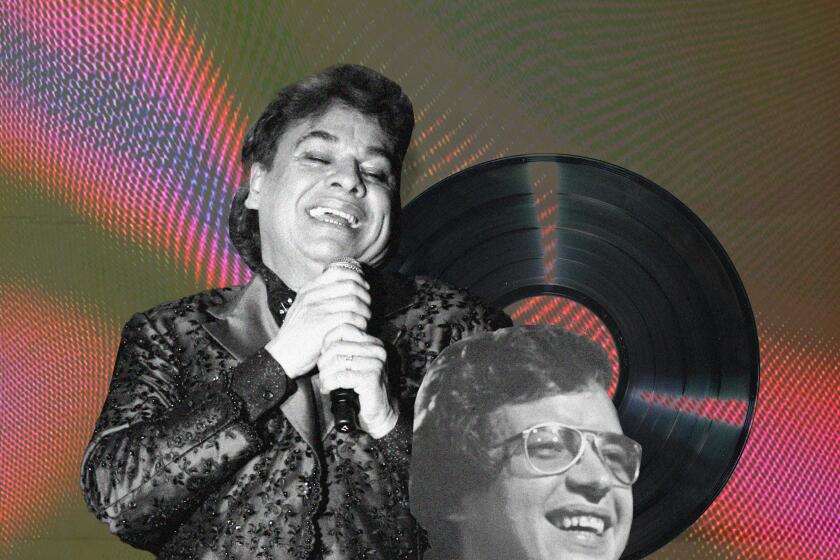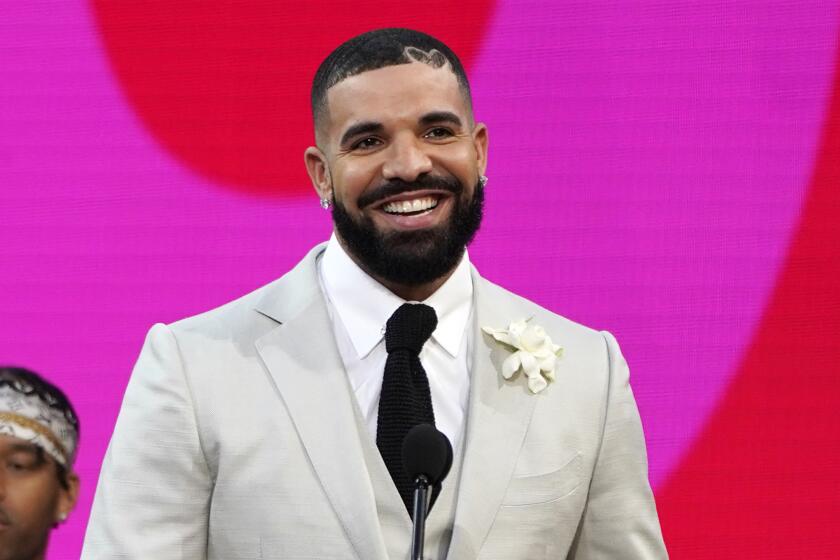Coachella awaits the next artful spectacle of sight, sound
The recent history of the outdoor concert, from a performance perspective, begins with a pyramid. Two Frenchmen known as Daft Punk constructed a massive video-and-computer-enhanced object that blew minds at Coachella 2006 with its gradually unfolding light-and-image show.
The pyramid not only made their electronic dance music more visually arresting, it provided a shiny new model for staging music. Witnesses still gush when they talk about how the show married sound and technology to create an event equal parts outdoor art installation and concert. It was a generational moment that acts dream of one day equaling.
Coachella 2013 marks not only the beginning of the annual concert season, but offers bands an opportunity to try and create a similar viral moment that resonates globally.
COACHELLA 2013: What to see and do | Timeline | Full coverage
The festival has become known as much for the visual representation of sound as the noise itself. There was Flaming Lips’ “Wayne Coyne in a bubble” walking across the crowd in 2004, Muse’s pillars of light in 2010, Arcade Fire’s floating globes a year later and one that truly blew up digitally: the “hologram” of Tupac Shakur that “performed” last year during Snoop Dogg and Dr. Dre’s set.
This weekend, as all six stages webcast live, more and more of the music world will experience the acts as they happen. This changes the whole scale of a performance. The goal of creating something that moves across many platforms simultaneously has increasingly led artists behind large-scale festival performances to try and convey emotion not only through music, but through the visual manifestation of that music as delivered onto screens.
By offering myriad opportunities for artists to experiment with performance technology and make a memorable statement, Coachella Music and Arts Festival helps set the cultural tone for the year.
Daft Punk won’t be in the desert this time, so such artful spectacle will depend on other artists seeking buzz not only on one of the festival’s six stages, but through the Internet broadcast, via social media and YouTube uploads.
How will the Yeah Yeah Yeahs introduce their new album in a live setting, and what (or who) will Karen O wear? In what form will Trent Reznor and longtime set design collaborator Leroy Bennett visually unveil his long-simmering How to Destroy Angels project? Will the Red Hot Chili Peppers wear interactive tube socks?
Techno producer Richie Hawtin has seen a lot of Coachella moments. He performed under his Plastikman moniker at the first Coachella in 1999 and a handful of times since. In 2011 he presented his “Plastikman Live” show with the aid of an iPhone app he and his team developed.
The sophisticated app connected fans at the gig and fans online and allowed revelers at the venue to interact with Hawtin’s tracks at key moments. “What they heard and saw was actually controlled more by the crowd than by me,” said Hawtin.
For 2013, EDM superstar Bassnectar will unveil a new stage show that further connects audio and video; the producer will be controlling sight and sound simultaneously.
When Reznor, best known for his work as Nine Inch Nails, was planning the release of his new project, he and his collaborators made key roll-out decisions based on their upcoming Coachella performance. “We thought, if we were going to play this live, let’s go all out and do something spectacular,” he said. “We ended up coordinating the release of the album, which had been done for a while, around a big event.”
The reasoning, he told me during rehearsals at his work space in the Valley, was that Coachella “feels a bit more global, rather than the cool venue that no one heard of — an event no one knew about until it was over. And then you see a bad cellphone version and go, ‘That’s cool. I wish I would have seen it.’”
How to Destroy Angels, Reznor said, “didn’t feel rock-band adaptable, so we’ve aimed for something that’s almost like an installation-esque sort of experience.” Attempting to clarify, he added: “We’re projecting onto a surface that we’re kind of translucently encased in.” And though he carefully leaves certain details to be revealed onstage, he said, “It’s not going to be a visceral, sweaty rock show. It’s going to be a different kind of thing.”
Reznor, Bennett and How to Destroy Angels tested the new set at the Fox Theater in Pomona on Wednesday night, and this “different kind of thing” was indeed a wonder of design and presentation. For much of the night the group performed behind a delicate curtain woven with prismatic lights, layered and folded to create depth. Light, projections and rhythm interacted seamlessly; squiggly synth lines triggered sputtering strobes. The curtain at one point went fuzzy like television static as feedback resonated.
The presentation suggested as much an installation by modern light sculptors James Turrell and Robert Irwin as it did a concert design. And like their work, it offered a kind of sensual wonder, which at the Fox drew gasps from the sold-out crowd — as it surely will at the festival’s Gobi Tent.
As with an art installation, the challenge is how to create honest connection through immersion, even when great distances must be overcome. “You can move people emotionally virtually, or by a screen, but it doesn’t automatically happen,” said Hawtin.
After all, musicians for generations managed to make a mark without the help of high-tech gear. I can make a case that the best place to get lost in music is in my listening room, alone, with world-class equipment.
“We need those shows” said Hawtin, “but we also need to balance it out with great, raw, energetic performances where it is again more tipped to the music side, and allow people to remember that great moment in any type of music when you’re in the crowd, you hear something beautiful, you close your eyes and you lose yourself in the music for a couple of minutes or a couple of hours.”
Reznor offers another reason he’s going all out at Coachella. “I think a lot of shows are pretty lazy. There’s a lot of competition for your attention now,” he said, adding that many fans are unwilling to be in a lousy venue “hearing a bad version of [their music], uncomfortable with some [jerk] with their phone up in front of you. There’s enough other things to do now that there wasn’t maybe 10 years ago.”
ALSO:
Coachella 2013: Essential tracks
TIMELINE: Coachella and Stagecoach
An autumn Coachella? Promoter talks potential festivals
More to Read
The biggest entertainment stories
Get our big stories about Hollywood, film, television, music, arts, culture and more right in your inbox as soon as they publish.
You may occasionally receive promotional content from the Los Angeles Times.
